
Sailboats You Can Row (Complete List)

Last Updated by
Daniel Wade
August 30, 2022
There are plenty of sailboats that have distinct features that separate one from another. In fact, there are some sailboats you can row and others you cannot.
Some smaller sailboats are grouped into this category, like the dinghy, dory, and rowboat. But which sailboats are ones you can row?The ones listed below are an excellent place to start in search of a sailboat that you can row. These boats you can row without compromising your sailing experience. Other brands have similar features, but these stand out to the rest in the industry.
The best sailing rowboats are:

Chesapeake Light Craft
While most of these options are going to be smaller boats, each one will serve its purpose on the water. These boats have a respectable price point and allow you to have the best of both worlds when it comes to sailing and rowing.
According to experienced sailors in the industry, you want to know the differences between what your boat can do and cannot. For sailboats that you can row, you will see exactly what they are intended to do versus a cruiser or other sailboat.
Table of contents
Best Sailing Rowboats
There are a lot of factors that go into a sailboat being the best rowboat. Depending on the brand, size, cost, and desired use, many will compete for your business.
While there are potentially more brands out there, these sailing rowboats make the cut based on consumer reports and quality. In addition, they all have a rich history in the sailing rowboat market so you can rest assured you are dealing with high quality craftsmanship.
Angus Rowboats
The Angus Rowboats have been in the business since 2009 when a married couple, Julie and Colin Angus, decided to put their adventurous minds together. In doing so, they have literally accomplished every rowing feat you could possibly imagine and have put that experience to good use when designing boats.
The Sailing Row Cruiser is arguably the best boat that they offer in terms of versatility. This boat was designed with the same racing hull but they gave it a ketch sailing rig with planing amas.
When sailing, this boat can reach up to 12 knots. As for rowing in calmer waters, you can expect to reach up to four knots or so.
The main hull can be utilized as the focus of rowing for one person, while the other hulls can contain passengers. When anchored or docked, this boat can also sleep an adult in the cabin.
Looking at costs, it is $1300 for the Row Cruiser Hull and $1820 for the sailing components. To have it all put together, you can have it completed for $3500.
Chesapeake Light Craft (CLC) has been dominating for decades in the rowing boats industry. Back in 2020, they were shipping out their 40,000th boat kit.
They have a fairly small staff compared to other big name brands, with just over 20 employees. When it comes to building row boats, they have excellent experience.
They have a handful of sailing rowboats to choose from. These include:
Passagemaker Standard
Northeaster dory, jimmy skiff ii, eastport nesting pram.
This boat is one of the easiest to build, row, and sail. If you are in the market to build your boat with the kit, this is an excellent choice for first timers. You can expect this to cost around $1200 and up depending on the added features.
This rowing boat is slightly bigger than the Skerry, as it holds up to three people. If you want something lighter, this boat weighs roughly 90 pounds compared to heavier dinghies. The cost to build this boat is around $3200 and up depending on added features.
One of the more versatile dory boats out there is the Northeaster. This one offers a substantial payload of 800 pounds to carry plenty of gear and a few passengers. This classic looking boat will range in cost, starting around $3600 and more with the sailing components.
The original Skiff was designed in 1998 and had a lot of success. Over the next 20 years, the Jimmy Skiff II was designed with better handling, more comfort, better seats, and is 15 percent larger. You are looking at $3700 or more to add the sailing components to this boat.
This dinghy is just under eight feet, so it is light and compatible for anyone wanting to get on the water. These carry a decent load while also being able to sail. The price to add on the sailing components will cost around $2200 or more.
The Norseboat brand prides themselves as the “Swiss army knife of boats”. They offer three sailboats that you can row, which include the Norseboat 12.5, 17.5 Classic, and the 21.5.
Each boat offers unique features that can suit any sailor's tastes. They all are well built and are fast, but the size could make the biggest difference. The prices range from $13,000 to $35,000 depending on size and features.
Norseboat 12.5
This cruiser/tender offers the perfect blend of functionality and performance. Most view this one as just a dinghy, but it can be easily used as a daysailer while rowing. The sailing components are a gaff-rigged cat with a pivoting carbon mast.
Norseboat 17.5 Classic
The best selling Norseboat in their lineup is the 17.5 Classic. This design was the first one made in 2002 when founder Kevin Jeffrey made it happen.
This rig is around 18 feet and can be put through tough conditions while sailing. While sailing, you can expect around eight knots and around three knots while rowing.
Norseboat 21.5
The 21.5 is the best daysailer and coastal cruiser they offer with high performance. This one is just under 22 feet long and can sit up to eight people comfortably.
The sailplan is a sloop rig with a pivoting carbon mast and furling genoa. Whether you are sailing or rowing, you can have the best of both worlds with this design.
Whitehall rowing boats have a unique perspective on rowing. They emphasize getting back to nature and being more outdoors, which their brand nails on the head perfectly.
Their Classic Whitehall Spirit 17 sailing rowboat is one of the best sailing rowboats you can find on the market. Whether you are a beginner or seasoned professional, you can definitely navigate comfortably.
This one allows you to visit shallow waters with its kick-up rudder and easily move your camping gear or picnic supplies with ease. It also does not take long to set up and can easily be swapped from sailing to rowing when needed.
They pride themselves so much on their craft that they claim it will easily last for 100 years, assuming you take care of it. With their built in buoyancy, it is arguably very hard to sink too. You can find this boat starting around $37,000.
Lite Boat XP
Lite XP offers an interesting sailing and rowing experience. These designs are arguably some of the more appealing ones, but they also take into account confort and performance.
The Lite XP 20 has a small cabin to hold two people and you can even sleep on. This is also a perfect size to carry enough belongings to travel for a few days. The price begins around $26,000.
The other one they feature is the Lite XP 16, which is slightly smaller than the 20 and is considered a dinghy. Essentially the same features, you are only missing out on a few feet and storage space. This one costs around $15,500.
Why People Want to Sail and Row
For quite some time, it seemed almost impossible to find a boat that you can sail and row. Sure, many boats are excellent at one or the other, but not many are great at both.
Depending on the brand you choose, you can have high quality aspects of both without compromising on either of those features. However, the price could be the biggest influence in your decision.
The real reason sailors want to incorporate both is that you can be a little more active in nature and still have a great sailing experience. When the wind dies down and sailing is not as attractive, you could opt for rowing instead.
If you have multiple people on board, this can create an excellent bonding experience for families and friends. You are likely going to need everyone’s help at some point on board, so turning this into a friendly experience is great.
While some sailing rowboats are smaller in size, there are a handful that can accommodate a few people to sleep in. Depending on your traveling situations and location, you could travel in these for days if you plan your routes accordingly.
How to Find the Perfect Sailing Rowboat
Before taking a loan or having your money ready to buy a boat, you first need to understand your desired use of a sailing rowboat. You need to know where and how you will use it.
A combination of many things will affect the process of your decision. This boils down to your main sailing purpose, how often you intend to row or sail, the passenger loads, and if you intend to sleep on it.
If you plan on sailing roughly 65 percent of the time and rowing for about 35, then a Norseboat or Jimmy Skiff II is ideal. If you primarily want to row but like the added feature of a sail, then sticking with a Northeaster dory, Eastport Nesting Pram, or Skerry might be right for you.
Some sailing rowboats might incorporate a motor, whether it is to be used for safety or speed. Regardless of how you use it, it could affect the overall performance of the boat.
Price ranges might be one of the biggest factors in some sailors getting their hands on certain brands. While expensive does not necessarily mean the best, there are quality options to consider when looking for the best sailing rowboat, such as comfort and luxury.
The dinghies or smaller sailing rowboats are going to be the cheapest options. If you can build them yourself, you can actually save a few thousand dollars.
Sailing experience is another thing to keep in mind before jumping into a boat like the Norseboat 21.5. If you have little to no experience, you might want to consider a smaller boat or something a little easier to operate.
Should You Build or Buy Completed?
There is nothing wrong with choosing a smaller, cheaper dinghy to get things started. This way you can learn the basics of sailing and understand how to use the sail but also incorporate rowing without breaking the bank.
If you want to save money, one of the best things you can do is order the build kits online and construct them yourself. They have building plans that you can follow and some only take roughly a week to put together depending on the size.
Building your own sailing rowboat from a kit can be a lifelong rewarding experience. As long as you have a basic understanding of common tools and can follow instructions, you can put together these boats.
If you like a specific brand but do not want to order their kit, most will have their build available for purchase. Just keep in mind that you will have to source all of the materials yourself and it could potentially take longer to find everything you need.
With that being said, you are likely limited to what size you can put together yourself. Unless you are more experienced in building boats, you might not be able to put together some of the bigger sailing rowboats.
Whichever method you choose, the biggest difference between buying or building is time. Of course the money is a large factor, but time building could be several weeks if you are dealing with a complicated build.
Related Articles
Do Sailboats Have Motors?
How to Dock a Sailboat
I've personally had thousands of questions about sailing and sailboats over the years. As I learn and experience sailing, and the community, I share the answers that work and make sense to me, here on Life of Sailing.
by this author
Most Recent
Important Legal Info
Lifeofsailing.com is a participant in the Amazon Services LLC Associates Program, an affiliate advertising program designed to provide a means for sites to earn advertising fees by advertising and linking to Amazon. This site also participates in other affiliate programs and is compensated for referring traffic and business to these companies.
Similar Posts
Popular posts.

Best Liveaboard Catamaran Sailboats
December 28, 2023

Can a Novice Sail Around the World?
Elizabeth O'Malley
June 15, 2022

4 Best Electric Outboard Motors

How Long Did It Take The Vikings To Sail To England?

10 Best Sailboat Brands (And Why)
December 20, 2023

7 Best Places To Liveaboard A Sailboat
Get the best sailing content.
Top Rated Posts
Lifeofsailing.com is a participant in the Amazon Services LLC Associates Program, an affiliate advertising program designed to provide a means for sites to earn advertising fees by advertising and linking to Amazon. This site also participates in other affiliate programs and is compensated for referring traffic and business to these companies. (866) 342-SAIL
© 2024 Life of Sailing Email: [email protected] Address: 11816 Inwood Rd #3024 Dallas, TX 75244 Disclaimer Privacy Policy

- Skin on Frame
- Row Facing Forward
- Row Boat Plans
- Free Row Boat Plans
- Sliding Rigger Rowing
What is a rowboat?
Rowboats, as opposed to canoes and kayaks, are propelled by oars that are held in place at a pivot point attached to the boat, the oarlocks (also called rowlocks). These pivot point do not change their position as the boat is rowed. This pivot point is a fulcrum if the oar is a lever.
Rowers typically face the stern of the boat. Various clever mechanisms have been tried to allow the rower to face forward but none so far have been widely adopted
Here is the page I wrote on forward facing rowing.
Some boats are rowed facing forward such as Venician gondolas, or Chinese sculled boats. There is also a long tradition of fishermen in the Canadian and US east coats facing forward and leaning on to their oars. They are generally standing and using an extended oarlock stem. Since this is a practical way of rowing I'm sure it occurs throughout the world.
I can't beat John Gardiner's own words in Selecting and Building Classic Small Craft
...rowing becomes to some extent an end in itself. Ideally the oarsman and his boat act together in a harmony of motion and balance not unlike a similar unity of response and action achieved by the equestrian and his mount.
To get to the point of feeling this way when rowing, you have to have a suitable rowboat, and be comfortable rowing her.

What makes a good rowboat.
As usual the answer is "it depends"
There is no ideal rowboat that will satisfy perfectly in all conditions.
It follows that the most important questions to answer first is: where will this rowboat be used and to what purpose? Once that is clear then choices can be made.
Some factors that have to be considered are waterline length, carrying capacity, stability, windage, weight, seaworthiness, beam, shape of the ends, trim, rocker and more. There is also issues of cost and construction difficulty that come into play. Another issue that has a huge impact on choice of a recreational craft is appearance.
Long vs Short Rowboats
Length is one factor that is easy to assess. Longer (within reason) is almost always better. Other things being equal a longer boat is faster and easier to move. It's no surprise then that rowing shells, which are designed with speed as the most important criteria, are long needle sharp crafts that can slice through the water.
Hull speed is the theoretical speed a non planing boat can travel. It is dependent on the length of the boat. A boat cannot travel faster than the wave she creates as she moves forward. The speed of that wave is 1.34 X the square root of l. L is the length of the wave from crest to crest.
Here is a link explaining hull speed.
We have all seen small boats with an overly large motor. As the speed increases the bow goes higher in the air as it tries to climb over its wave. This wastes a lot of energy and adds practically no speed.
Sliding or Fixed Seat, or Sliding Rigger
Here is my page on sliding riggers with some links to you tube videos.
Sliding Rigger has a page explaining their system.
Small or no Transom
To slice through the water, most rowboats are double ended or have very small transoms. Often the transom is so high that it is out of the water and the boat is essentially double ended below the waterline.
A large strong transom is essential to support the weight and force of a motor. A rowboat has no such requirement and can dispense with the transom with no loss. By avoiding the wide back end causing eddies behind the boat, the drag of the blunt end is avoided and the boat moves more easily.
Many very nice rowboats have transoms above the water line. This has the advantage of supporting the weight of passengers as they move in the back. Double ended boats can't support a lot of weigh front or back making them less stable.

Freeboard and Windage
The height of the sides outside of the water or freeboard has a large effect on a rowboat. If the freeboard is high, the boat will be safer in rougher water and will not swamp easily. The downside is that the wind will push against the sides of the boat and make it difficult to handle.
Banks dories have a bad reputation when it comes to windage. They are notoriously difficult to row when the wind is up and they are not weighted down with fish. The high sides that gives them their high carrying capacity and the ability to handle rough seas makes them unpleasant in high wind.
My Skerry is a good rowing/sailing boat but when the wind picks up the relatively high sides make it difficult to keep the boat going in the right direction.
Rowing shells are at the absolute extreme end of the spectrum. They are made with the lowest possible sides both to minimize weight and windage. This makes them very unsafe as soon as the least waves build up and threatens to swamp them but this favours speed.
Back or Forward Facing
Most traditional rowing is done sitting facing the back and pulling on oars. The boat then moves forward in the water. The rower does not see the direction of travel. Some fishermen have extra long oarlocks that allow them to stand and push on the oars while facing forward.
Several systems have been developed over the years to allow the rower to sit facing forward for added safety and enjoyment. Typically the oar is articulated in the middle and a mechanical system reverses the motion of the oar. Several models were available from Victorian times onward. Gig Harbor has a forward Facing Rowing system.
Although the weight distribution is important in the trim of the boat or how it sits on the water, weight is not a huge issue. Of course extreme weight is a disadvantage, but so is extreme light weight.
A rowboat benefits from moderate mass to keep it going after each stroke. This is particularly true if the boat is being rowed in waves. A very light boat tends to slow down as soon as the oar stroke is finished, a heavier boat continues to move forward. The inertia keeps it going more smoothly and create a more comfortable ride.
There are many advantages in very light crafts that make them a delight to launch and transport as well as making them responsive and quick but they are not heavy weather crafts.

Keels and Skegs
Deeper keels and skegs tend to keep a boat running on a straight course. If the main purpose of the boat is open water rowing then it will benefit from a keel.
Photo by Silje L. Bakke A keel will make the boat more difficult to turn but it will track well.
If the keel is particularly deep at the fore end of the boat, it will track nicely but will behave poorly if it needs to be towed. It will also be poorly behaved in surf. For these purposes a rounder bow is preferable to a v shape.
Rocker vs Flat
Rocker adds stability and makes the boat easier to turn but is a poor performer if the boat has to be beached. Flatter then is an advantage.
Many successful rowboat shapes feel "tippy" when you get into them but when you try to deliberately swamp them they resist valiantly. At first they easily lean over but then they stiffen and resist with considerable secondary stability.
A nice rowboat will feel lively and responsive. If you are inexperienced this might make you uncertain at first. Soon you get to trust your boat.
Rowing shells are quite the opposite. They have been designed to be fast at the expense of everything else and have very little material above the water line, to make them stable. Balancing the little thoroughbred boats is the first skill that is learned.
Getting a Rowboat
Because there is very little demand for good rowboats there are very few being manufactured. Typically a boat is designed to sport a motor and oarlocks are added to also make it a rowboat. Although such a boat might be moved by oars it will never be a pleasure to row.
Most boats built and advertised for rowing are subject to compromise to make them easier to transport. In particular they are shortened beyond what is ideal.
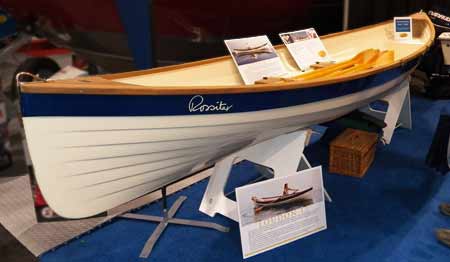
I noticed this rowboat being offered at the Boat Show. It is 17 feet long, has 3 rowlock positions, adjustable seats and footrests. Glass construction but with wood trim. It was a pretty boat and seemed a nice alternative. Rossiter Boats rowboats. They had several models.
Fine rowboats are also being built by smaller shops. Check out Cottrell Boatbuilding. They offer a lovely range of wooden rowing boats.

Whitehall Rowing & Sail has a whole range of rowing and sailing boats. They also have a rowing attachment for SUP's.
They offer both fixed seat rowboats and rolling seat skulling boats.
Building your own rowboat
Building a rowboat is one area where home builders have an advantage. Home builders are not compelled to make compromise to make their boats more attractive to a larger audience. By making their own boats they can identify the features they want and can produce a boat completely suited to their needs. Homebuilders can also afford to spend the time to finish their boats in a nicer way.
Chesapeake Light Craft has a nice looking whitehall style rowboat which they call a Chester yawl.
John Gardiner in his book Building Classic Small Craft, Complete Plans and instructions for 47 Boats has several row boat offsets. It's a bit optimistic to call them complete plans but it's a really good read and great source of information.
Glen L has a lovely 17' traditional whitehall. It is strip planked.
Fine rowboats are also being built by smaller shops.
Multifunction boat
Although rowboat/motorboat is not often a happy combination, rowboat/sailboat can be more successful. If we all had our druthers we would have a boat for sailing, one for rowing, a kayak, a keelboat, a outrigger and a couple more just for fun.
Many designers have tackled the problem and come up with workable alternatives. My beloved Skerry is a sweet little rowboat when the wind is not too strong. In high wind it has too much windage to be much fun, but who want to row when there is lots of wind!!?
Iain Oughtred's Elf and others are nice rowboats when they are not being sailed.
The NorseBoat calls itself the swiss army knife of boats and their boat have nice lines.
Francois Vivier has a couple of models which are well suited to sailing and rowing. Among them his Elorn and Seil stand out. In French but use google translation if you need to.
Rowing and Rowboat Vocabulary
As in all aspects of boating, a special vocabulary has developed. Here is my page of Rowing and Rowboat terms. It's a useful resource when reading and researching row boats. It is also a useful page to check out because it gives you an idea of what to look for, and of topics of inquiry.
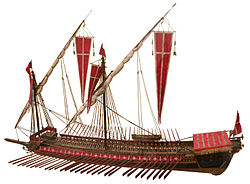
History of Rowboats
Rowboats have been around since early history. Images abound of Phoenician, Greek and Roman Galleys with hundreds of oars.
Viking ships were also equipped with oars. Many of the smaller viking and Scandinavian boats such as faerings were propelled using oars and sail. Faering refers to 4 oar positions.
Rowboats large and small are ubiquitous throughout the middle ages and a walk through any art gallery will produce many examples.
Closer to our times, fishermen and ferrymen have used countless variations of rowboats.
Whenever more than one rower meet there is bound to be competition and thus there are many regional festivals throughout the world where rowboat races are an attraction.
The shape and development of rowing craft follows the intended use and the conditions of the waters. Fishermen and ferrymen developed their dories, peapods, wherries, whitehalls, bateaus, surf boats and countless variations to answer their needs.
When sportsmen adopted rowing, design emphasis changed from seaworthiness, sturdiness and carrying capacity to speed.
Endurance rowing has many enthusiasts. Long distance dory races are held in St.Pierre et Micquelon and elsewhere. There are also long distance rowing across the Atlantic held in specially built rowing boat.
Here is a Youtube video of a St. Pierre 7 person Dory being rowed in a long distance race.
Row boat Links
Small Print
I don't claim to be an expert in dories. If you want to build one do your homework first.

Row Boat Types: Traditional vs. Modern Designs
Categories Boating
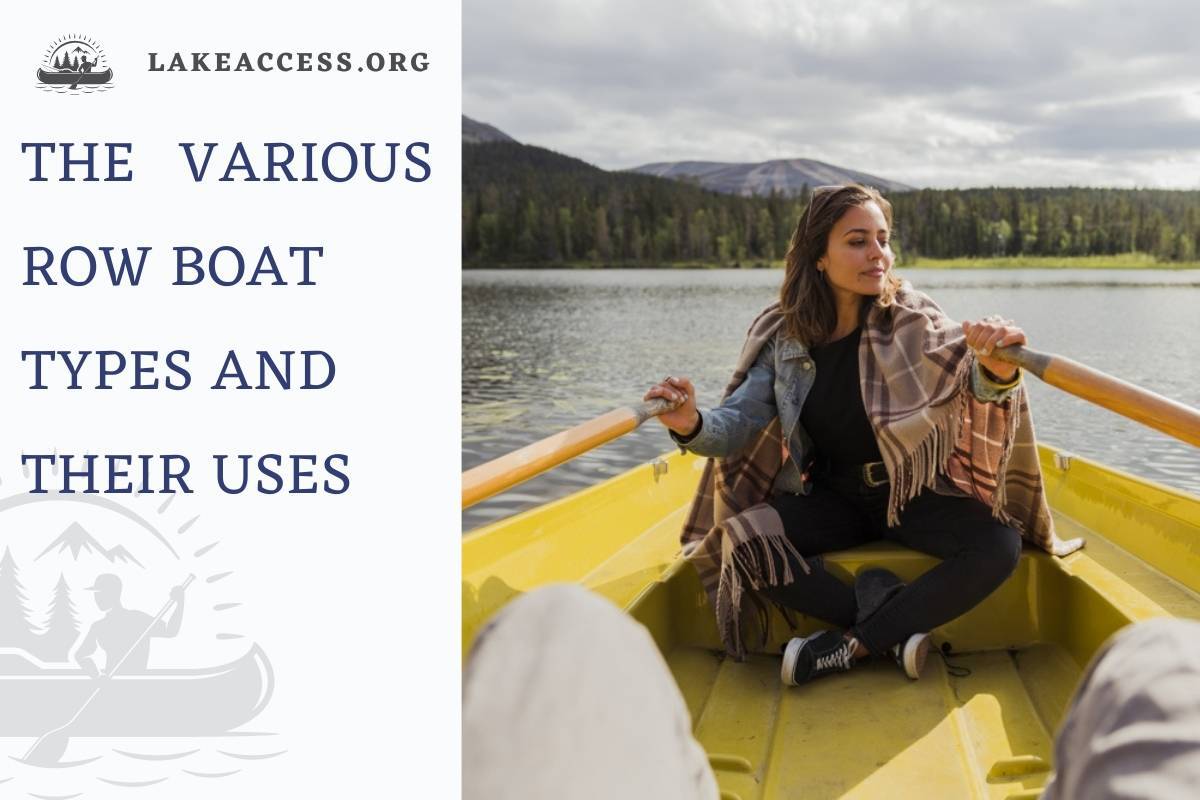
Rowing is an excellent exercise that provides numerous health benefits and is a fun activity enjoyed by many. There are different types of row boats, and choosing the right one for your needs is crucial to maximizing your enjoyment on the water. In this article, we’ll discuss the different row boat types, their unique features, and what they’re best suited for.
What is a Row Boat
A rowboat is a boat that has oars and rows instead of using an engine or motor. These boats are used for fishing, hunting, racing, water skiing, and other activities. A rowboat is made of wood and has an aluminum or wooden frame. The outside is covered with fiberglass, plastic, or canvas. Fiberglass is a type of hard plastic that resists
Depending on what you’re looking for, there are a few different types of rowing boats. For example, there’s the racing shell, which is designed for speed and low impact. Then there’s the touring boat, which is perfect for leisurely activities and can handle a variety of water surfaces. Finally, if you want to do some fishing or take the dog out for a row, consider getting a flat-bottom row boat–they’re versatile and easy to operate.
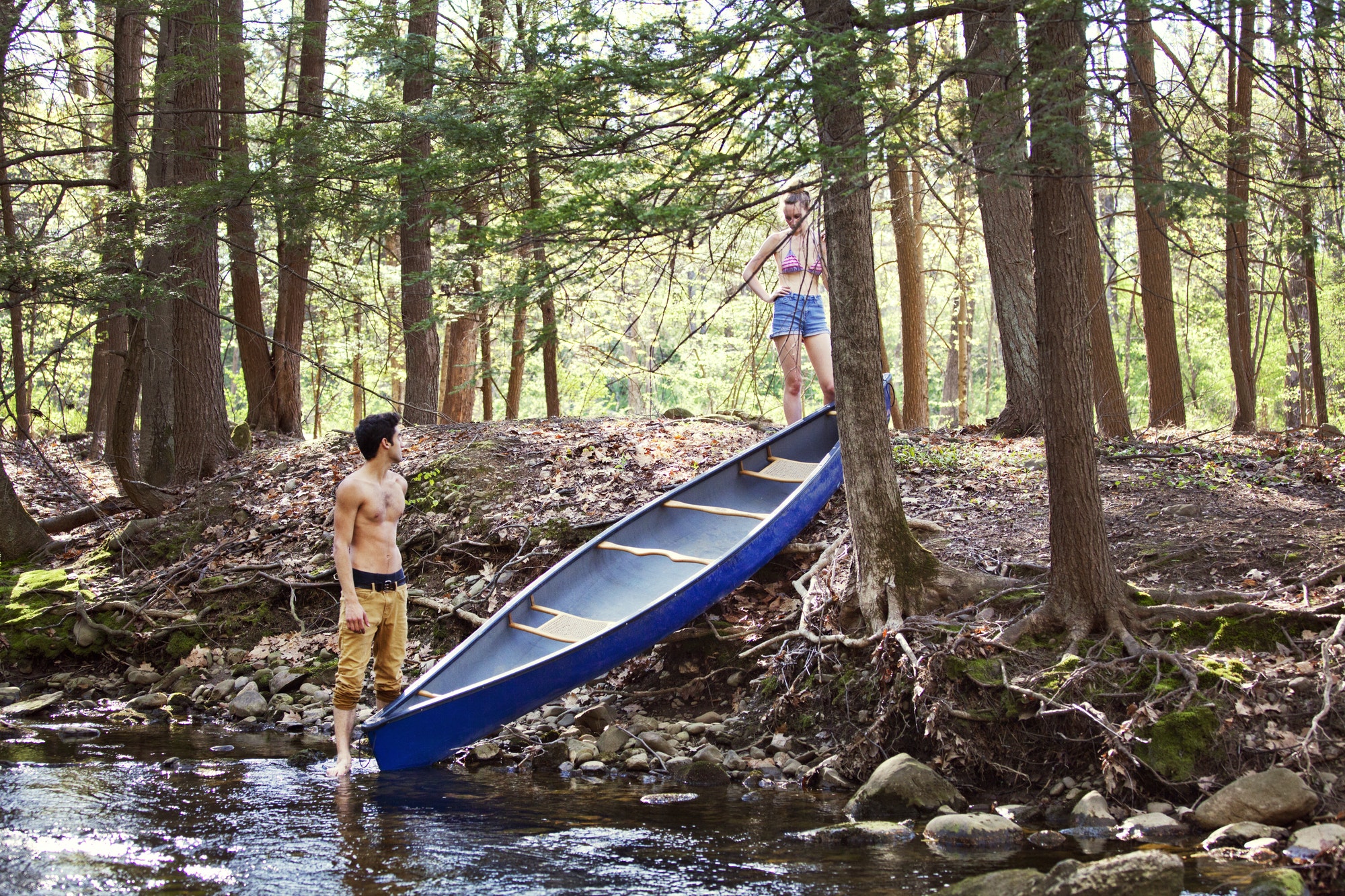
History of Row Boats
For centuries, rowboats have been used for transportation, fishing, and leisure activities. The history of row boats can be traced back to ancient Egypt, where they were used for transportation and trade along the Nile River.
In ancient Greece and Rome, row boats were used for transportation, military purposes, and recreation. They were often adorned with elaborate decorations and used in competitions and races.
During the Middle Ages, row boats were used for fishing, transportation, and trade throughout Europe. They were often made from wood and were powered by oars or sails.
In the 19th century, row boats became popular among wealthy individuals for leisure activities such as rowing and picnicking. They were often decorated with intricate designs and used in regattas and races.
The invention of the steam engine in the 19th century led to the development of steam-powered row boats used for transportation and trade along rivers and canals.
In the 20th century, row boats became more accessible to the general public by introducing fiberglass and other lightweight materials. Today, row boats are used for various purposes, including fishing, recreation, and competitive rowing.
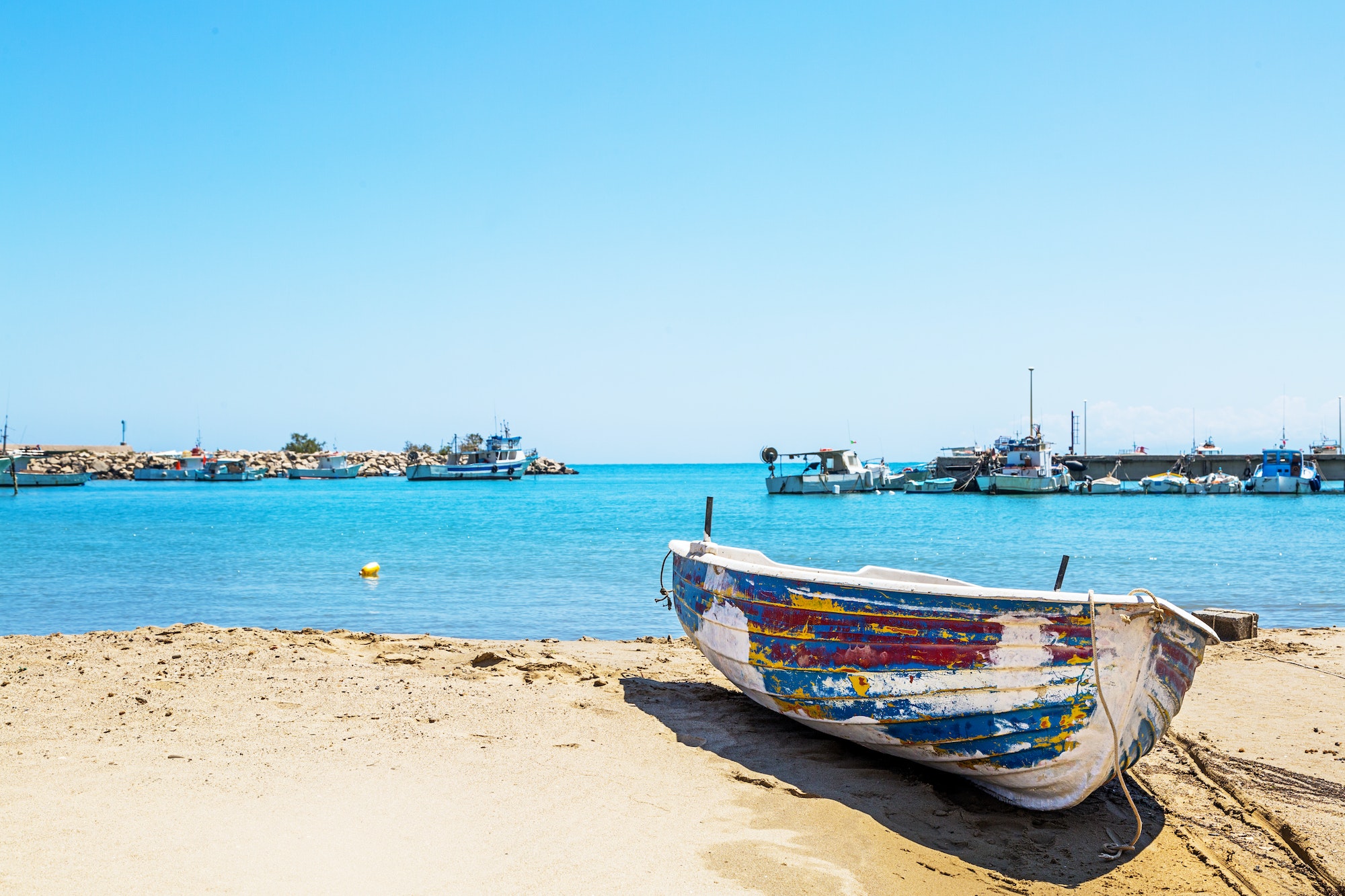
Types of Row Boats
1. recreational row boats, classic row boats.
Classic row boats are elegant, traditional boats with a timeless design that never goes out of style. These boats are usually made of wood, and their construction involves a lot of handiwork, which makes them quite expensive. Classic row boats are not designed for speed or racing; they are perfect for leisurely rowing in calm waters. They are suitable for couples or small groups and are ideal for romantic outings or sunset cruises.
Dinghies are small, lightweight boats that can be rowed or propelled with an outboard motor. They are ideal for short trips and are perfect for beginners. Dinghies are easy to maneuver and can be used for fishing, exploring, or just enjoying the scenery. They are also great for children to learn rowing and can be towed behind a larger boat.
Skiffs are flat-bottomed boats with a pointed bow and stern, making them ideal for fishing in shallow waters. They are designed for stability and carry much gear, making them perfect for fishing trips or exploring small bays and estuaries. Skiffs can be rowed or powered by an outboard motor, making them versatile.
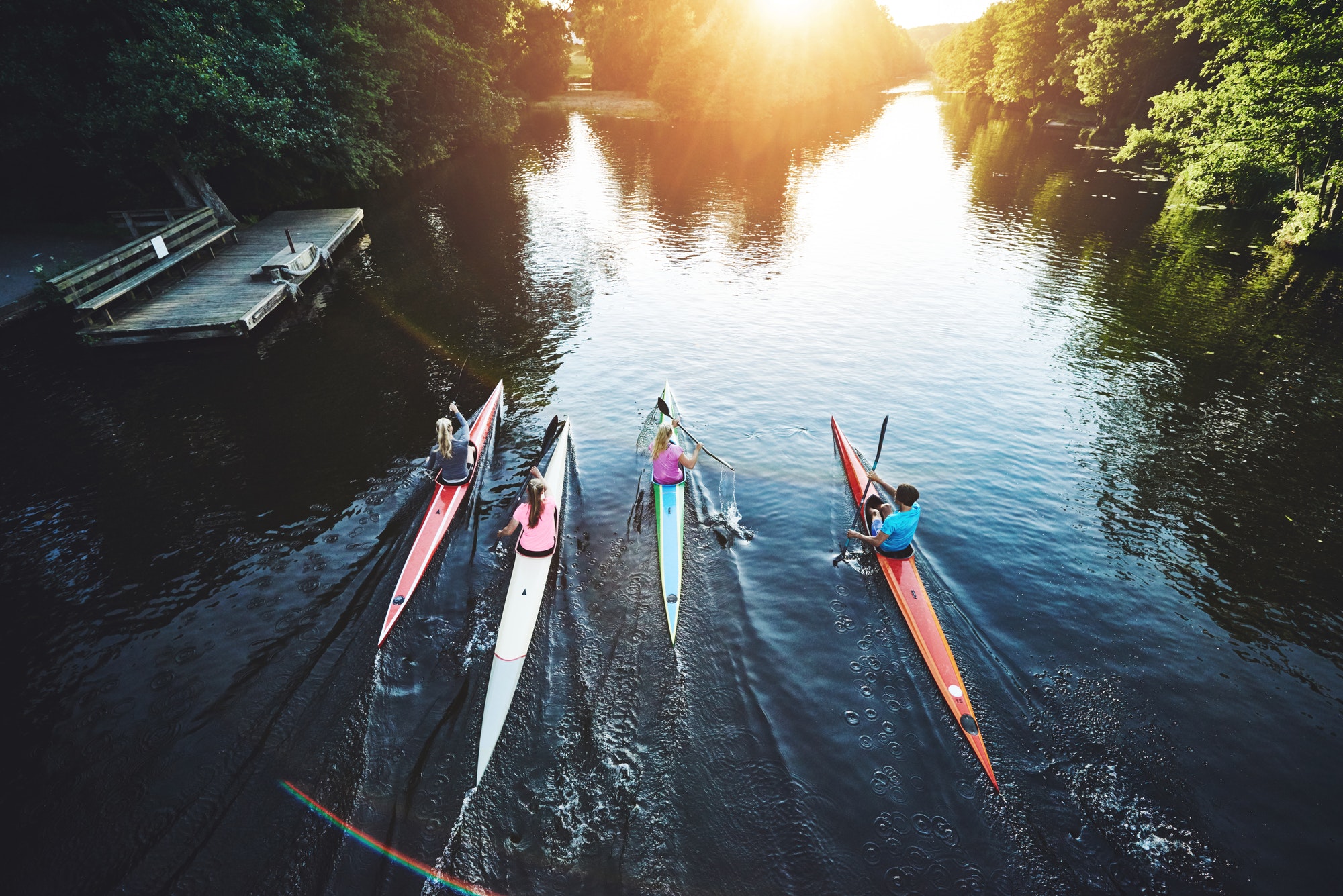
2. Racing Row Boats
Sculling boats.
Sculling boats are designed for racing and have two oars per rower. They are long, narrow, with a pointed bow and stern, and lightweight for maximum speed. Sculling boats can be used for both single-person and team racing and are prevalent in high school and collegiate rowing competitions.
Sweep Boats
Sweep boats are designed for team racing and have one oar per rower. They are longer than sculling boats and can carry more rowers, making them ideal for team competitions. Sweep boats have a coxswain who steers the boat and provides motivation for the rowers.
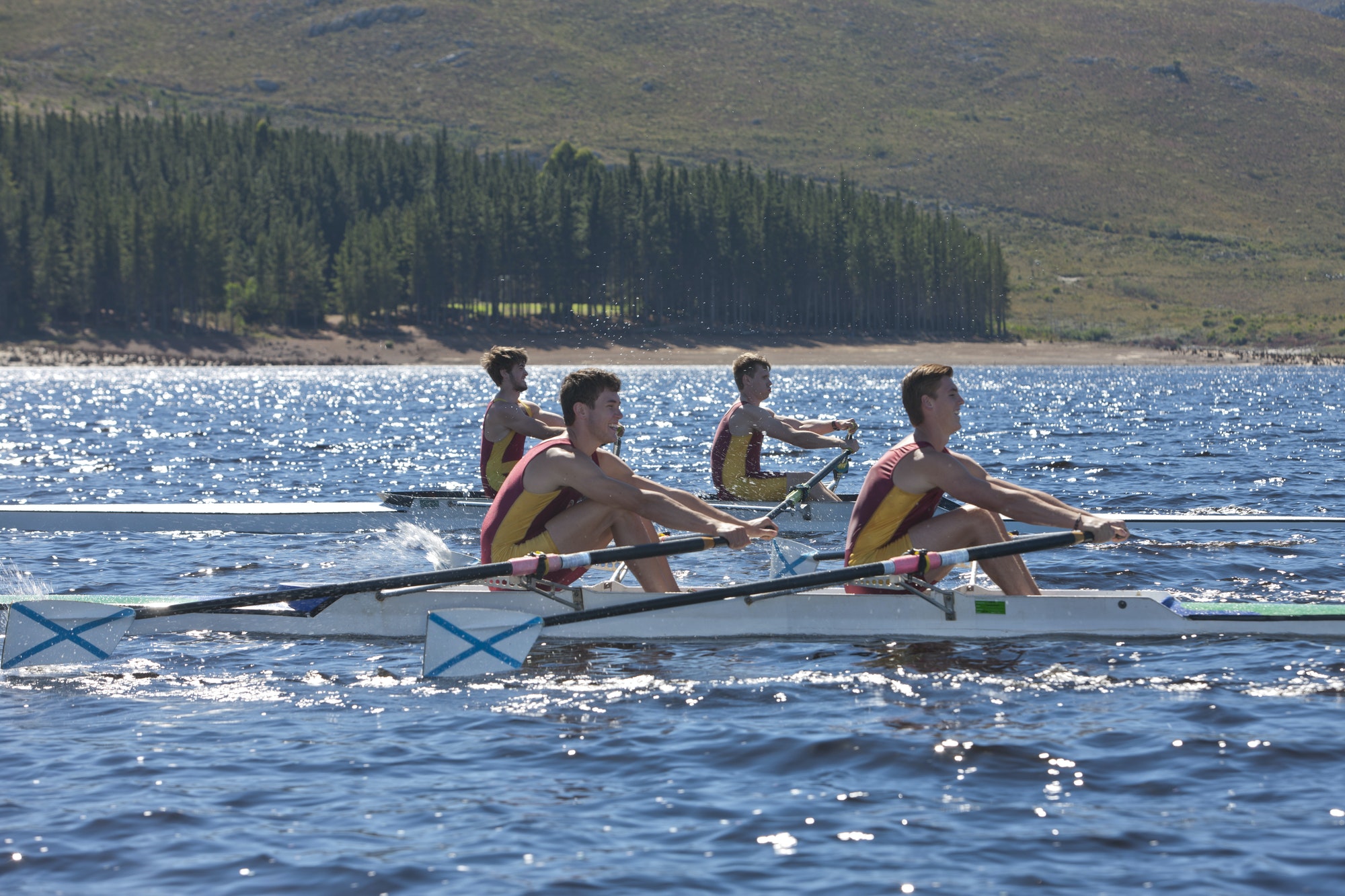
3. Fishing Row Boats
Fishing row boats are designed for anglers and have features such as rod holders, built-in coolers, and live wells for bait. They are usually wider and more stable than other row boats, making them ideal for casting and reeling in fish. Oars or an outboard motor can propel fishing row boats and are suitable for both freshwater and saltwater fishing.
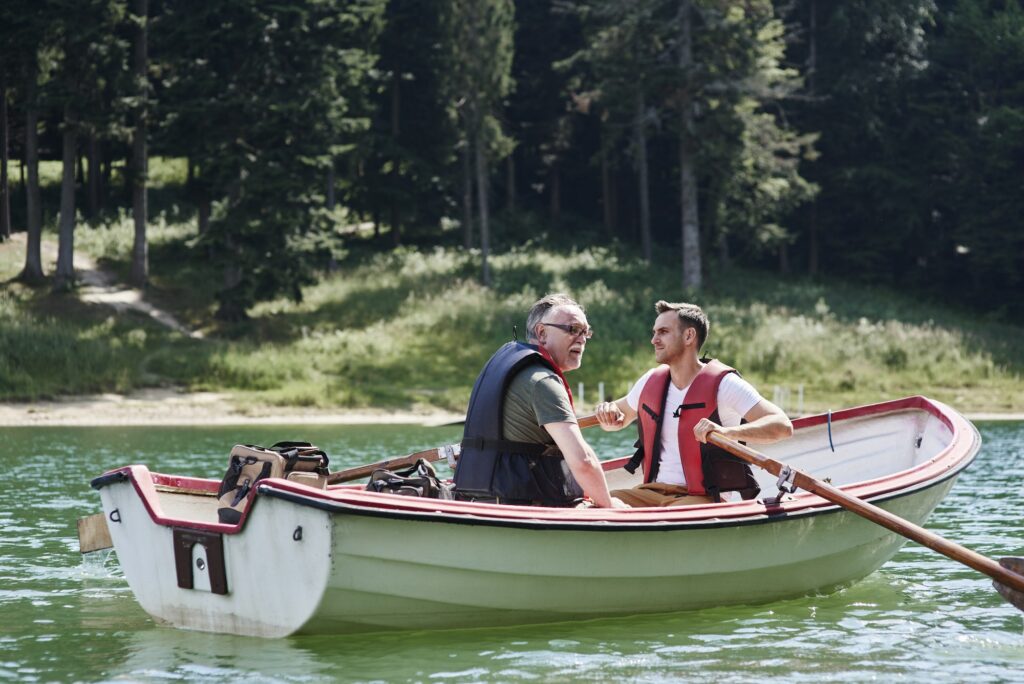
4. Touring Row Boats
Expedition row boats.
Expedition row boats are designed for long-distance rowing and can carry a lot of gear. They are usually made of lightweight materials such as carbon fiber and are streamlined for maximum efficiency. Expedition row boats are ideal for adventurers who want to explore vast water bodies such as lakes and rivers or even cross oceans.
Folding Row Boats
Folding row boats are portable boats that can be easily transported in a car trunk or backpack. They are made of lightweight materials such as aluminum or PVC and can be assembled quickly. Folding row boats are ideal for travelers who want to explore new waterways but do not have the space or means to transport a traditional row boat.
Recreational Touring Boats
Recreational touring boats are versatile boats designed for exploring various water bodies. They are wider and more stable than expedition row boats, making them perfect for casual outings with friends and family. Recreational touring boats are often made of fiberglass or plastic and can be propelled by oars or an outboard motor.
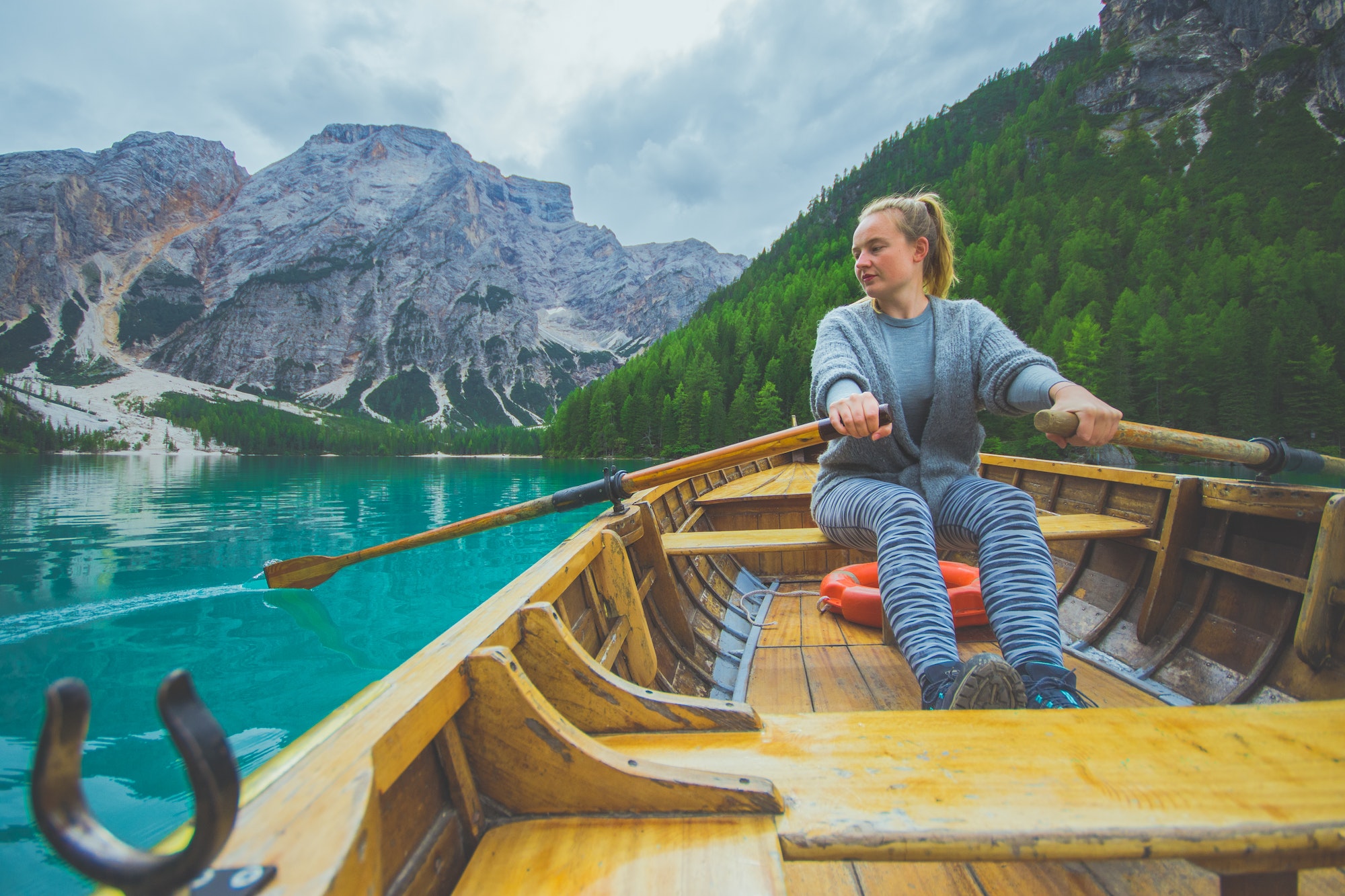
Safety Tips on a Rowboat
When you’re on a row boat, follow these safety tips :
- Always wear a life jacket. They’re accommodating if you fall overboard because they’ll keep your head above water.
- Ensure the boat is in good condition before going out on it.
- Ensure you know how to swim before going out on a row boat. If the boat capsizes, ensure you can get back into it or stay afloat until someone comes to help you.
- Never go out on the boat if it’s too windy.
- If you take a row boat out in the middle of the lake, ensure no rocks or other boats are in the way.
- If you’re going out on a row boat for an extended time, make sure that there is enough food and water with you.
- Make sure the life jackets are correctly fitted.
- Make sure that someone can always swim in the boat with you if you don’t know how to swim.
- Make sure you know how to row before going out in a rowboat.
- If you’re going out on a row boat, ensure you have someone who knows how to row.
- Ensure there are no dangerous animals in the water before going into the water.
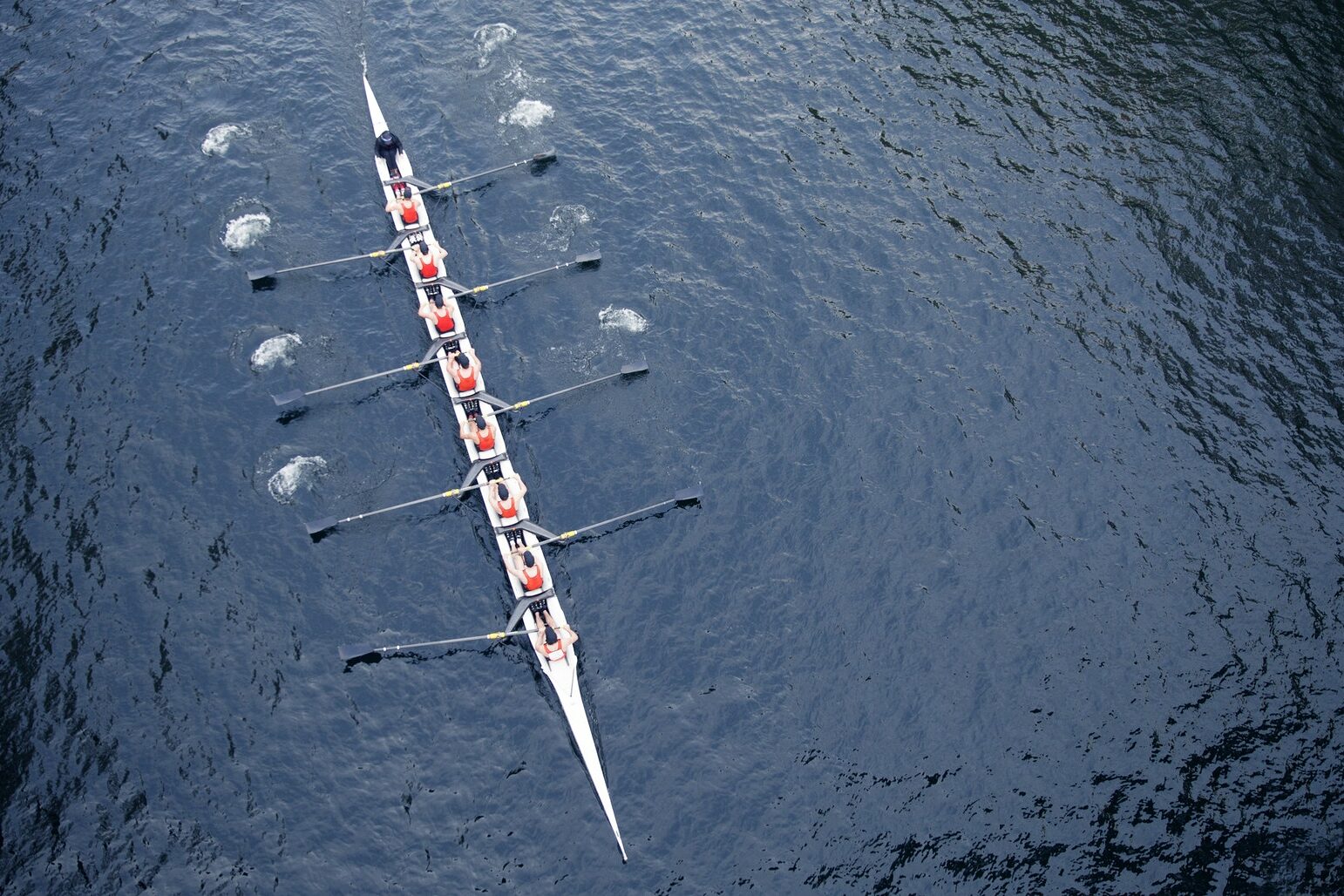
What’s the difference between a Skiff and A Rowing Boat?
Skiffs and rowing boats are both types of boats, but they have different purposes. Skiffs are built and used for racing, whereas rowing boats can be “taken out in the local park.” The main difference between the two is that boats are more expensive and require more maintenance than rowing boats.
Rowing is a type of rowing where athletes row across the water with one oar each. This sport has been around for centuries and is popular in many countries worldwide. U.S. schools and colleges will sometimes refer to the sport of rowing as crew, which is also used in nautical terms for people who operate a boat.
Rowing has traditionally been a sport focused on the arms and legs but can now include many other body parts. This makes the sport more challenging and fun! For example, you may use your back or abdominal muscles to help power your stroke while rowing.
What is the difference between sculling and sweep boats?
Sculling boats have two oars per rower, while sweep boats have one oar per rower.
Can I use a fishing row boat for racing?
Fishing row boats are not designed for racing and may not perform well in competitive settings.
How do I know what size row boat to buy?
Consider the size and weight of the boat and whether it can be easily transported on your vehicle, as well as your intended use.

6 Different Types of Row Boats
Posted on Published: April 23, 2022 - Last updated: June 13, 2022

There are two categories of rowing boats, crew/sweeping and sculling, and three types of rowing boats to choose from based on the type of activity you’re looking to embark on. The three kinds of rowing boats also known as shells are open water shells, flat water shells, and traditional skiffs.
What began as a mode of transit in ancient Egypt, Rome and Greece has evolved into one of the most popular sports in the United States: rowing. Many colleges and universities still participate in competitive rowing because it is the country’s first team sport.
Rowers can now compete as individuals or as part of crews of two, four, or maybe even eight. Also, rowing became the first American sport that was governed by a national organization. In this article, we’ll discuss the various types and categories of rowboats .
Related to: 20 Different Types of Fishing Boats (Small, Mid-Sized and Large Options)
Categories of Rowing Boats
Types of crew boats.
Rowing teams can employ a variety of boats, including the following:
Coxless pair

This boat has two rowers outfitted with oars on the left and right sides, each with one oar apiece. There is no coxswain, in this case, so the rudder is attached to the boat through cables.
There are two rowers in this coxed pair; however, the coxswain directs the athletes and steers the boat using cables.
Coxless four

This shell contains four rowers, including one oar apiece, two on each side of the boat. A rower is normally responsible for steering the boat because there is no coxswain on board.
A coxswain steers the boat with the help of four rowers, each of whom possesses a single oar.
Coxed Eight
A coxswain steers an eight-person rowing shell with four oars on each side.
Boats Used For Sculling

In sculling, athletes use two oars, referred to as sculls, rather than one, and there are specialized boats for this type of rowing. There are several different types:
Single Scull
As the name suggests, a single-scull boat holds one rower who steers the vessel by manipulating the pressure exerted on its blades by adjusting the amount of force exerted on each scull.
Double Scull

Two individuals, each with two sculls, maneuver the boat by using an identical strategy in a “double scull,” which is also called the “double or 2x.”
Coxed and Coxless Quad
Four-person sculling boats such as the coxless as well as coxed quads are available. When rowing a coxed quad, the coxswain steers the boat while the crew steers a coxless quad using their feet.
The coxed quad is normally reserved for novices and youngsters in the sport of rowing.
Octuple Scull

Typically used by novice rowers, the Octuple Scull is one of the rarest boats. There are eight rowers in this boat, which all come with a cox.
Types of Rowing Boats
Flat water shells.
Solely on steady and smooth water, rowing boat enthusiasts can use their flatwater racing shells to their full potential. For experienced rowers, they’re the finest choice. For the sake of speed, these vessels give up everything.
They are extremely light, extremely narrow, and extremely long (usually a single is 27 feet), rendering them quite difficult to spin. They use outriggers and sliding seats, which are frequently part of the boat itself. Sculls are another name for these boats.
Open Water Shells

Using open water shells for workouts is a lot of fun. When matched with flat water shells, you can utilize these shells in rougher waters. Rowing these boats is a blast because they’re small, light, and speedy.
In terms of recreational shells, a closer study reveals a wide range of designs, from relatively stable, slow models to newer designs with 24-foot-plus lengths, and 12 to 14-inch maximum waterline beams.
Their weights range between 31.5 and 40 pounds, and they’re made of kevlar, fiberglass, or carbon fiber. A real long-distance race on the ocean requires a good sculling strategy.
However, these modern designs can handle tough conditions. It is no longer “recreational” rowing, but “open water” rowing as a result of these performance attributes becoming the norm.
Are these open water shells being used by anyone in particular? There are a lot of “leisure rowers” out there who would like to get out on the river and get some exercise.
You can also get competitions when there are two or more people out there willing to challenge themselves to the limit.
Moreover, these shells are especially suitable for endurance competitions where the routes are recorded in miles (between 5 and 30 +) instead of meters, and even where stroke frequencies, as well as speeds, are a little less, to handle the greater range.
Traditional Skiffs
This type of skiff is best suited to novices and those who wish to enjoy the sport of rowing for recreational purposes. They’re dependable and secure in their position.
Rowboats for Touring

The term “gentleman’s rowboat refers to a light-built boat designed for recreational rowing. Touring rowboats are now the norm. Smaller, lighter, and more maneuverable than a traditional rowing skiff.
In the earlier days, the oarlocks were fastened to the gunwales; today, they are attached to the outriggers of the boat with sliding seat rigs. This enables the use of relatively long oars because of the sliding seat’s longer hand reach.
They are also referred to as wherries, skiffs, and towing vessels.
Rowboats for Work
Boats with oar locks situated on the gunwales are designed to carry high loads and are typically broad-beamed (referred to as oar-on-gunwale rowing).
Rowboats with one or two oarsmen, each utilizing two oars, are common in smaller traditional rowboats (one in each hand). Skiffs, dories, dinghies, and yacht tenders are a few examples of this type of vessel.
Skiff and Dory were originally two distinct terms for flat-bottomed boats, with the bottom boards extending lengthwise and across, but both phrases have lost their significance through time and now nearly any small boat can be termed a dory or perhaps a skiff.
In these boats, the oarlocks are separated by about 4½ feet at the gunwales so that the oarsman can sit on the midline of the boat while rowing.
The average length of the oars is 7½ feet. Rowing boats with multiple oarsmen use one oar gripped by each oarsman with both hands. Whaleboats and concerts are two examples.
Every pair of oarsmen on a whaleboat had one oar to work with, and the vessels were 28 feet long as well as 6 feet wide. The oars’ lengths range from 16 to 18 feet. Six oarsmen sit single file in 32-foot-long pilot gigs with a 4-1/2-foot beam.
When it comes to rowing, there’s no reason not to use oars instead of paddles. Large canoes were often rigged with oarlocks on the gunwales for rowing in the old days.
Traditional (facing the rear) sliding-seat setups for dual recreational canoes are occasionally equipped with outriggers to increase the distance between the oarlocks.
Flat Water Rowing Vs Open Water Rowing

Rowers have to constantly adapt their procedures in open water because of the constantly changing conditions. Because the water isn’t flat, your boat will continually be bouncing, causing your stroke to be inconsistent.
You’ll notice that when you’re rowing parallel to the wave, your oars will be at various heights from your hand.
For fitness as well as stroke skills, interior rowing equipment is a good option. Professionals, on the other hand, suggest that the only way of learning to row in open water is to practice innocent water.
A more powerful swing and arm action are employed when rowing in open water. In open-water rowing, the leg muscles are not as active as they are in flat-water rowing.
Compared to flat-water sculling boats, open-water boats are shorter, stronger, and have a wider hull to withstand the force of the surf.
When the water is calm, it still poses a threat. If your boat flips, keep your hand on the edge of the vessel so you don’t lose consciousness. Moreover, your oars won’t sink; they’ll float.
Finding the Right Rowing Boat
It is possible to grow in long, tapered canoes built of carbon fiber or composite materials at high speeds and with impressive glides. Boats are rowed with their crew members facing away from the boat’s path of movement on a rotating seat (a slide). The oars drive the boat forward.
Rowers have used a single oar when doing sweep rowing, as well as two oars for sculling, due to the type of rowing.
On a lake, river or the sea, people can carry out this activity.
There might or might not be a coxswain in a given boat and tournament (the person responsible for steering and heads of the crew and boat). We’ll go over the most important things to keep in mind when shopping for a rowing boat in this tutorial.
Sculling vs Sweep Rowing

A boat can be moved over the water in one of two strategies. To move the boat, a rower can use one oar, a method called sweeping, or two oars known as sculling. It’s the most fundamental difference between both kinds of rowing.
The coxswain is the only significant distinction between the two styles of rowing. In a sweep boat, the coxswain is the individual who does not have an oar but is the race planner, pace-setter, and navigator of the boat.
If your child is considering a career as a coxswain, don’t worry. The coxswain’s duty is just as significant, or maybe even more than the rowers’ role.
What to Look for When Choosing a Row Boat
There are several important factors to take into account while looking for the ideal rowing boat that meets your needs.
The kind of rowing movement you’ll be participating in, whether it’s a competition or a recreational one, as well as whether you’ll be rowing in seawater or calm lake water, will all play a role in the type of rowing boat you choose.
When purchasing a rowing boat, the most important factors to keep in mind are:
- A variety of vessels suited to a various uses
- Sweep or sculling rowing
- The number of people expected to board the vessel
- A hull’s material
Sculling or Sweeping: Which Is Better For You?

For sculling or sweeping purposes, a rowing boat has one, two, four, or eight seats, depending on how many people are in the boat. Sculling and sweep rowing are the two most common types of rowing. Scullers are rowers who use two oars, one on each side.
Sweep rowers are those who only use one oar at a time. Sculling is divided into three categories: single (1x), double (2x), as well as a quad (4x) (four people). One-oared rowing sweep boats might or might not have a coxswain’s seat.
Besides steering, this individual can be an on-the-water instructor as well. In rowboats with no coxswains, the rudder is moved by one of the rowers’ feet.
Sweeping rowers pair with a coxswain (2+) and pairs without a coxswain (2-). They also have four rows plus a coxswain (4+) as well as (4-). The last set is right rowers (8+) with a coxswain.
There are no other boats on the water faster than the eight that always have a coxswain in it. Men’s eights can reach speeds of about 14 mph when playing competitively.
Two oars (sculls) are used by each rower, one on each side (length = 3 m).
Sweeping: Each rower uses a single oar, which they hold with both hands.
Exactly How Many Seats Will You Need in Your Rowboat?
Depending on the number of rowers you’ll have, you’ll need to purchase a rowing boat that has enough seats.
There are a few terms to bear in mind when it comes to rowing boats with numerous rowers. The seats in the boat are used to identify the rowers. Seat No. 1, or the bow, is reserved for the rower in the front of the boat, who will be the first to finish.
The guy in front of the bow is number two, followed by number three, number four, number five, number six, and number seven.
The boat’s stroke must be a powerful rower with outstanding technique, as the stroke establishes the rhythm and the number of strokes per minute that the other crew members must follow.
What Kind Of Rowing Boat Hull Material Should You Use?
With the lightest, thinnest boats feasible used in rowing comes a challenge for resilience that can only be overcome by the precise coordination of all the crew members’ movements.
A rowing boat’s performance is influenced by its lightness and rigidity, which necessitates the use of high-technology materials (kevlar, and carbon fiber, among other varieties of blended materials).
Wood and composite are the primary building materials used in the construction of rowing boats.

Compared to Kevlar Composites (carbon fiber, etc.), wood is the most costly but very rigid.
more robust and manageable in terms of maintenance and portability
Factors Affecting Rowboat Design
There have been hundreds of years of trial and error to perfect the traditional rowboat forms. Among the things to think about are the following: waterline beam width and length, the fullness or fineness of the ends, and trimming.
Compromises must be made when designing a product.
Height and width
An unsteady boat with a narrow waterline beam puts its passengers at risk of slipping overboard, while an unsteady boat with a wide waterline beam is more resistant to waves. Beam (width) is a critical consideration.
The oars will be difficult to handle if the rowlocks are too close together. Rowing will be inefficient if the rowlocks are too far apart, wasting a rower’s work if the boat is too large.
For rowboats that are narrow and quick in sheltered waters, outriggers may be installed to help separate the rowlocks.
If the freeboard (the height of the gunwale above the waterline) is too high, the boat will be caught by the wind and the rower will not be able to manage the boat in high winds because of the excessive windage.
To prevent flooding, make sure your freeboard is as high as possible. Only one rowing position is needed if the boat is made for a single person. Having a person in the back of the boat will cause the boat to be stern heavy, resulting in a skewed trim.
The rowing boat’s length must strike a balance between two elements that have an impact on its speed. Having a boat that is too short will limit the boat’s speed. Friction and wet surface area increase with increased boat length.
Therefore, a minimum length of 16 feet is recommended. To balance a boat that is longer than the recommended length can be challenging, even if the boat is quicker than the recommended speed.
A weight can be placed on the bow of the rowboat to provide the necessary breadth and height, or the boat can provide a second rowing position further forward. Because of the rowboat’s weight , there are certain advantages and disadvantages.
As soon as the oar stroke is over, a very light boat will begin to slow down. A heavier boat, on the other hand, is more likely to keep moving forward. Compared to traditional clinker-built rowboats, modern rowboats are significantly lighter.

Sailing vs Rowing: Exploring the Differences and Choosing Your Boating Adventure

Table of Contents
Introduction
When it comes to the world of boating, two popular activities that captivate enthusiasts are sailing and rowing. While both provide unique experiences on the water, they have distinct differences that set them apart. In this article, we will delve into the nuances of sailing and rowing, highlighting their characteristics, benefits, and considerations. Whether you are a seasoned sailor or a curious beginner, this guide will help you understand the divergent worlds of sailing and rowing, allowing you to make an informed choice for your next boating adventure.
Sailing: Harnessing the Power of Wind

Sailing is a captivating activity that revolves around harnessing the power of the wind to propel a boat forward. It is not only a popular recreational pursuit but also a competitive sport that demands skill, knowledge, and an appreciation for the ever-changing winds and currents. From small dinghies to large racing yachts, sailing offers a diverse range of vessels to accommodate various preferences and skill levels. The art of sailing lies in the symbiotic relationship between the sailor’s expertise and the optimized design of the boat, which is tailored for speed and performance.
Rowing: Embracing the Strength of the Oars

In contrast to sailing, rowing involves propelling a boat using oars. It is a versatile activity enjoyed both as a recreational pursuit and a means of transportation in certain regions. Rowing can be practiced on various boat types, ranging from nimble sculls to impressive eight-oared shells. Unlike sailing, where the wind reigns supreme, rowing depends on the physical strength and endurance of the rowers. The design of rowing boats prioritizes stability and efficiency, enabling smooth movement through the water.
Difference Between Sailing and Rowing

Differentiating Factors: Sailing vs. Rowing
- Power Source: The fundamental distinction between sailing and rowing lies in their power sources. While sailing relies on the wind’s force captured in the sails, rowing depends on the rowers’ muscular effort. Consequently, sailing is more susceptible to weather conditions, as wind availability determines the boat’s mobility. In rowing, physical conditioning and training are pivotal for rowers to sustain their efforts over extended periods.
- Speed: Sailing boats generally offer greater speed than their rowing counterparts, particularly when favorable wind conditions prevail. The inherent design optimizations in sailing vessels allow them to harness the wind’s energy efficiently. On the other hand, rowing boats may not match the velocity of sailing boats but compensate with their superior maneuverability, enabling navigation through narrow spaces and shallow waters.
- Cost Considerations: In terms of affordability, both sailing and rowing present viable options. Sailboats can be relatively inexpensive to purchase, and their minimal fuel consumption keeps ongoing costs at a minimum. Rowing boats also offer an affordable entry point, while rowing itself demands less maintenance compared to sailing.
- Noise Pollution: From an environmental perspective, rowing is considered a more eco-friendly choice. With no engine noise and reduced air pollution, rowing boats provide a tranquil boating experience. While sailing also emits minimal noise, wind-powered boats can generate audible sounds as the wind gracefully interacts with the sails.
Sailing vs. Rowing: Pros and Cons
| Feature | Sailing Pros | Sailing Cons | Rowing Pros | Rowing Cons |
|---|---|---|---|---|
| Rely on wind power which is renewable | Affected by weather conditions | Rely on human strength and endurance | Physical demands on rowers | |
| Generally faster than rowing boats, especially in favorable wind conditions | N/A | Generally slower than sailing boats | N/A | |
| Not as maneuverable as rowing | N/A | More maneuverable and can navigate in tighter spaces and shallower waters | N/A | |
| Low purchase and maintenance costs, minimal fuel costs | N/A | Low purchase and maintenance costs, no fuel costs | N/A | |
| Low noise level | Wind-powered boats can create a noticeable sound as the wind passes through the sails | Very low noise level | N/A | |
| Less polluting than motorboats | N/A | More eco-friendly as it produces no engine noise and less air pollution | N/A |
Note: This table is a summary of the most common Pros and Cons, and it may vary depending on the specific type of sailing or rowing boats and the location.
Conclusion: Choosing Your Boating Adventure
In conclusion, both sailing and rowing offer distinct and captivating experiences on the water. Sailing harnesses the power of the wind, providing faster speeds and exhilarating adventures. On the other hand, rowing embraces the strength and endurance of the rowers, offering maneuverability, eco-friendliness, and a serene boating experience. Whether you prefer the thrill of the wind or the tranquility of rowing, both activities can be enjoyed as recreational pursuits or even as competitive sports.
Ultimately, the choice between sailing and rowing depends on your personal preferences, goals, and the type of experience you seek. If you crave speed, excitement, and the ability to explore vast waters, sailing may be your ideal choice. However, if you value the harmony with nature, maneuverability in tight spaces, and a peaceful journey, rowing could be the perfect fit. Consider your physical capabilities, location, and budget when making your decision.
Regardless of your choice, both sailing and rowing provide opportunities to connect with the water, embrace nature, and enjoy the sense of freedom that boating brings. So, prepare your sails or grab your oars, embark on your chosen adventure, and let the water guide you to unforgettable experiences.
Remember, whether you choose to sail or row, always prioritize safety, respect for the environment, and adherence to boating regulations. Happy sailing or rowing!
We hope this comprehensive guide has shed light on the differences between sailing and rowing, empowering you to make an informed decision for your next boating escapade.
Steven T. Anderson
Steven Taylor Anderson is an experienced sailor and author who writes for sailingbetter.com. He has been sailing for over 20 years across the USA and has taken several courses to improve his skills. He has also navigated throughout the world on various boats and yachts. His passion for sailing and knowledge of the sport shines through in his writing, making him a respected authority on the subject.
Recent Posts
Lagoon vs Leopard Catamaran: Which Sailboat Is Right for You?
Introduction When it comes to cruising on the open waters, catamarans have gained immense popularity for their stability, space, and comfort. Two of the leading catamaran manufacturers, Lagoon and...
How to Determine Sailboat Weight: A Comprehensive Guide
Introduction Sailing is a thrilling and adventurous activity that has captivated humans for centuries. Whether you are a seasoned sailor or a novice looking to set sail for the first time,...

Canoe vs Rowboat Differences (which is best for you?)
If you’re not already a boating enthusiast, you may be a bit confused about a canoe vs rowboat. After all, what the difference? It turns out that the difference is that a canoe is just a type of boat while a rowboat is a boat that is propelled by moving oars in the appropriate way. A canoe can be a rowboat, but a rowboat doesn’t have to be a canoe.
In Brief: Canoe vs Rowboat Differences
While similar, there are several key differences between canoes and rowboats. In a canoe you use a single paddle, held in your hands to propel your boat. In a rowboat you use a set of two oars, connected to the boat in oarlocks to row your boat. When you paddle a canoe you face toward your destination. When you row a boat you (usually) face the stern, or rear, of the boat with your back toward your destination. Finally, rowboats have a square stern, whereas canoes are symmetrical in their construction.
The Life Jacket I Use and Recommend
In most states, wearing a life jacket or PFD is the law when you’re out on the water.
If you’re like me, you want a safe, effective PFD that doesn’t limit your range of movement when paddling. That’s why I highly recommend this one from Onyx .
It offers great range of motion, can keep me afloat in the water (I’m 6’2″), and it is very comfortable.
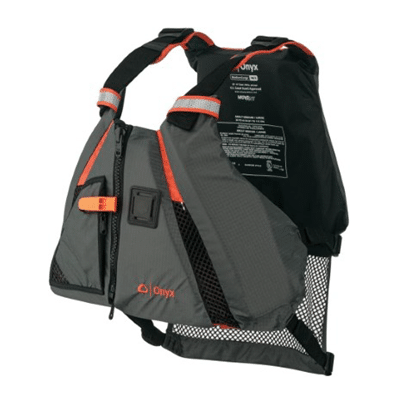
PeacefulPaddle.com is reader supported. If you make a purchase after clicking a link, I may earn a commission at no additional cost to you.
What is a Canoe?
A canoe has a long and narrow construction. You can paddle your canoe alone , but most of the time there will be two people in the canoe, each using a single paddle to propel the boat.
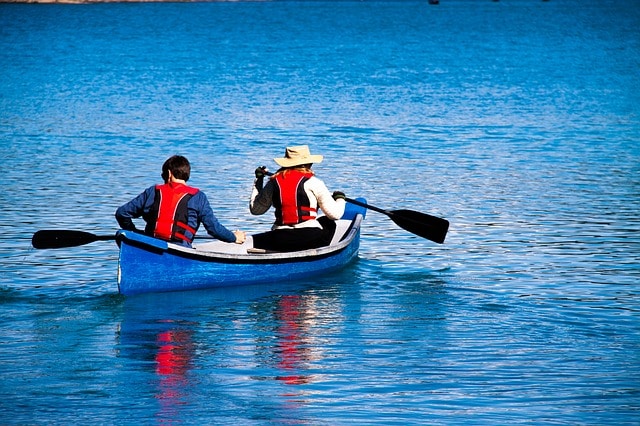
In order to move the canoe, you need to paddle while facing the direction in which you want to move. When paddling a canoe, you will be in kneeling position in the bottom of the boat or seated. Canoes have pointed ends and open tops.
Canoes are traditionally made from a tree trunk. The trunk is made into the correct shape by cutting and burning processes. In some cases, a canoe can be used with a sail. The canoe lacks a rudder.
What is a Rowboat?
When you row, you propel a boat forward by moving the oars in the water in a particular way. Oars are similar to paddles , but one person uses a set of two oars in a rowboat. If you row a boat, the oars you are using are mechanically connected with the vessel with oarlocks. Paddles, on the other hand, are hand-held and not mechanically connected to the boat.
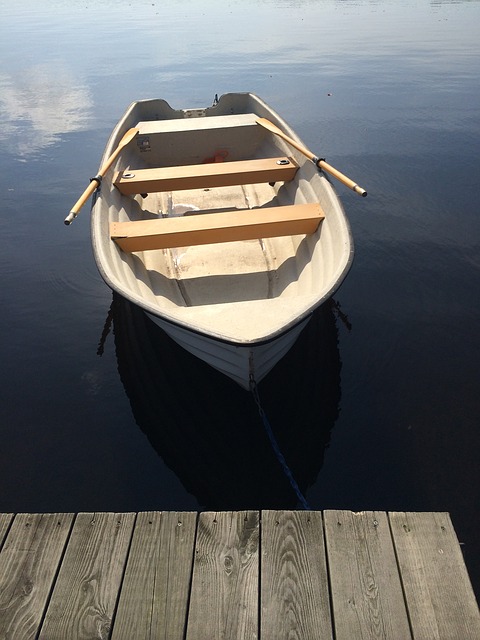
The oars of a rowboat are attached to a special pivot point on the craft. This is where the oarlocks (also sometimes called rowlocks) are. The oarlocks are always in the same place as the pivot point. The function of the pivot point is to act as a fulcrum for the oar, which behaves like a lever.
When you row a boat, you will usually face the boat’s stern. There are some exceptions, such as in Chinese sculled boats and gondolas in Venice, in which the people powering the boat face forward. There are fishermen on the east coasts of Canada and the US who also face forward when they row. This kind of rowing usually involves standing and the oarlock stem used is typically extended.
How to Know if You Have a Good Rowboat
Whether your rowboat is suitable depends on a variety of factors. There is no such thing as a rowboat that will do well in absolutely every condition.
When deciding what kind of rowboat to use, determine where you will be using the boat and why you are using it. Are you going rowing for a specific purpose?
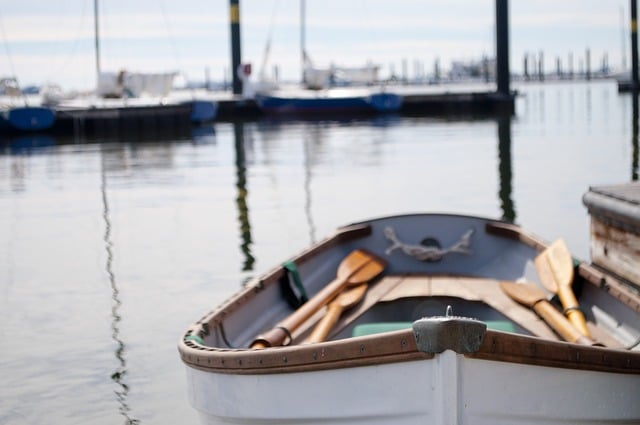
Once you have made all these decisions, some of the boat characteristics you should think about include weight, stability, waterline length, beam, trim, rocker, ends, shape of the ends, windage, and seaworthiness. Many people, especially those who are going boating for recreation, also care about the appearance of the boat.
Rowboat Length
Think about the length of your rowboat or the rowboat you’re looking for. Generally speaking, longer rowboats are superior to shorter ones. This is because of faster speed and better ease of movement. When considering hull speed, keep in mind that hull speed is only a theoretical speed that a non-planing boat can go. This depends on the boat’s length.
The speed of the water wave that the boat creates when moving is key to how fast it can travel. To get a better idea of why boat length is important to speed, think about the times you have noticed a small boat with an oddly large motor. You will probably have perceived that hardly any speed is added. This is because as the driver tries to make the boat go faster with the motor, the bow takes on a higher position and has trouble cutting through the water.
Rowboat Seats
There are different kinds of seats available in rowboats. If you have sliding seats, you will enjoy better efficiency. That’s why this kind of seat is used by rowing teams taking part in competitions. If you have a shorter boat, you will not be able to have sliding seats. Sliding seats would cause a shorter boat to have problems with its center of gravity.
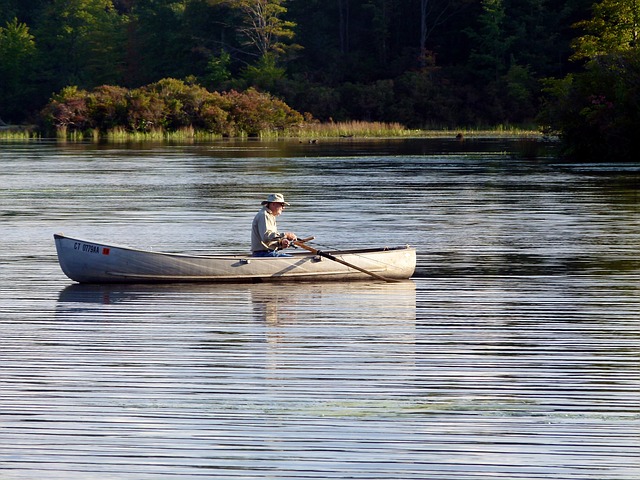
If you have a shorter boat and would like some of the benefits of sliding seats, you can look into a sliding rigger mechanism. This mechanism will move the rowlocks instead of the rower. This will give you increased efficiency but won’t lead to issues with the center of gravity.
What About Transoms?
An efficient rowboat will generally have no transom or at most a very small one. Boats that have motors need a large and strong transom. Luckily, your rowboat will not need a motor. Without a transom, you will find that your rowboat moves more easily and swiftly through the water.
If you have an especially high-quality rowboat, you might find that it has a transom that comes above the water line. This can be helpful because it provides extra support to passenger weight in some conditions.
Considering Weight Distribution
Weight is something that needs to be considered when it comes to the trim of the rowboat. As with many watercrafts, weight is a significant factor when it comes to your boat. You will want to avoid overly heavy loads of weight. At the same time, however, there being too little weight can also cause problems.
In general, it’s best to have a moderate weight in your rowboat. This will help it move most efficiently as you stroke. If there are any waves in the water you’re rowing in, this is especially likely to be the case.
What are Keels and Skegs?
Rowboats with deeper skegs and keels are usually better able to maintain the rowboat moving on a straight course. A keel is especially beneficial if you want to row your boat on open water. With a keel, you might find turning your boat a little tricker, however.
When it comes to towing, be aware that a boat with an especially deep keel at the fore end may be a bit tricky. This kind of boat is unsuitable for surf. It’s better to have a bow with a rounder shape in these conditions.
Want to Use Your Canoe as a Rowboat?
If you want to use your canoe for a rowing adventure, you can set it up to do so. You can find rowing seats, outriggers, and forward rowing contraptions.
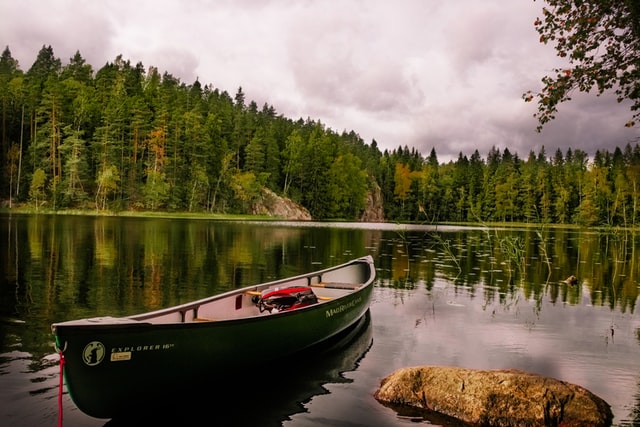
In order to make your canoe into a rowboat, you will need to add a seat position from which you will row, a pair of quality oars that are manufactured in the appropriate size, and an appropriate pair of oar sockets and oar locks to the gunnels (gunwales) of your canoe. These can be purchased on Amazon , or locally.
When you prepare your canoe for rowing, you will usually need to create a lower seating position that is near the boat center. This change will mean that your hands can keep appropriate alignment with at he middle of your body while stroking. You are likely to enjoy a stable rowing expedition in your canoe if you set these conditions.
Have a wonderful time and stay safe on the water, no matter whether you choose a canoe or a rowboat. Remember to wear your PFD (personal flotation device) and think about taking courses on boating and water safety before you head out.
You May Also Enjoy:
Privacy overview.
GET $42 OFF Any Purchase over $400 - Code [WELCOME] Free Shipping on Most Inflatables No Tax Outside of Florida

Canoes vs Rowboat Differences (Which is best for you?)

Canoes and rowboats are great ways to get out on the lake or river. Both provide hours of fun and exploration. Which one do you need? There’s a lot to consider before making your choice.
In this article, we will mainly focus on recreational use. While racing is big fun, that sport deserves an article all its own. We will also break down the benefits of buying each type of boat so that you can choose the best boat for your water adventures.
What are canoes?

Simply put, a canoe is a boat pointed at both ends and propelled by one or two paddlers. The paddlers can be either seated or kneeling and face the direction they are traveling.
What is a rowboat?

A rowboat is a small boat propelled by two rowers who face backward in the direction they are traveling. The rowers utilize oars held in place by oarlocks.
2 Main differences
There are two key differences between a canoe and a rowboat. To make it a little easier think direction first.
The occupants in a canoe paddle forward. In a rowboat, they row backward. Notice we said paddle for canoe and row for a rowboat. That’s the second difference. In a canoe, you use one paddle which you switch from side to side. It's called a single-bladed paddle. Rowboats utilize two oars that are connected to the boat.
Why do you paddle backward in a rowboat, you ask?
The strength of the human body is in the back and leg muscles. Rowing backward allows the rower to use more power and propel the boat more efficiently and with less fatigue. The rower transfers more energy to the oars allowing them to travel further with each stroke.
Let’s dig into all the things that make a canoe different from a rowboat. Paddles vs. Oars

There are different types of canoe paddles. A lighter paddle is better for a long trip. A flexible paddle works well in flat water while a stiff paddle is better for whitewater trips.
A rowboat uses two oars that are attached to both sides of the boat. The oar locks keep the oars in place. A row boat’s oars are larger than a canoe paddle.
A sliding-seat rowboat requires longer oars (sculling oars). Sculling oars are pricey, ranging from $500 - $1,000 a pair.
Oars come in two blade shapes – Macon or Hatchet.
Macon blade oars are spoon-shaped. They are the traditional oars for rowing.
Hatchet oars are longer on the side that extends into the water from the shaft. They require the rower to feather (turn the oar horizontally on the return stroke). This makes the stroke less wind resistant and less likely to catch the water on the return.

Generally, a rowboat is used for greater distances than a canoe. In about seven hours, you could canoe 20 miles. You would probably row about 15 miles farther in the same amount of time.

Both types of boats are stable. A canoe is not easy to tip if people are sitting properly and not leaning too far over to the side. A longer narrower canoe will be less stable than a shorter one.
Rowboats may feel a little unstable as you get in, but they resist tipping. The more expensive rowboats often have transoms above the waterline allowing for passengers to move to the back without tipping.
Higher sides outside the water make the rowboat resistant to swamping in waves.
The least stable is rowing shells. These long narrow boats are awesome for speed but require more experience in waves.

Canoes are great on flat waters like a local lake. They can work well on whitewater too. Canoes that are made for whitewater have flat bottoms to keep them floating if tipped over.
Paddlers need to kneel in whitewater canoes for stability in waves.
Traditional rowboats (flat bottomed) are not suited for rough waters but will serve you well for fishing lakes and inland waters.
Rowboats with transoms shaped like a wine glass (dories) lift the rowboat over the waves making excellent dinghies or tenders for coastal waters.

Canoes are easier to handle in both shallow water and the ocean. A flat-bottom canoe bottoms out less than a standard canoe. But flat-bottomed boats aren’t as good in waves and are slow.
If getting a canoe, buy one that the widest part of the beam is about a foot behind the center to keep it afloat in shallow water. Go with a slightly round hull to have less boat in the water and improve speed. Include a rocker with ends turned slightly upward so the craft will turn on command.
Rowboats have a v-hull and a pointed bow that helps them cut through deeper water. It also aids in riding high waves. A rowboat can smoothly ride choppy waters and is considered an ocean-worthy vessel. They can hold their own for fishing in rough water.
Canoes on the average paddle at 2.6 knots (3 mph). Most rowboats can be rowed at 3-4 knots (3.5 – 4.6 mph). The longer boats can reach 7 knots (8.1 mph).
Rowboats are faster because the rower puts more muscle into each sweep of the oar.
Gear Storage

Rowboats can carry more people and equipment than canoes, particularly if the boat is equipped for fishing. Getting more gear in your boat is a big advantage of a rowboat. Often, you pay for that storage though with the weight of the boat
Today, many rowboats are made from fiberglass which is much lighter than wood. A 15’ fiberglass single-person rowboat weighs about 100 pounds making it a fisherman’s dream boat.

Since traditional rowboats are heavier than canoes, they are perfect for lakes and rivers if you don’t have to carry them far. And, if you have a dock or storage where you put it in, rowboats are a great choice. If you have to carry your rowboat some distance, invest in a fiberglass boat. Both canoes and rowboats are easily transported in a truck bed.

Trolling motors can be attached to both canoes and rowboats. Using a trolling motor is a great option to free up your hands for fishing or even just to take a break from paddling or rowing.
An electric-powered motor is the best choice for anglers. They are lighter, quiet, and easier to install.

Rowing is a great upper body workout building muscles in the arms and shoulders. Rowing requires that you push with your legs and arms so your legs get a workout too. And it is also a cardiovascular workout.
In short, rowing burns calories and is a killer way to exercise. If you are looking for a great workout, a rowboat is the optimal boat for you.
Paddling a canoe utilizes arm muscles and can be a good upper body workout. The more continuous strokes used with intensity the better the aerobic workout.

A canoe typically costs a lot less than a rowboat. Canoes start at about $600 and the average price comes in around $900. That’s a great price point for a canoe on a small lake or one not used for distances.
Wood canoes cost more and can reach thousands of dollars. They have that traditional look and can be beautiful in design. Kevlar, which is used for bulletproof vests, is the most expensive material for canoes. Invest in a Kevlar canoe if you are a fisherman or are using your canoe for touring. They can take the abuse of paddling in shallow water.
Rowboats are bigger and heavier and therefore use more material than a canoe. The average price for a rowboat is $2,500.

Types of Canoes

Choose a canoe that is about 12-15 feet in length and about 2 feet wide for stability and maneuverability. Pro tip – fish with a partner so both of you can cast. One of you can keep control of the canoe.
A rotomolded canoe works very well for fishing. You will want a rod holder or two so you will be able to troll while paddling.
Whitewater

Choose a canoe that has some rocker to be able to make turns quickly. The canoe should be deeper than a lake canoe to help you stay dry.
Make sure your canoe is made of tough materials that can withstand hitting rocks. Canoes made from Royalex can handle many years of river abuse.
Recreational
A good hard plastic canoe can take a beating from the family and is inexpensive. These rotomolded canoes should be stored out of the sun to prevent damage. They are heavy, but perfect for a nice day on the lake.
These canoes are fast and made for the experienced paddler because they give up stability for speed. They are narrow and made of light materials like fiberglass or Kevlar.

Types of Rowboats
Flat water shells.
Also called sculls, these are the boat for experienced rowers because they are the fastest. Flat Water Shells also called a “Fine Boat” are your ultimate racing shells.
They are manned with a crew. These rowboats are the lightest and most narrow.

These boats are super long, averaging 27 feet. This makes them difficult to spin so they track straight. Sliding seats and outriggers help the rowers get the most from every stroke
Open Water Shells

They are made of Kevlar, fiberglass, or carbon fiber. They weigh between 30-40 pounds. They are sturdier than flat water boats and have a wider hull to handle waves and surf.
Open water shells are less narrow than extremely narrow racing shells. People with a crew background from college enjoy these boats for workouts and sports.
Traditional Skiff

These boats are designed for heavy loads. They are wide and sturdy with a flat bottom that makes them great for fishing. This is also your boat if you are new to rowing.
They are often called dinghy or dory. This is your “traditional” rowboat, and it can be quite beautiful. Craftsmen take great pride in delivering some wooden rowboats that are handed down for generations in families.
Touring

These rowboats are smaller and lighter than the Traditional Skiff. They move nicely through the water. They are stable to withstand the wake from boats and handle chop well. They usually use sliding seat rigs with oarlocks. Touring rowboats are roomy and comfortable. are made for a crew and are cheaper than racing boats. They are designed for trips on the river, coastline, or lake. They are not made for rough water.
Happy Boating
In closing, once you’ve narrowed down your choice by type of boat and done some research on various brands. Try one out if possible. Some stores will let you test drive for free. Rowing & Paddling clubs can add to your information before purchase. The best advice, do your research. These boats can be passed to future generations and make memories for years to come. Happy paddling. Happy boating!
Learn More About Light As Air Boats

- Share Share on Facebook
- Tweet Tweet on Twitter
- Pin it Pin on Pinterest
- choosing a selection results in a full page refresh
- press the space key then arrow keys to make a selection
Summer Inflation Buster
- United States
- International

Rowing 101: A Guide to Rowing and Sculling
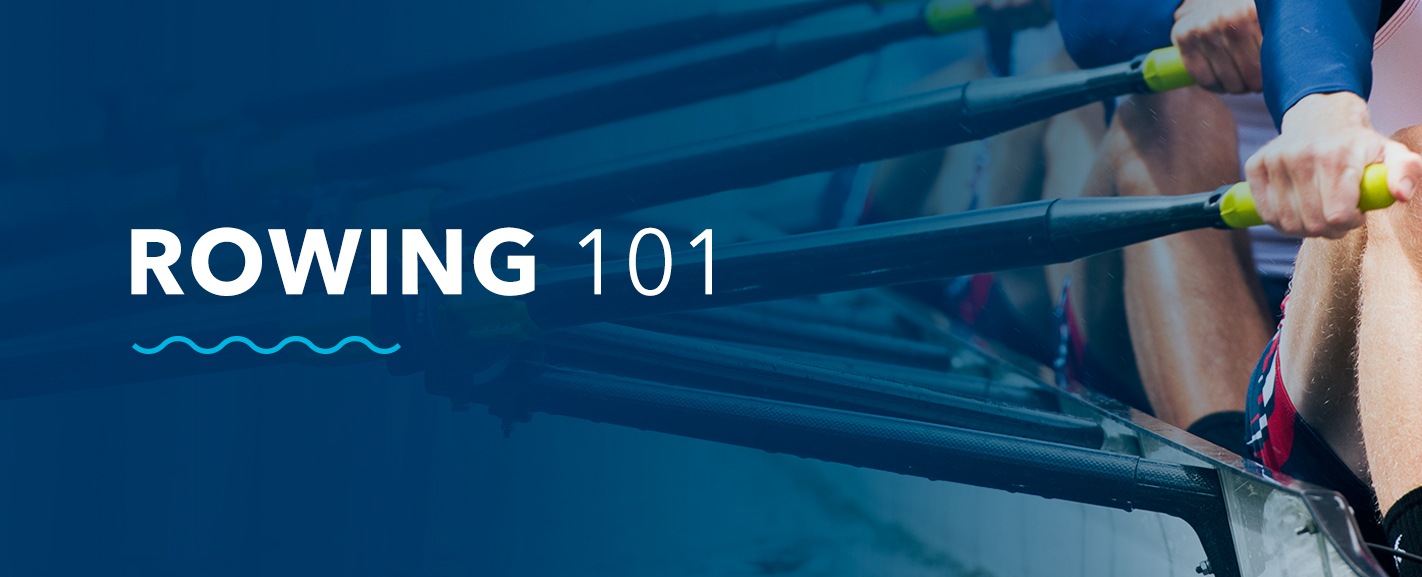
What started as a transportation method in ancient Greece, Rome and Egypt, has since turned into one of America’s favorite sports — rowing. Rowing is the first team sport contested in the U.S. and continues to be a popular competitive sport among many schools.
In competitions today, rowers can race solo or in teams of two, four or even eight. Rowing was also the first U.S. sport to have a national governing body. This guide will discuss the basics of rowing, from racing to different types of boats and stroke techniques.
Read the full guide or jump to a specific section:
How Old Is the Sport of Rowing?
What are the categories in rowing, what to know about races, what are the types of boats, what are the rowing team positions, rowing quick facts, shop ez dock for low profile rowing docks today.
Rowing goes back to around 1000 BC, after early humans discovered oars were more efficient than paddles and sliding seats made it easier to exert force against the oar and make the boat go faster. Rowing continued to grow quickly, gaining popularity around the mid-1850s. Boatmen even made a living from the sport, although their names were hardly mentioned at first. They were instead known by their boats . Around the time of the Civil War, however, these men started gaining recognition. People like the Biglin and Ward brothers were distinguished figures, racing for up to $3,000 a race.
In 1896, rowing was inaugurated into the modern Olympics, but bad weather forced officials to cancel the event. The first rowing race for heavyweight men in the Olympics was in 1900, with women’s events added in 1976.
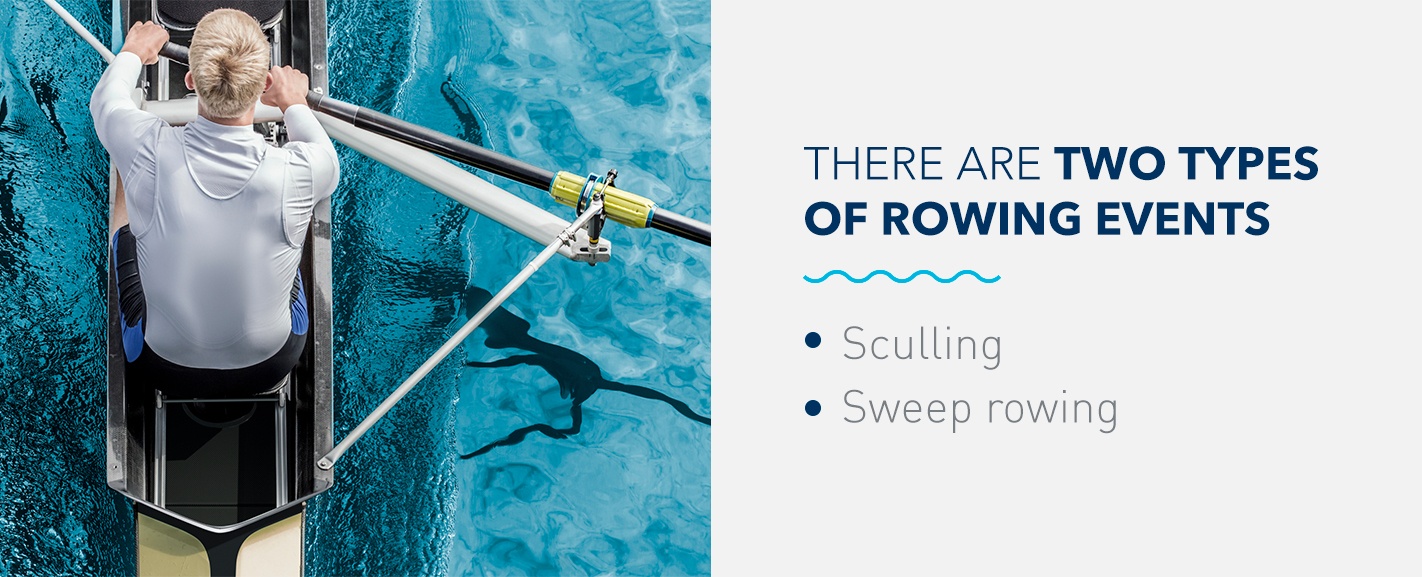
Like most sports, rowing breaks down into different types of events and groups. There are two types of rowing events — sculling and sweep rowing — and each event breaks down into lightweight and open weight.
When it comes to the open categories, any athlete can join, regardless of weight. For lightweight events, men must not exceed 160 pounds, and the calculated average weight among athletes in one boat must not exceed 155 pounds. In women’s events, women competing in the lightweight category can’t weigh more than 130 pounds, but there’s no average weight for women’s boats.
Events then break down by age. Athletes under 19 years old who won’t be turning 19 in the current calendar year or still attend secondary school falls into the junior category. Next is the under-23 category, and then masters. Traditionally, rowing athletes can reach master status once they turn 27, but many events today offer an updated master’s group where athletes only have to be 21. These masters events usually divide into age subcategories by letter designation, and athletes of all ages are welcome to row in open events.
Most U.S. rowing races and international races are 1.25 miles long, or 2,000 meters. This race is known as the sprint race , used in national, collegiate, worlds and Olympic competitions. There are six to eight lanes with every 500-meter section marked with buoys. However, junior races are typically 1,500 meters, and masters are 1,000 meters.
At the beginning of the race, boats line up in assigned lanes while someone in each lane holds the stern of the boat still. An official, often referred to as the aligner, examines each boat to ensure all boats are squarely facing the course and are in even positions at the start.
Crews are allowed one false start in the race but are disqualified if they do it twice. In cases where equipment breaks within the first 100 meters, such as a broken oar, they stop the race and restart it once the crew has repaired equipment. Rowers can leave their lanes during a race without any penalization as long as they aren’t interfering with anyone’s chance to win. Following the sprint race, rowers usually row for another five to ten minutes as a cool down.
In the fall, rowers may also compete in head races, which are 2.5 miles long to three miles long. In this race, boats in each division start separately at 10-second intervals and row along rivers with obstacles like bridges or turns. The winning crew of a head race has the shortest time between the start and finish.
Boats are essential to the sport of rowing. While you may hear them simply referred to as boats, rowing boats are also frequently called shells. They are made from lightweight carbon fiber and reinforced plastic. Since shells are crucial to rowing, many crews will even give their rowing shells names to honor their importance.
Sometimes athletes name their boat in honor of alumni, a coach, a team goal or a mantra. There are two main types of rowing shells — crew boats and sculling boats. There are also different types of boats according to the number of people inside.
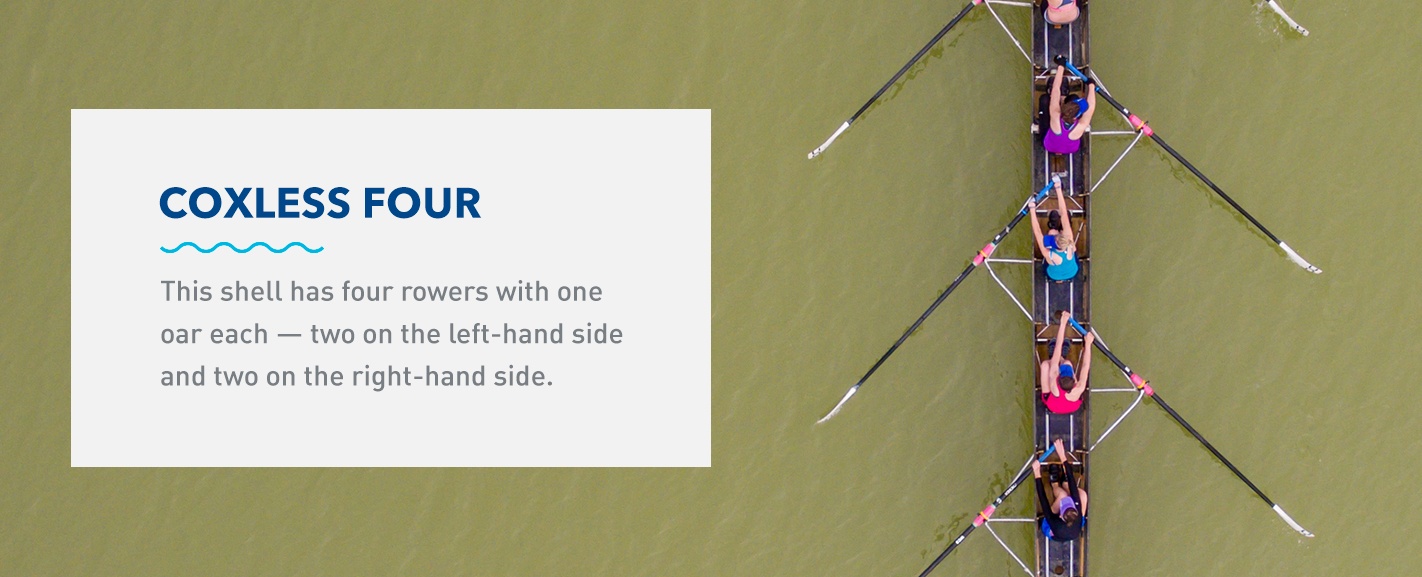
Types of Crew Boats
When it comes to rowing, there are different boats teams may use:
- Coxless pair: This shell has two rowers equipped with one oar each: one on the left-hand side and one on the right-hand side. One rower steers the boat through a rudder connected by cables, since there is not a coxswain.
- Coxed pair: This boat also has two rowers with one oar each, but comes with a coxswain to direct the athletes and steer the boat with a rudder attached to cables.
- Coxless four: This shell has four rowers with one oar each — two on the left-hand side and two on the right-hand side. One of the rowers usually uses their foot to steer the boat since there is no coxswain.
- Coxed four: This boat has four rowers with one oar each and a coxswain to steer the boat.
- Coxed eight: This shell has eight rowers with one oar each — four on each side with a coxswain to steer.

Types of Sculling Boats
Just as there are different boats for rowing, there are also different boats specifically for sculling — where athletes each use two oars, also known as sculls, instead of one. The different types include:
- Single scull: Sometimes referred to as the single or 1x, the single scull holds one rower using a pair of sculls to steer the boat by controlling the pressure they put on the blades in the water.
- Double scull: Also known as the double or 2x, a double scull has two people, each with a pair of sculls who steer the boat using the same technique.
- Coxless quad and coxed quad: These sculling boats are for four people. The coxless quad usually requires one of the athletes to steer with their foot, while the coxed quad uses a coxswain to steer. The coxed quad is typically only used in rowing for beginners or juniors.
- Octuple scull: This type of boat is very rare, as only beginners typically use it. This boat uses eight rowers equipped with a pair of sculls and a cox to steer the boat.
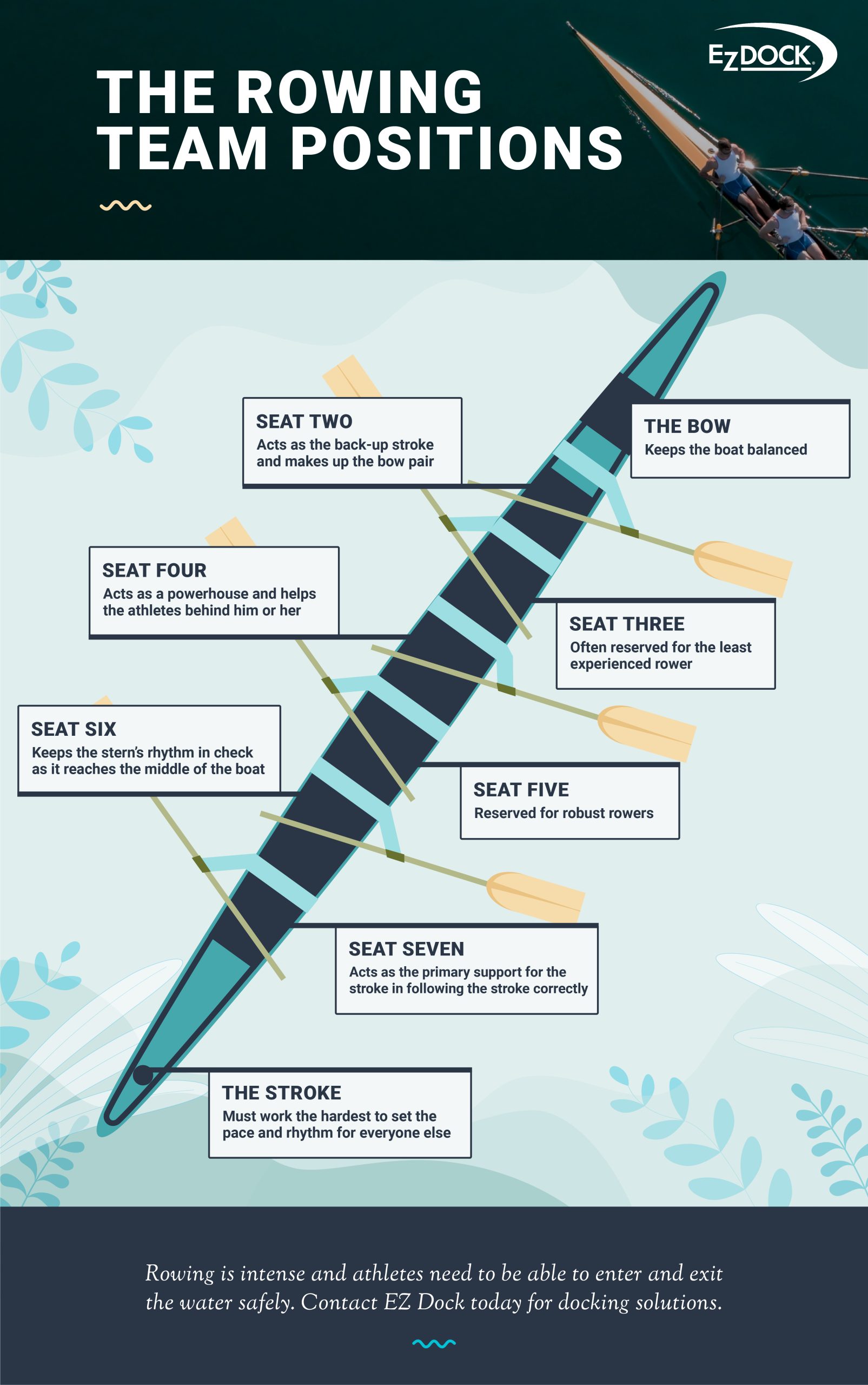
Positioning rowing team members is a systematic process. Each athlete is identified by their seat number in the boat. For example, the person sitting in the bow will cross the finish line first, so that seat is known as the number one seat, or bow seat. The person behind the bow is seat number two, then seat number three and so on until seat number eight, which some refer to as the stroke. Each crew position has a specific function, crucial to the entire boat’s success:
- The bow: This person, who sits in seat one, works to keep the boat balanced. Since they’re seated at the front, it’s crucial that the bow is sharp and has excellent technique, as their oar blade makes the most difference when they put it in the water.
- Seat two: This athlete acts as the back-up stroke and makes up the bow pair as the second seat in the boat. The two athletes that make up the bow pair must be the most accurate members of the team at the beginning of each stroke.
- Seat three: Often reserved for the least experienced rower on the team, this seat has less responsibility than the others. This doesn’t mean seat three can be a weak link, but they won’t affect the rhythm much since they aren’t close enough to the stern or right at the bow.
- Seat four: Seat four must act as a powerhouse in the middle of the boat and help the athletes behind him or her.
- Seat five: Like seat four, seat five is reserved for robust rowers.
- Seat six: Seat six works to keep the stern’s rhythm in check as it reaches the middle of the boat. Since they are typically the tallest member of the team, they help lengthen strokes and get the boat to go further.
- Seat seven: The athlete in seat seven must act as the primary support for the stroke, taking the rhythm of the stroke and following it correctly. Seat seven makes up the stern pair with the stroke and must be a fluid, consistent rower. If they don’t follow the stroke’s pace, it messes it up for everyone in front of them.
- The stroke: Perhaps the most challenging seat of all, the stroke must work the hardest to set the pace and rhythm for everyone else on the boat to follow. This athlete must be an extremely powerful rower with excellent technique.
Some boats may also have a coxswain onboard who acts as the eyes and ears of the boat. The coxswain is usually present with teams of four or more, but is not numbered. They’re the head of the boat, generally sitting in the stern, but may also have a lie-down position in the bow end. The coxswain motivates and communicates with the team, leading them in the race. The coxswain also steers the boat and works to get the boat set up correctly before a race. They often use a CoxBox — an electronic amplifier system — to amplify their voice and look at stroke rate and time.
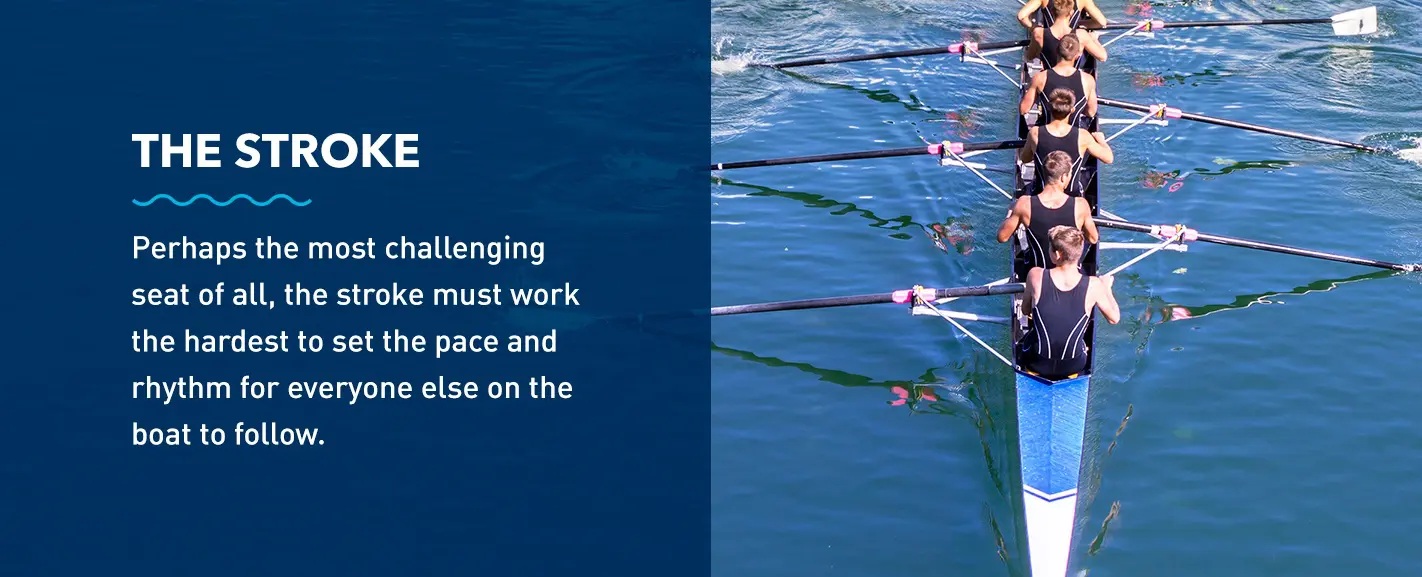
Rowing vs. Crew
What is the difference between rowing and crew?
Generally, the terms “rowing” and “crew” refer to the same sport. Sometimes schools and colleges in the U.S. will refer to the sport of rowing — where athletes row across a body of water with one oar each — as crew. In nautical terms, “crew” refers to the people who operate a boat, but it’s used in America as another word for the sport. Usually, outside of the academic world, the sport is simply referred to as rowing, such as the United States Rowing Association, for example.
The stroke is an essential part of every rowing race — it can determine who takes the lead and who falls behind. Rowing strokes require athletes to use their entire body to move the boat through the water. While many think strokes are primarily produced from arm strength, much of the stroke actually comes from leg strength.
The act of rowing uses all the major muscle groups, from the arms and legs to the abs and glutes, and requires upper body core strength to power the stroke. Rowers must also have an excellent sense of coordination, balance and flexibility and work together to focus on finding the right stroke rhythm that keeps the crew in sync.
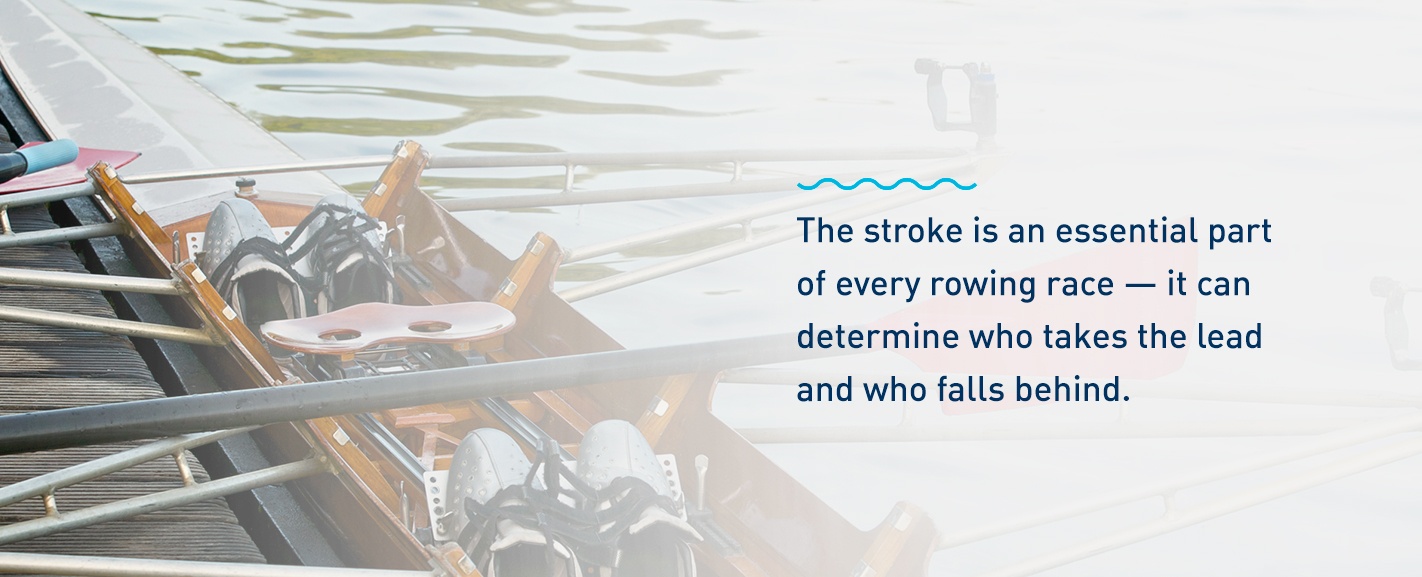
What Are the Types of Strokes in Rowing?
Although the rowing motion shouldn’t have a definite beginning or end, there are four main steps when it comes to the anatomy of a rowing stroke — the catch, the drive, the finish and the recovery:
- The catch: The catch is when the oar blade quickly enters the water vertically. When they start the stroke, the rower is coiled up on the sliding seat with their knees bent and arms stretched. Instead of solely using power to get the oar in the water, athletes also rely on the blade’s weight and gravity. Rowers must also make sure the catch is in sync with the speed of the boat and try not to get much front splash or backsplash.
- The drive: During the beginning of the drive, rowers are still in the same body position and focus on using their legs. Then, athletes will start to uncoil their upper body and put their arms to work as they draw the oar blades through the water. As athletes continue the drive step, they swiftly move their hands into the body in a layback-like position, which requires great abdominal strength. If rowers uncoil before dropping the oar blade, they could compromise their speed.
- The finish: Also sometimes called the release, this step is where rowers move the oar handle down and draw it out of the water in a quick, clean motion while turning the handle so that the blade goes from vertical to horizontal. This movement is also known as feathering the oar.
- The recovery: As rowers enter recovery, they move their hands away from their body and past the knees. During this motion, the oar is out of the water. Then, the blade travels smoothly back toward the bow, and the athletes move their bodies forward until they have their knees bent and are ready for the next catch.
Shells move fastest at the release point and slowest during the catch. The stroke rate refers to the number of rowing strokes per minute a crew takes. However, higher stroke rates don’t always equate to going faster — talented crews could still cover more water more quickly than an inexperienced crew with a higher stroke rate. Sometimes crews may even yell out a “Power 10,” which signals the crew to give their strongest, hardest ten strokes.
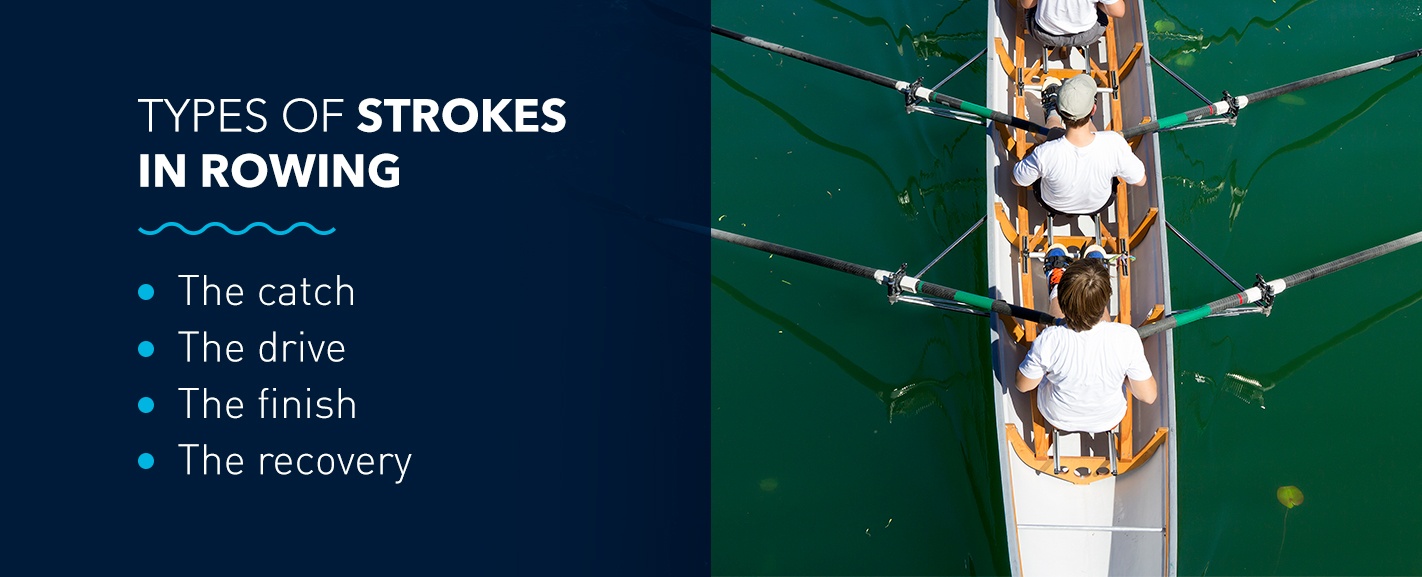

Sculling vs. Rowing
There are two main ways to get across the water — sweep rowing and sculling. While rowing is often the go-to terminology to encompass the sport, rowing often only refers to sweep rowing. Instead of using one oar like they would in sweep rowing, athletes may opt to compete in sculling events where they use two oars — one in each hand.
When it comes to sculling events, there are three main categories. First, there is the single, where only one athlete will compete. Then, there’s the double with two people, and lastly, the quad with four people. Whereas, in sweep rowing, there are racing events only for pairs, quads or eights. Most rowing events at schools and colleges are sweep rowing events, but some might offer sculling to help improve students’ skills.
There is also a difference between sweep rowing and sculling regarding boats. Boats with scullers in them — athletes with two oars each — are referred to as sculls. Although this means all sculls can be considered shells, not all shells can be considered sculls. The single scull is regarded as the smallest boat on the water, as it can be as small as 10 inches across and 27 feet long.
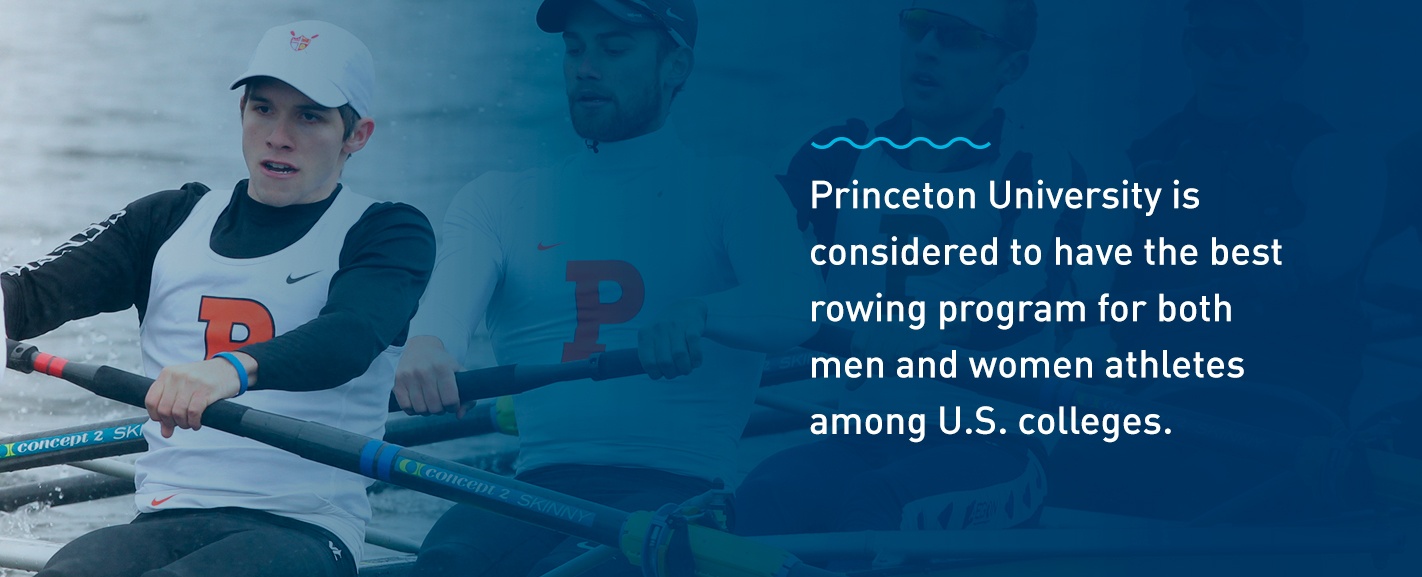
Did you know some physiologists say rowing in a 2,000-meter race requires the same level of work as playing two basketball games back-to-back ? Or that astrophysicist Stephen Hawking was a coxswain ?
Rowing and Schools
- The rowing race between Harvard and Yale that first started in 1852 is the longest-running U.S. sporting competition and the first intercollegiate sport ever contested in America.
- The first collegiate boat club in the U.S. was founded in 1843 at Yale College.
- Princeton University is considered to have the best rowing program for both men and women athletes among U.S. colleges.
- Rowing is considered one of the hardest NCAA sports teams to join in college sports.
Rowing and the Olympics
- The founder of the modern Olympics, Baron Pierre de Coubertin, was a rower.
- The USA won the gold medal for the men’s eight at every Olympic Games from 1920 to 1956.
- The U.S. men’s eight won its third gold medal in a row at the world championships for the first time in U.S. history in 1999.
- The U.S. women’s eight won gold at the World Rowing Championships in 2013, adding to its streak of eight world or Olympic titles in a row.
Rowing is an intense sport, and athletes need to get out of their boats safely and easily onto a dock after an exhausting race. For stable yet straightforward docking solutions, trust EZ Dock. EZ Dock low profile rowing docks have a low freeboard height, making them accessible for crews of all sizes as they exit their shells, and are ideal for all competitive rowing events .
The modular design allows for easy installation, and since the docks are made of polyethylene, you don’t have to worry about any splintering, painting or rotting. EZ Dock rowing docks use patented flotation technology for enhanced stability and exceed both FISA and USA rowing standards. For your next rowing event, see how EZ Dock can be the perfect docking solution for your crew.
View Low Profile Docks
Request a quote or contact us today for low profile docks, dock accessories , dock sections and more.
Request a Quote
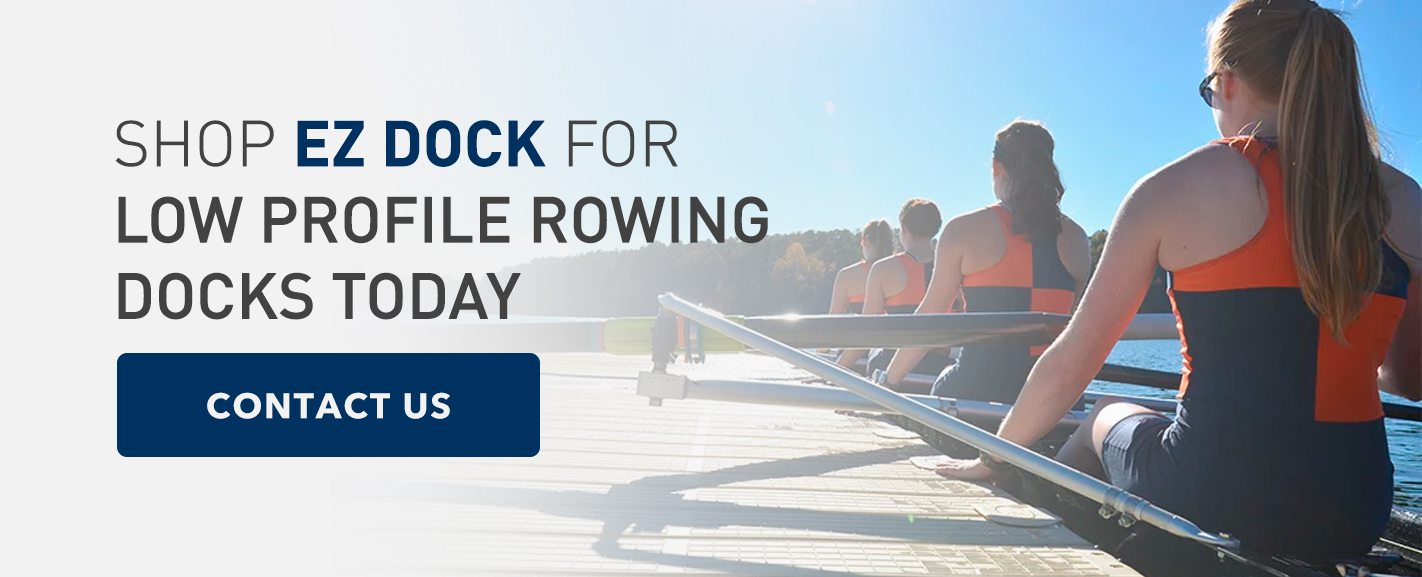
Related Posts
A guide to dock bumpers.
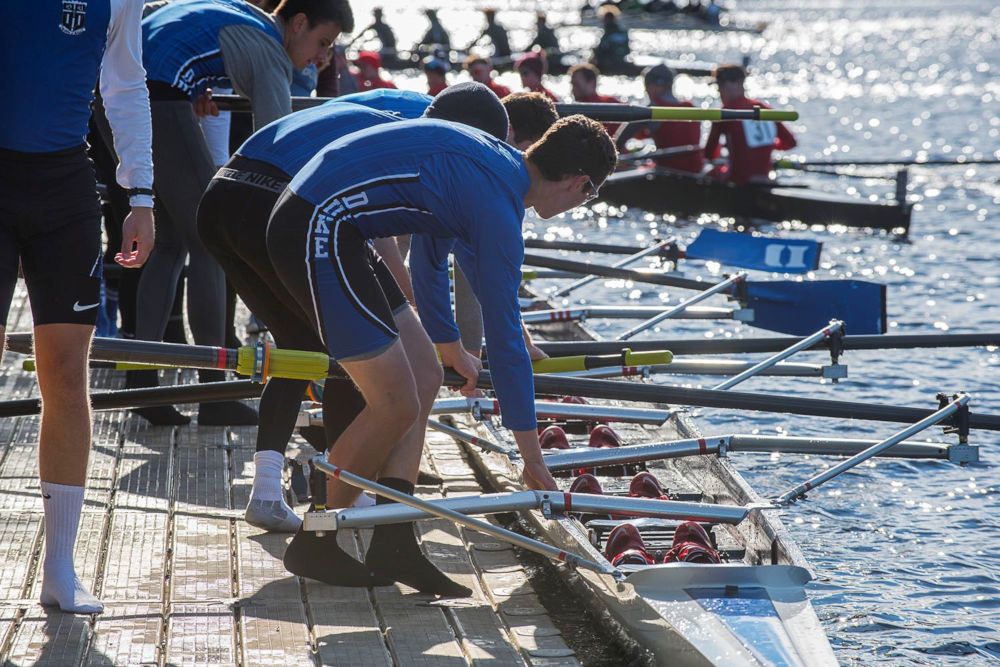
3 Types of Water Suits and When to Use Them
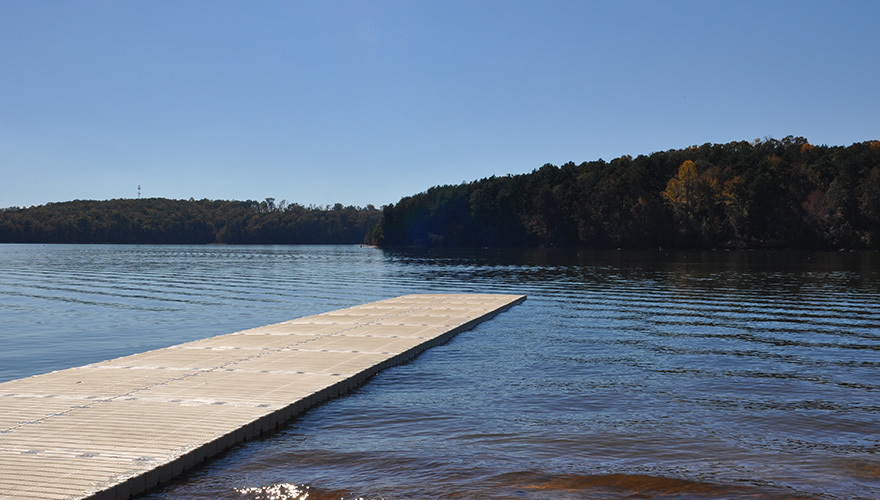
Ways to Enhance Waterfront Property Outdoor Landscape
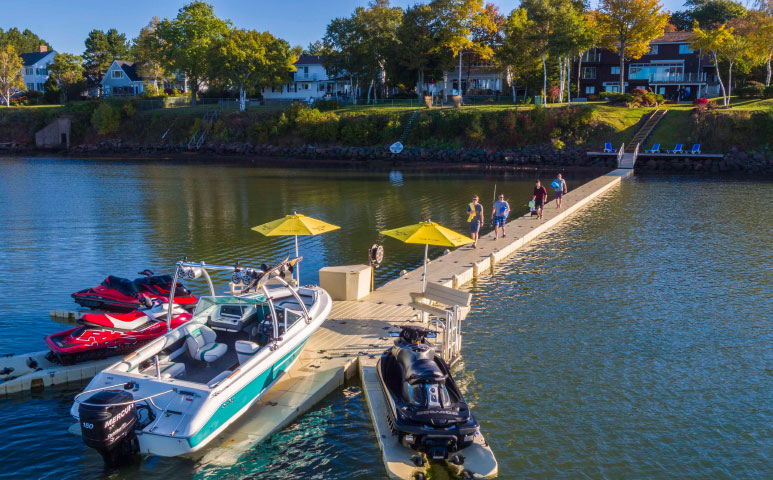
How to Build an Amazing Boathouse

17 Fun Water Toys for Your Next Lake Trip
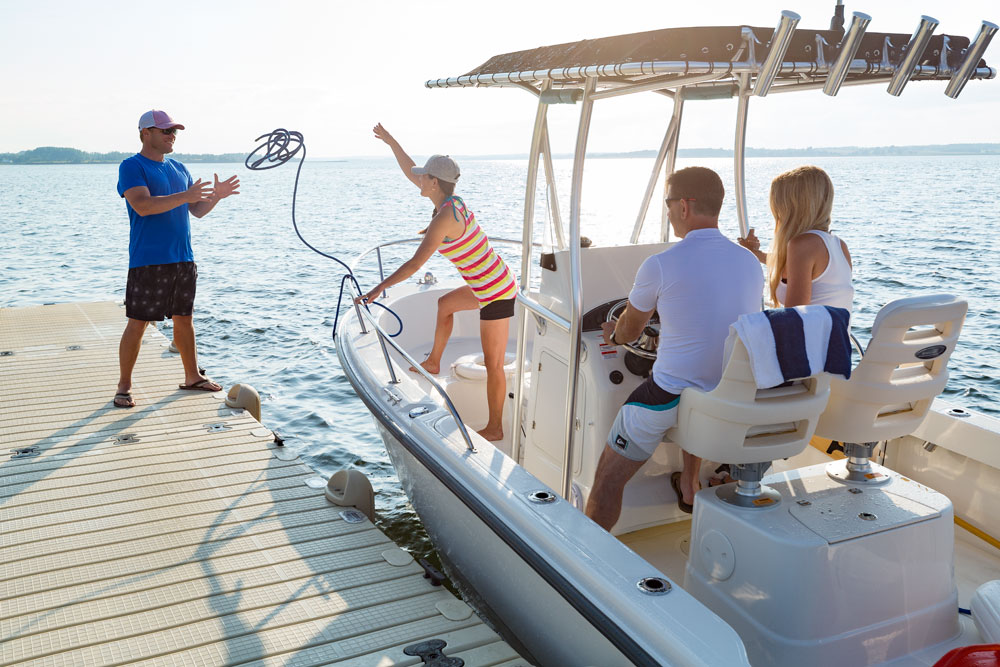
Guide to Docking a Boat

The Best Beach Games for Adults and Kids
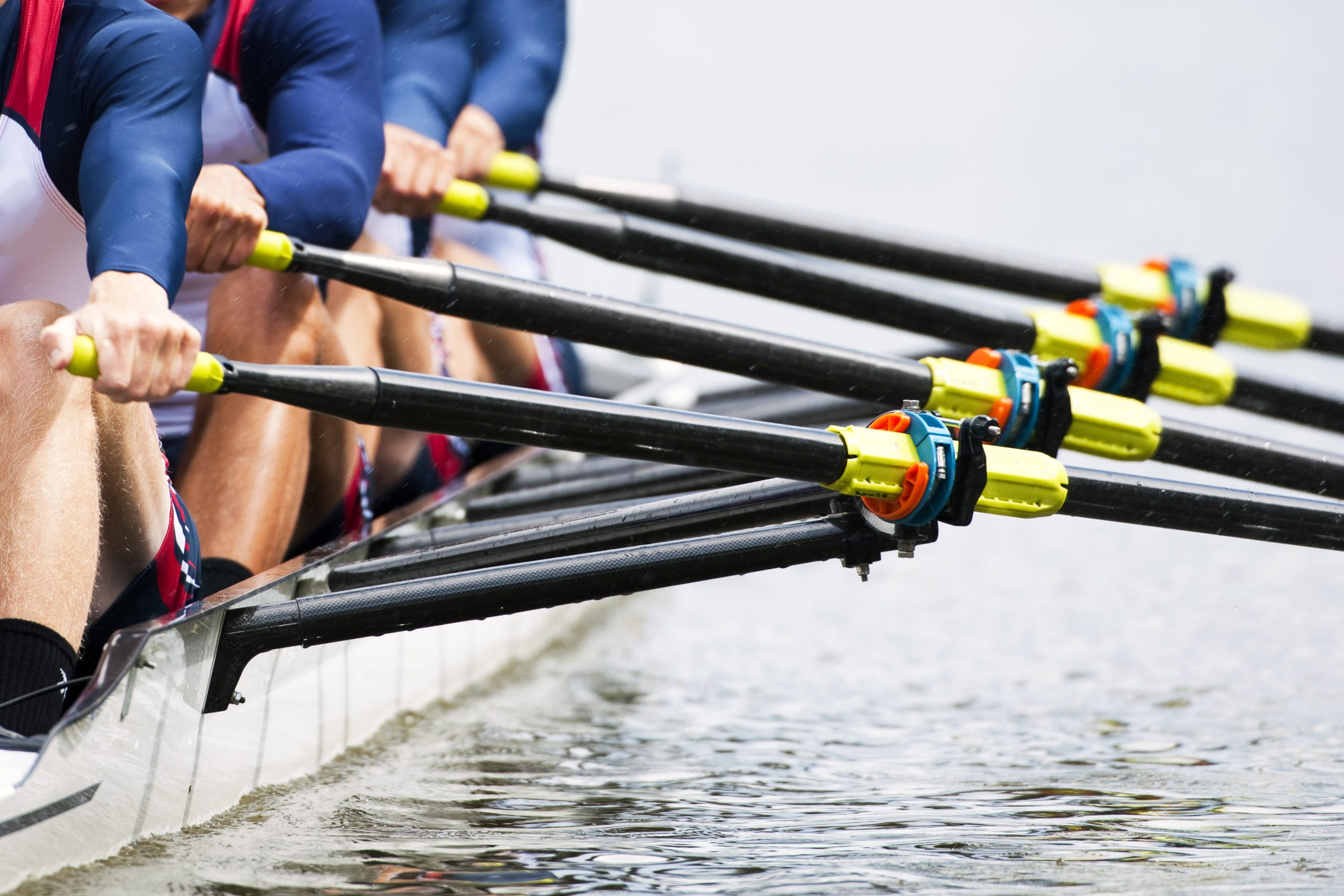
How To Coach College Rowing
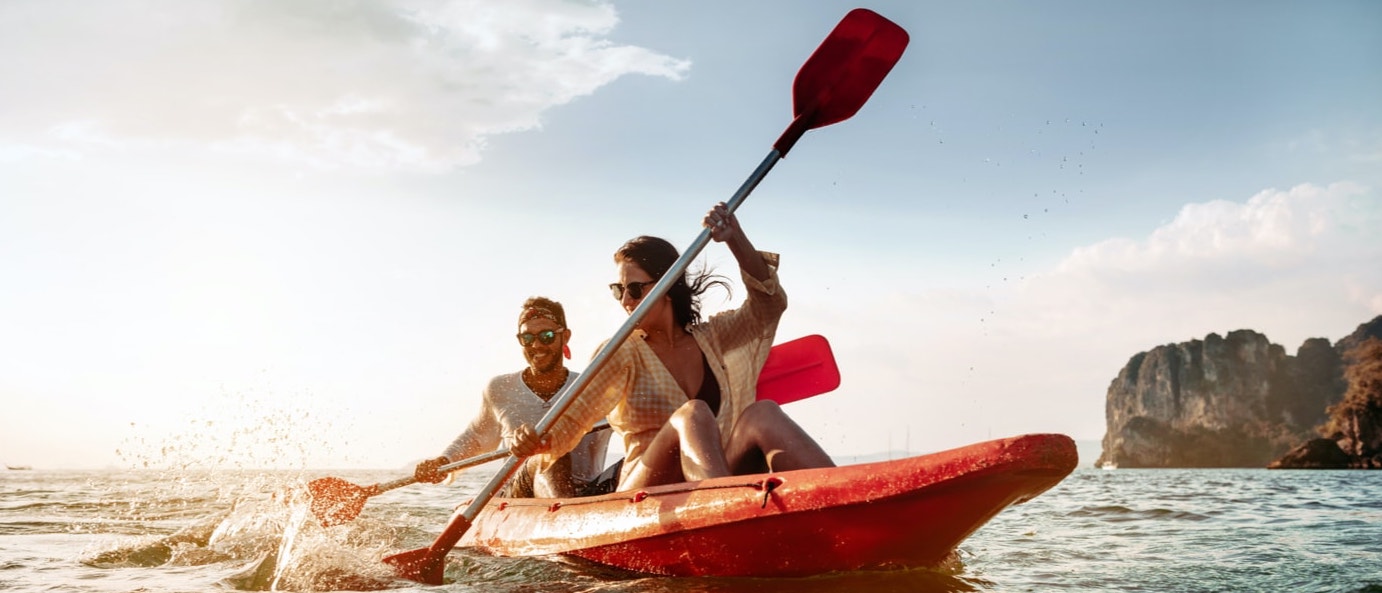
Best Places to Kayak in New Jersey

Beginners Guide to Navigating a Boat
Be the first to know, sign up to get the scoop on product updates, new product announcements, and everything #docklife ., sign up to receive our email newsletter.
This site is protected by reCAPTCHA and the Google Privacy Policy and Terms of Service apply.
Email Me the Brochure
By submitting this form, you will be signed up to receive exclusive newsletters about our products.

- Bumblebee Sailboat
- Expedition Rowboat
- Cambridge Racer
- Sailing RowCruiser
- Oxford Wherry
- Wheelbarrow Dinghy
- Builders' Forum
- Builder's Resources
- Videos & Photos
- Build Articles
- Featured Adventures
- Testimonials
- Kids Program
- Boat Accessories
- Books and DVDs
- Your Cart is Empty
A Speed Comparison of Kayaks, Rowboats, Canoes, SUPS and Pedal boats
by Colin Angus 7 Comments
I’m often asked what is the fastest type of human powered boat. How do surf skis, SUPs (stand up paddleboards), etc. hold up against one another? I’ve decided to take the time to rank and compare the various modes of human powered aquatic propulsion. Direct comparisons between craft are hard to come by, and relative performance can vary significantly depending on weather/water conditions. We’ve compiled our analysis by comparing data from Olympic results, open water human powered boat races, and major records that have been broken.
1) Pedal Power

3) Racing Kayaks/Surf Skis

Colin Angus
7 responses.
David Hagadorn
June 20, 2022
It troubles me that when paddleboard craft are criticized for performance when no one examines the skimming value of a flat floating platform that disburses very little water from its path. These craft do not have to be used standing up. The propulsion system is the problem. Propel the craft from closer to the water as you might a kayak and experience something very surprising.
Bryan Hersman
I had come here hoping to see the top speeds listed for each craft. Also what about multiple crew vs a single occupant?
Ronald C Wagner
How do the rental type two person pedal boats fare over distance? They are much more affordable and stable in most conditions.
June 15, 2017
Good overview. I’m currently researching for the best kayak to buy as I had great fun whilst on holiday in the south of france. However, i’m still a beginner and don’t want anything too advanced.
I read this guide about the best kayak for beginnersbut do you recommend any that are not in this article?
Thanks in advance!
April 11, 2017
Jai, have a look at these links. Davey du Plessis’ boat is enclosed and pedal powered. https://youtu.be/Wvu1nP7mFrY. Jason Lewis used a similar setup. https://youtu.be/n7EbQ_mRSjg. Makes sense to me if you want to go the human-power route.
October 28, 2016
I think you are forgetteing the Flyak, made by Einar Rasmussen, aiming for the world record on the 2k race.
Please check this out
https://www.youtube.com/watch?v=U95UReP4mdo
This is a lovely article.
I have begun my research just recently to circumnavigate the globe with my autistic son, 17, whose feet and hand muscles are still not well developed. Therefore I am presently toying with the idea of rowing, paddling and pedalling, to propell a small boat.
Leave a comment
Comments will be approved before showing up.
Also in News

- Human Powered Achievements through the Northwest Passage
by Julie Angus
At Angus Rowboats, our passion for adventure naturally draws us to the mystique of the Northwest Passage – one of the world's most captivating and perilous waterways. Historically, this elusive passage promised a shorter shipping route, spurring early navigators to fervently chart and struggle through its icy intricacies.
The summer of 2023 saw three audacious teams, including one using our very own RowCruiser boats, aiming to be the first to traverse NW Passage solely by human power within a single season. As the season concludes, we've chronicled these attempts, and catalogued past human-powered endeavors to navigate the Northwest Passage.
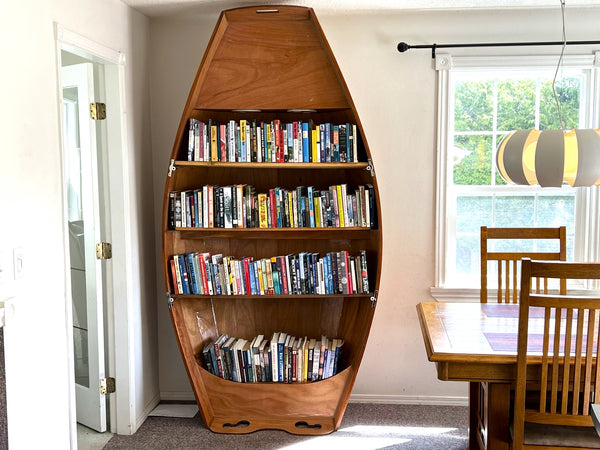
- Creating a Bookcase from a Boat
by Colin Angus
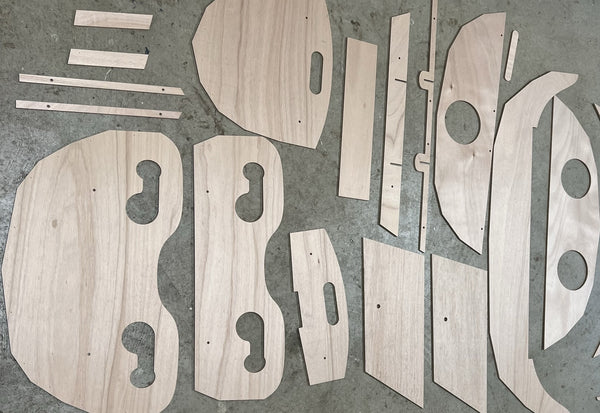
- CNC - Cut Kits for Angus Rowboat's Customers Outside of North America
Sign up to get the latest on sales, new releases and more …
Recent Articles
- Wheelbarrow Dinghy Comes to Life
- Bailers, Pumps and Other Systems for Getting Water Out of a Small Boat
- Race to Alaska: Leg One in an Angus Rowboat
- Featured Boatbuilder: Jerry Hackett builds the Expedition Rowboat
- Try the Bumblebee Sailboat at the Wooden Boat Festival in Port Townsend
- Fixed Seat Rowing Geometry
- R2AK Stage 2 Days 8 - 11
- Support Forum
- Do not sell my personal information
© 2024 Angus Rowboats .
- +91 8220724428
- [email protected]
- Mon - Fri: 9:00 - 18:30

Exploring the World of Rowboats: A Guide to Types and Uses
- August 20, 2023
- One Comment

Rowboats , those humble vessels that grace the calm waters of lakes, rivers, and ponds, have a charm that’s hard to resist. From leisurely afternoons of fishing to transporting adventurers across serene landscapes, rowboats have been an integral part of our aquatic experiences. Let’s dip our oars into the world of rowboats and discover their diverse types and uses.
Unveiling the Essence of Rowboats

Versatility and Utility of Rowboats
Crafting, history, and evolution of rowboats, into the realm of rowboat types, dinghy: your shoreline shuttle, wherry: time-honored elegance, skiff: versatility unleashed, punt: punting on tranquility, gig: racing and beyond, canoe: paddles and oars in harmony, rowing shell: elegance in competing, fixed-seat rowboat: serenity in simplicity, whitehall rowboat: tradition redefined, adirondack guideboat: nature’s companion, peapod: wide beams of relaxation, navigating rowboat maintenance: tips and best practices.

- Clean your rowboat after each use to remove salt, dirt, and debris that can cause wear and corrosion.
- Do not use harsh chemicals that could ruin the boat’s finish. Instead, use mild soap and water.
- Check the hull, oarlocks, and seats for cracks, chips, or wear.
- Please pay special attention to wooden parts, as they are susceptible to rot and damage from moisture.
- Store the rowboat in a cool, dry place to protect it from the elements.
- Cover it outdoors with a UV-resistant tarp to prevent sun damage and keep it dry.
- Apply marine-grade wax to fiberglass hulls to protect against UV rays and water damage.
- Wooden boats should be varnished regularly to maintain their appearance and structural integrity.
- Inspect and maintain oars, ensuring they are cracks-free and have securely attached blades.
- Check the condition of life vests, ropes, and other safety equipment.
Rowboat Adventures: Exploring Scenic Waterways
- Research local lakes, rivers, and coastal areas known for their scenic beauty.
- Consider factors such as water conditions, accessibility, and the presence of wildlife.
- Plan your route, considering the distance, time, and potential challenges.
- To make sure your trip is safe, check the weather outlook and the water conditions .
- Bring essentials like water, snacks, sunscreen, and a first-aid kit.
- Include a map, compass, and a waterproof bag for your belongings.
- Rowboats allow for quiet and unobtrusive wildlife observation. You can better look at birds and other animals if you bring glasses.
- Respect nature by not disturbing wildlife and adhering to local conservation guidelines.
- Take pictures or draw pictures of the beautiful things around you.
- Keep a journal of your adventures, noting the locations visited, wildlife spotted, and memorable moments.
The Art of Rowing: Techniques and Training
Distribution of content in rowboat blog.
- Start with a robust and balanced grip on the oars, keeping your hands shoulder-width apart.
- Use your legs, back, and arms in a coordinated motion, pushing with your legs first, then leaning back, and finally pulling with your arms.
- Practice maintaining a consistent rhythm and timing is crucial for efficient rowing.
- Focus on synchronizing your movements with other rowers in a crew.
- Do strength training exercises like squats, lunges, and rowing machine workouts to get the muscles you need.
- Cardiovascular training, such as running or cycling, helps build endurance for longer rowing sessions.
- Stretch regularly to maintain flexibility, particularly in the back, shoulders, and legs.
- Always warm up before rowing to prevent injuries.
- Learn basic navigation skills and know about water currents, tides, and wind conditions.
- Always wear a life jacket and be mindful of other watercraft.
Environmental Impact: Sustainable Rowboating
- Choose rowboats from sustainable or recycled materials, such as responsibly sourced wood or recycled plastics.
- Opt for oars and accessories made from eco-friendly materials.
- Use biodegradable soap to clean your boat and avoid harmful chemicals.
- Be mindful of fuel spills when using a motorized boat for auxiliary purposes.
- Keep a safe distance from animals so you don’t mess with how they usually act.
- Avoid rowing in sensitive habitats like bird nesting or fish spawning grounds.
- Take out all of your trash and throw it away correctly. Keep trash out of rivers.
- Recycle or dispose of old equipment and materials in an environmentally responsible manner.
- Participate in or support conservation efforts and organizations that protect water bodies and marine life.
- Educate others about preserving natural waterways and their role in our ecosystem.
Innovations in Rowboat Design: Modern Trends and Features
- Modern rowboats often use lightweight and durable materials such as carbon fiber and Kevlar.
- These materials offer improved performance and longevity, requiring less maintenance.
- Innovations in hull design have led to more efficient and faster boats.
- Features such as streamlined shapes and reduced drag improve speed and handling.
- Ergonomically designed seats and oarlocks enhance comfort and reduce fatigue during long rowing sessions.
- Adjustable footrests and seats accommodate rowers of different sizes and preferences.
- Some rowboats have integrated technology such as GPS navigation systems and performance tracking tools.
- These features provide real-time data on speed, distance, and other metrics.
- More and more rowboats are being made with eco-friendly materials and long-lasting production methods.
- Solar-powered accessories and efficient hull designs contribute to a smaller environmental footprint.
Choosing Your Oarventure

Related FAQs
What is the use of rowboat.
rowboat, boat propelled by oars alone, probably the most common type of boat found around waterfronts and at most fishing camps and docks on inland waters . A true rowboat or sculling boat has an easy motion through the water and, most important, glides between strokes.
Quick Navigator
Related blogs.

Inside Look: The Cockpit of an Embraer Legacy 600

Top 5 Advantages of Flying in the Embraer Legacy 600 Jet

IndiGo Reschedules and Cancels Flights Due to Cyclone Remal
Leave a reply cancel reply.
Your email address will not be published. Required fields are marked *
Save my name, email, and website in this browser for the next time I comment.

Unlock Adventure
plan your next outdoor adventure
Canoe vs Rowboat: What’s The Difference?
The similarities in canoes and rowboats make it challenging for new boat enthusiasts to understand the minor but critical differences.
They include design, rowing technique, sitting position while rowing, and others.
Read on for detailed information on what makes canoes and rowboats different and what this means for you while out in the waters.
What is a Canoe?
It is a lightweight water vessel mainly propelled by one or two people kneeling or seated.
A canoe is long and narrow with an open top and two pointed ends.
Traditionally, canoes are made from tree trunks through a cutting and burning process to get the right shape.
They are flexible and can also be used with sails.
Canoeing is one of the most popular water sports the outdoor community engages in.
Canoes meant for sports have raised seats where the canoeist sits with their legs at an approximately 90-degree angle.
These are paddled using a single paddle by one or several occupants.
While rowing, the canoeist(s) face the direction, they are moving.

Types of Canoes
Canoes can be customized to serve a specific purpose.
The following is a list of the most popular types of canoes you can choose from for sports and other activities:
1. Whitewater Canoes
Whitewater canoes are mainly made for river paddling and white water.
They have flatter bottoms than most canoes, making them easier to turn, adversely affecting your ability to paddle straight.
The seats used in a whitewater canoe are designed to allow you to paddle in a kneeling position.
2. Racing Canoes
Racing canoes are either used in slalom (whitewater) or flatwater canoe racing.
They are made using light materials such as Kevlar and fiberglass.
If you are a beginner canoeist, you are likely to tip over a racing canoe due to its narrow size.
3. Recreational Canoes
They are the most common types of canoes made using plastic or aluminum with no frills.
Recreational canoes are solid and durable, enabling them to withstand damage even in harsh conditions like rough outdoor weather.
4. Fishing Canoes
A fishing canoe is slightly different from other canoes due to some additional features essential for fishing.
It is attached with rod holders and other accessories you may need.
What is a Rowboat?
A rowboat may look almost similar to a canoe, but instead, the occupants use oars to propel through the water.
A rowboat can be used by one or several people, each with a set of two oars attached through a pivot point on the vessel, which acts as a lever.
When rowing a boat, the occupant faces the stern with the back towards the destination.
People paddle to get out and have fun, participate in sports activities, and as an effective way to exercise.
Some unique racing rowboats are fitted with a movable seat to help the occupant to use their maximum power in each stroke.
It can have one up to eight people working in unison to win a race.

Types of Rowboats
Rowboats are placed into different categories according to their uses.
They can be used for recreation, transport, or sports.
Below are the most popular type of rowboats:
Also referred to as a dinghy, a skiff is a typical rowboat adored for its stability.
It is large and wide and highly recommended for families, friends, and beginners looking to go on a boat trip.
Skiffs are popular among fishermen due to their size, which can accommodate a significant number of fish.
2. Open Water Shield
They are mid-sized boats that can be used in the ocean but mainly suitable for still waters.
Open water shield rowboats are narrower than skiffs allowing them to travel at much higher speeds.
However, they are not very stable at extremely high speeds.
3. Flat Water Shield
Also referred to as fines, flat water shield rowboats are mainly used by professional rowers in sporting and recreational activities.
They are sharp and flat and not recommended for beginners.
Differences between a Canoe and a Rowboat
A canoe is a type of boat, while a rowboat is a vessel propelled forward using oars.
The two types of water vessels differ in the following significant ways:
Propelling Technique
The techniques used to propel each of the two vessels differs significantly.
When rowing a canoe, the individual uses one paddle and is expected to sit facing away from the destination.
Some people also use both sails and paddles on a canoe.
However, the occupant in a rowboat faces the direction they are traveling in and uses two oars to propel the boat.
Paddling Power
The paddling only requires your upper body’s strength when using a canoe since you only use a one-bladed paddle.
Therefore, you can switch sides on the boat to avoid exerting too much pressure and strain on one side.
A rowboat demands the users to push using more legs and arm power than that of the body.
Did you know that most people can row a rowboat longer than you can paddle a canoe?
The positioning of the oars using a fulcrum are much easier to use than a single paddle.
Leg muscles also tend to strengthen with time and become powerful enough for you to row continuously for long hours.
Most rowboats are fitted with adjustable seats to make your experience even more convenient.
These help you to move your back and forward to apply more power to your rowing strokes.
Learning how to paddle a canoe professionally is quite challenging and requires you to train through several sessions in open waters with the help of a trainer.
For rowing, you can prepare yourself using a rowing machine even at home.
Canoe or Rowboat: Which is the Best?
Overall, the similarities between rowboats and canoes are many.
However, the easily noticeable difference between them is the propelling technique of the vessel and the direction the occupant faces while at it.
Canoes and rowboats are both popular for pleasure and competitions such as racing.
Rowboats are recommended for exercising since they involve the arms, legs, and several parts of the body.
Sharing is caring!

Kayaking Vs. Rowing: What’s the Difference? (8 Key Differences)
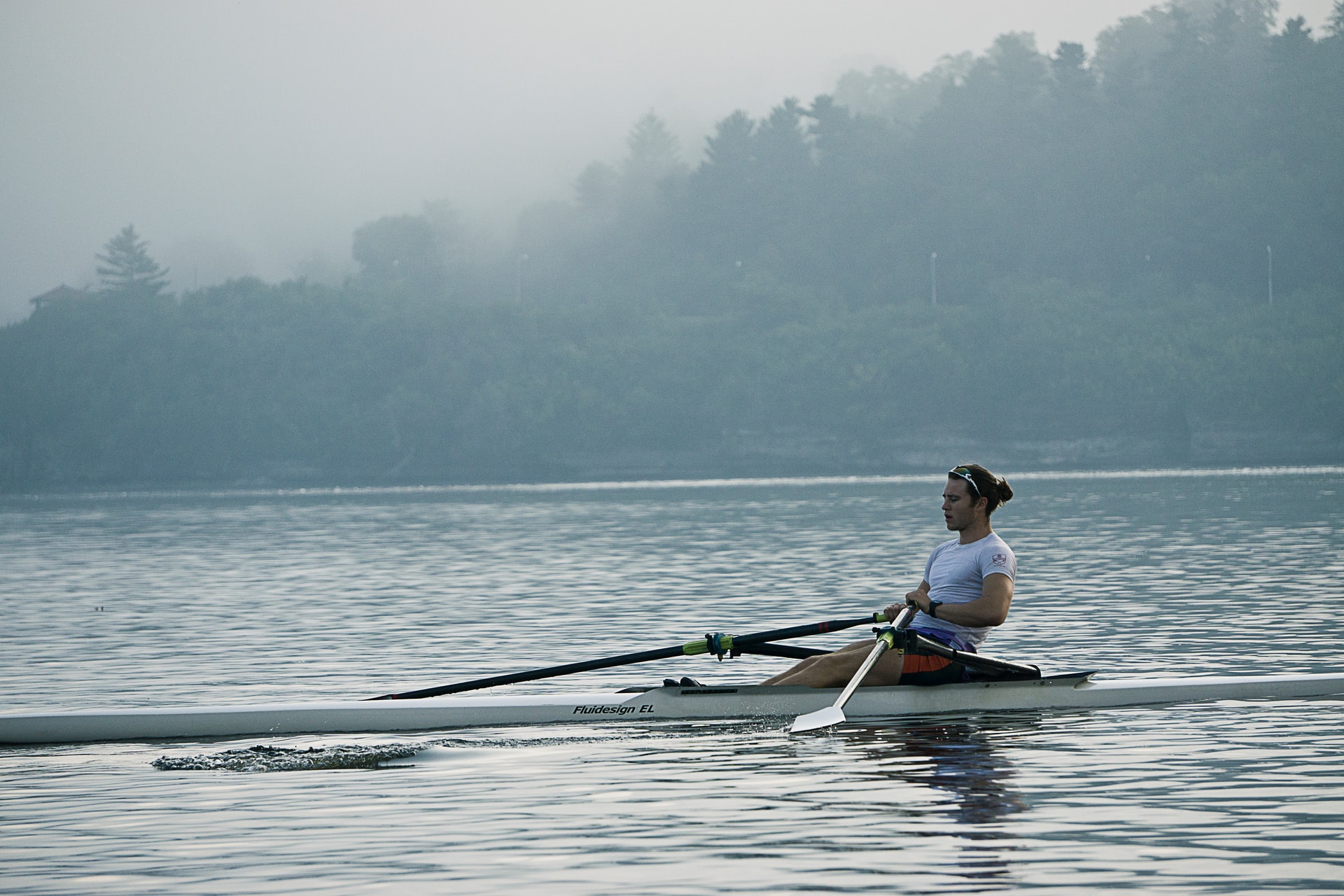
Have you ever wondered why people paddle a kayak and row a boat?
Kayaking and rowing are two similar types of watersports that often get confused for each other.
You might have even heard someone mistakenly say that they were going to row their kayak through the water.
Being able to define the difference between the two sports gives you credibility as a boating enthusiast and helps you to know what you are going to be doing when you plan a trip.
Are Kayaking and Rowing the Same?
Can you row in a kayak, 1. they both use different equipment, 2. the boaters face opposite directions, 3. paddles and oar techniques differ for steering the boat, 4. the main power comes from different parts of the body, 5. kayaks are more likely to capsize, 6. rowing allows for more teamwork, 7. practicing is mostly limited to the water for kayakers, 8. kayaks offer more portability compared to row boats, is rowing faster than kayaking, which is easier: kayaking or rowing, can i row in the same places where i can kayak, is a kayak or rowing boat more expensive, is a rowing machine effective for kayaking, you might also like….
Disclosure: this post contains affiliate links (clearly marked with ), which means we may earn a commission if you buy something through them, at no additional cost to you.
Kayaking and rowing do have a couple of basic similarities since they both involve using muscle power to move a boat through the water.
This has the advantage of allowing you to save on fuel usage and maintain a quieter approach on fishing expeditions compared to motor-powered boats.
You can also choose to paddle and row solo or with a friend.
Other than those two points, kayaking and rowing don’t have much in common .
You can row in a kayak but only if you make some serious modifications.
Rowboats are specially equipped with features that make it easier to perform the correct movements for rowing.
A rowboat has special attachments on the side called oarlocks that hold the oars in place.
They are typically u-shaped or round, which allows for the oars to move freely as the boater rows.
Most rowboats also have sliding seats that allow for the rower to get the most power from their lower body movements.
Kayaks lack these features, but there are special kits available that you can use to convert one into a rowboat.
Row system kits come in different styles, and some have seats that swivel, slide or stay fixed in one spot.
If you plan to row your kayak often, then you may prefer a kit that has a sliding seat so that it feels more like a real rowboat.
The majority of row systems work best for sit-on-top kayaks and ones with open cockpits.
If you want to try using a row system, then you’ll want to check the specifications to make sure that the one you choose fits your kayak.
Once it is installed, you’ll be able to row your kayak instead of paddling.
You can also still pick up your paddle anytime you want, which gives you the best of both worlds.
8 Differences Between Kayaking and Rowing
The list of differences between kayaking and rowing is much longer than the similarities.
Once you see how the two differ, it’ll be impossible to confuse kayaking with rowing ever again.
The most obvious difference between the two is clear from just looking at how boaters propel their watercraft.
Oars are used for rowing, and these have a long handle with a flat blade on one end.
Paddles are used for kayaking, and they can have one or two blades.
With rowing, a boater will hold each oar in separate hands while it is supported by the oarlock.
Kayakers hold their paddle with both hands in front of or to the side of their body.
If a kayaker were to let go of their paddle, then it would fall.
Oars remain in place on the oarlocks even if a rower lifts their hands off of the handles.
The seats in a kayak are fixed, although they may differ depending upon the type of boat you pick.
Whether you choose a sit-on-top or a sit-in style, you can expect that your seat will stay stationary.
Meanwhile, a rowboat’s seat is designed to slide back and forth along tracks to increase the momentum of the rower’s body movements.
You can also tell if a person is rowing or kayaking based upon their position in the boat.
With kayaking, you will always see the boater facing the direction in which they are going.
Rowing requires the boater to sit with their back facing the direction their boat is traveling.
For leisurely row trips, you might not need to worry too much about being able to see where you are going.
However, professional rowers rely upon a coxswain, or helmsman, to help them navigate their course.
A coxswain is included on rowing teams to give directions to the rowers along with instructions that help them coordinate the rhythm and power of their strokes.
There are several different techniques for turning a kayak , but the general rule is to perform a stroke with the paddle on the side of the boat that matches the direction you want to turn.
For example, you’ll put the paddle down on the right side of the kayak if you want to turn right.
Turning a kayak can also require you to shift your weight slightly in that same direction, which is called edging.
To turn a rowboat , you will also row with one oar on the same side of the boat as the direction that you want to turn.
However, you will want to hold the blade on the opposite side square so that the majority of the pressure on the oars is placed on the one that you are using to turn.
During team rowing events, there may be one rower who is tasked with maneuvering the rudder for turns using the foot controls.
The power that you use to paddle a kayak comes mostly from your upper body .
Your core, shoulder and arm muscles all work together to push the paddles through the water.
Rowing involves using your upper and lower body in tandem to generate more forceful strokes that help you to move the boat faster through the water.
At first glance, it might seem like the longer, more narrow rowing boats would be more likely to capsize, but that is not the case.
This is because a rowboat has a lower center of gravity due to the rudders sitting below the boat in the water.
The long oars are another asset that helps to stabilize the boat by adding width.
Capsizing a rowboat is not impossible, but it is very difficult.
Kayaks are fairly easy to capsize if you shift your weight incorrectly or get thrown to one side by another boat’s wake or strong waves.
Kayakers accept this possibility and learn maneuvers such as rolls and wet exits to ensure that they recover quickly from a capsize.
Kayaks typically come in single or tandem styles.
This means that you are usually limited to only two people in one boat.
Rowboats can be powered by up to 8 people.
Sweep rowing is one version of the sport that involves each rower powering one of the oars.
Sculling is another way to row, and this version has each athlete using an oar in each hand.
Kayaking practice is difficult to do on dry land.
While you can practice the general motions of your paddling strokes from a seated position, there is no way to mimic the same level of pressure that you’ll feel as you push the paddles against the water.
Rowers can use rowing machines to strengthen their muscles and skills on dry land.
These machines use cables or air to provide resistance that feels more like they are pushing against the water.
Although practicing might be harder with a kayak, this style of boating does come with the advantage of being easier to do anywhere .
Kayaks come in lightweight and even inflatable styles that make them easier to transport .
An inflatable kayak can even be fit into a backpack when it is deflated, which allows kayakers to hike into more remote launching destinations.
Rowboats are less portable due to their size and lack of reliable inflatable options.
Depending upon the type of rowing boat that you get, you may need a roof rack or trailer to haul it to the water.
Even inflatable rowboats tend to be bulkier than the same type of kayak.
The answer to this question can vary depending upon the circumstances.
If you were to put two athletes with similar strength and stamina in a competition, the results would still be influenced by factors such as the aerodynamics of the boat and the water conditions.
Both kayakers and rowers tend to use speed records that are based upon the amount of time it takes to travel a certain distance in a specific body of water.
The average person can expect to go about 2.5 knots or 3.5 mph in a kayak.
A person can expect to go about that fast in a single-person rowboat.
Keep in mind that these speeds are set for a leisurely pace that the boater can sustain for several hours.
It is possible for either boat to reach faster speeds for as long as a boater’s stamina will allow.
Rowboats have a few advantages for going faster .
A strong athlete will be able to generate more power from using their upper and lower body together, which could help them reach faster speeds.
Rowing teams also have the advantage of using additional manpower.
A competitive row boating team of eight men is capable of going as fast as 14 mph .
This tends to come down to personal preferences.
Some people find that using their arms and legs together to row is more strenuous than kayaking.
Others might say that kayaking requires more of a learning curve to get started since kayaks are less stable and require special paddling techniques in certain circumstances.
Rowers tend to find that propelling their recreational boat is fairly simple once they master the sequence of movements that are required to perform a stroke.
Rowboats do best on calm bodies of water that allow for the most efficient use of each paddling stroke.
Lakes, large rivers and other similar waterways are all perfect for rowing boats .
Kayaks also do well in calm bodies of water, but they are better at maneuvering around obstacles in the path.
This is why you’ll see kayaks running rocky whitewater courses and soaring over waterfalls.
Both kayaks and rowboats can be used in the ocean.
Some boaters even make it a goal to break records for sea tours .
However, kayakers and rowers should be cautious about making sure that their skills and boat are ready to handle potentially rougher waters.
Kayaks are generally less expensive compared to a rowing boat, and beginner recreational styles can be found for under $200.
Keep in mind that you do get what you pay for, and higher quality kayaks can cost well over $1500.
Rowboats tend to start out closer to $1000 and continue to increase in price for those made with better designs and materials.
You’ll also want to factor in the cost of paddles or oars along with any other types of equipment that you need to purchase such as PFDs .
Powering any type of watercraft purely with your strength and stamina alone requires you to work out if you want to increase your speed and avoid early fatigue.
Rowing machines are clearly the best way for rowers to perfect their skills, but what about kayakers?
This type of exercise equipment does have benefits for kayakers.
A rowing machine workout targets the upper back muscles along with your core, which are all areas of your body that you rely on to paddle a kayak efficiently.
You’ll also find that building up your leg strength helps you to brace better in your kayak when you head into rougher water.
The aerobic exercise that you get while using a rowing machine builds your cardiovascular system so that you’ll have more endurance during your kayaking expeditions.
There are quite a few differences between kayaking and rowing.
The equipment, method for propelling the boat through the water and even how you prepare for each sport varies significantly.
While most boaters will develop a preference for one over the other, everyone can agree that spending a day on the water is amazing whether you are holding on to a pair of oars or a paddle.

When Is It Too Windy for Kayaking? (Crucial Facts You Should Know)

When to Go Kayaking? (What Every Kayaker Should Know)
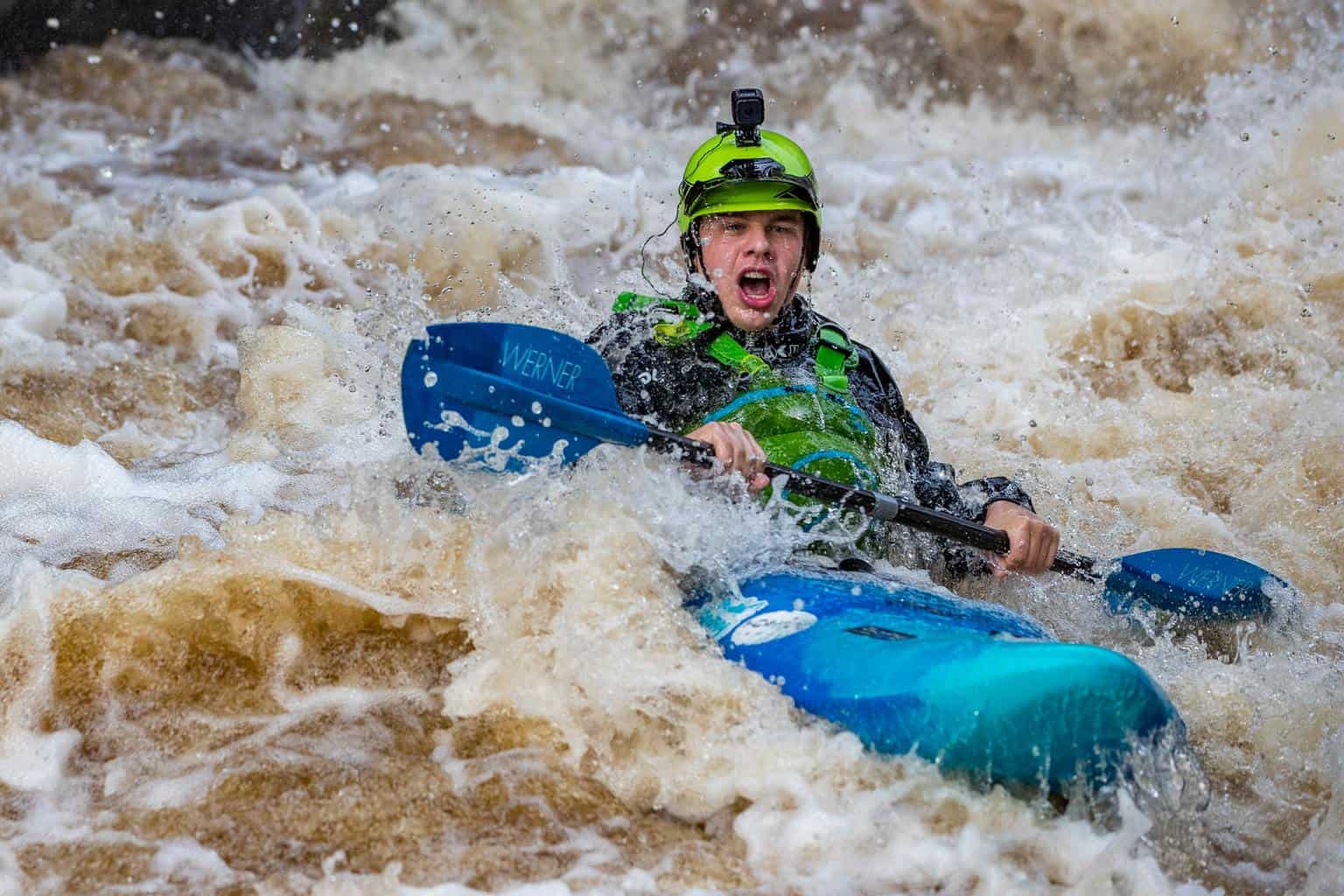
Will I Get Wet Kayaking? (Common Reasons & How to Stay Dry)
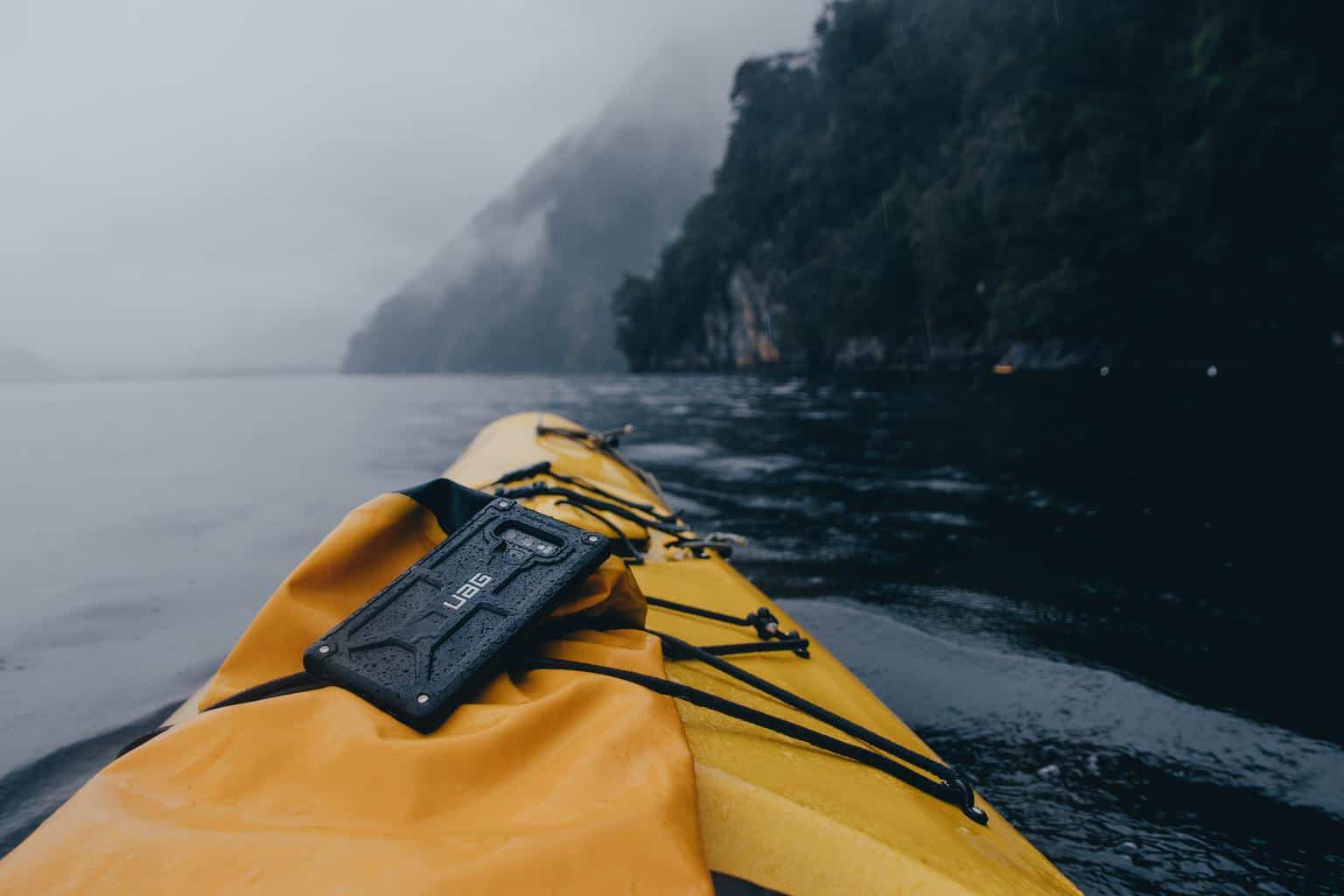
Should I Bring My Phone Kayaking? (7 Good Reasons)
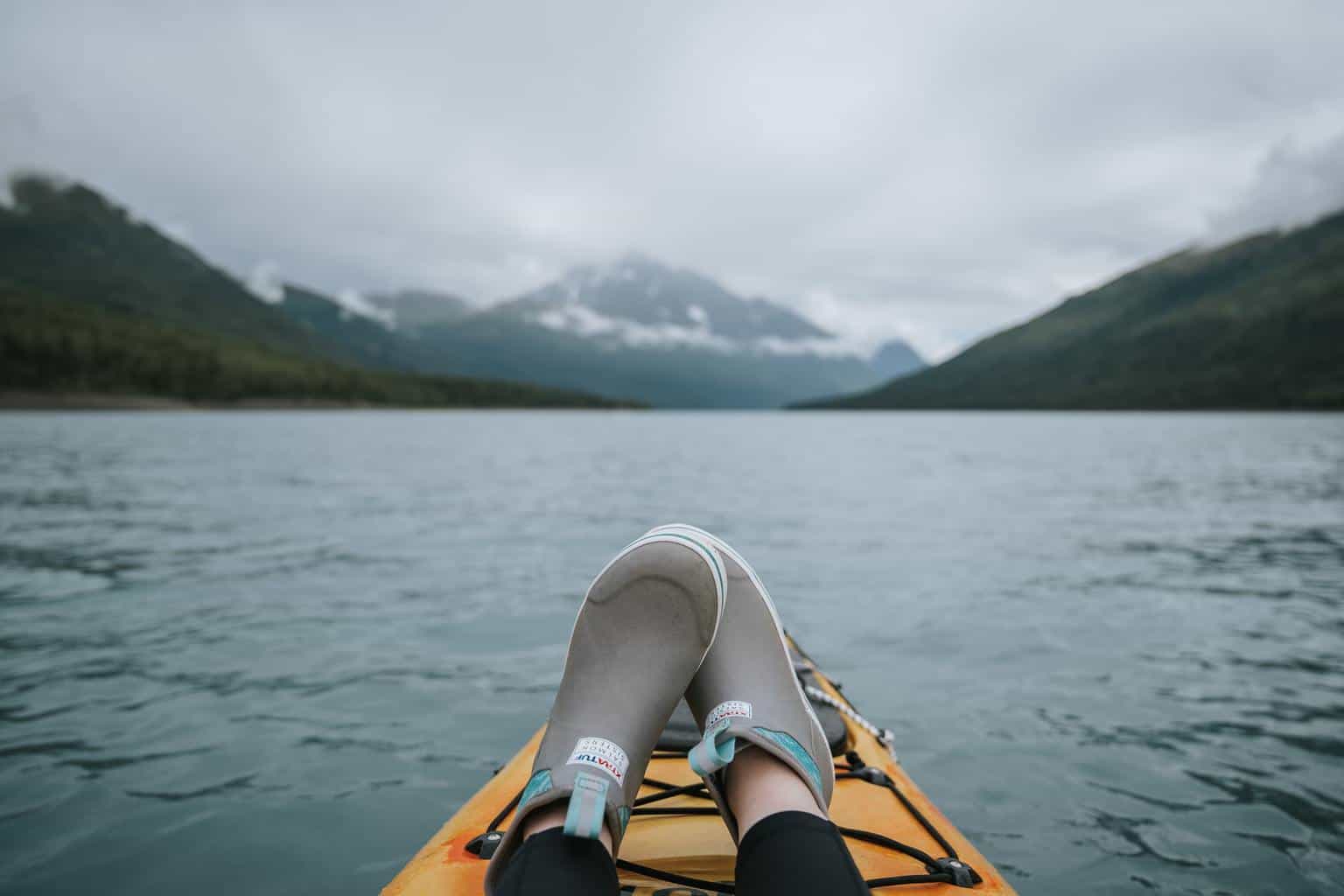
What Shoes to Wear Kayaking? (+ the Best Shoes for Your Needs)
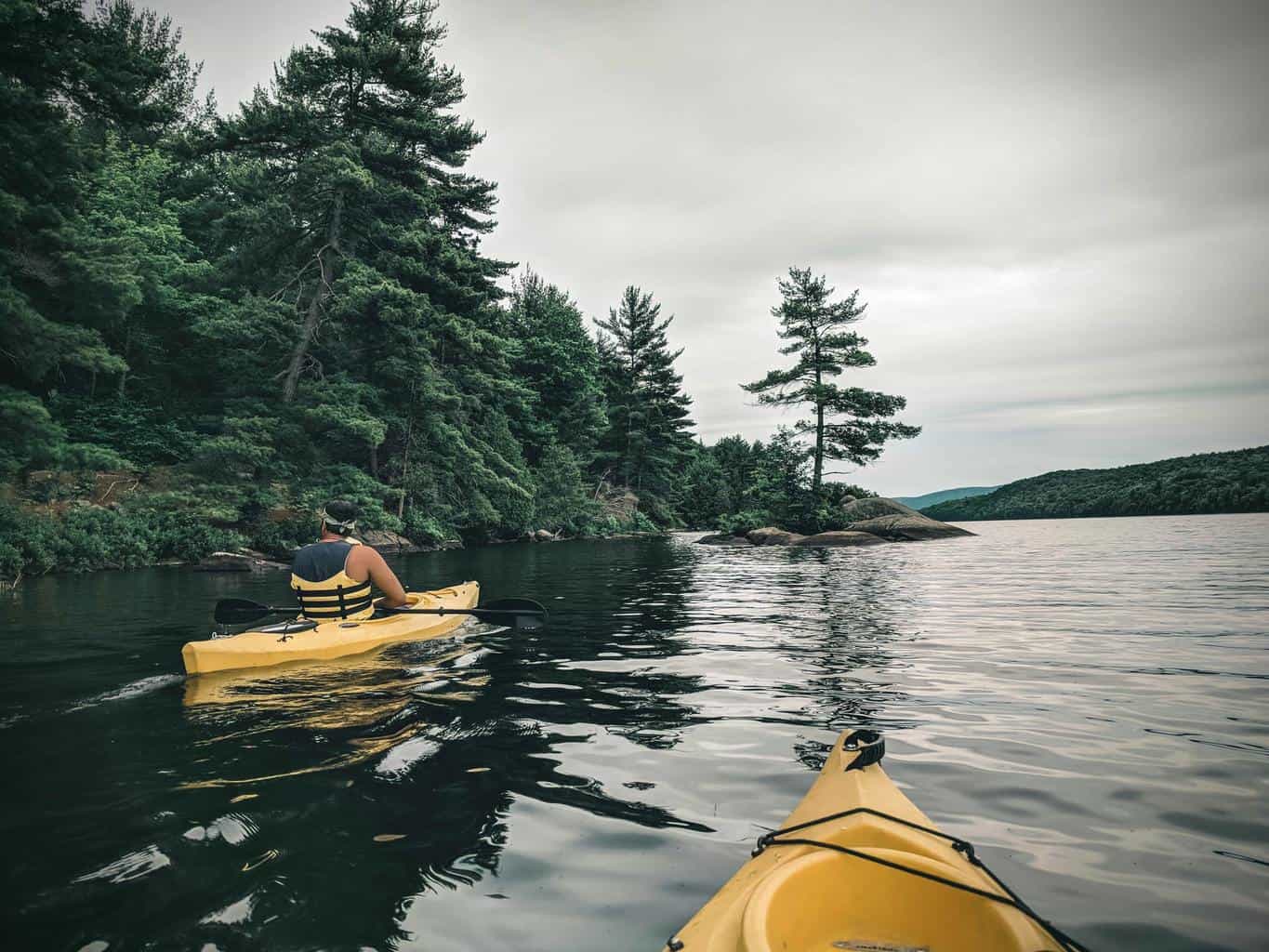
Can Kayaking Cause Chest Pain? (What Every Kayaker Should Know)
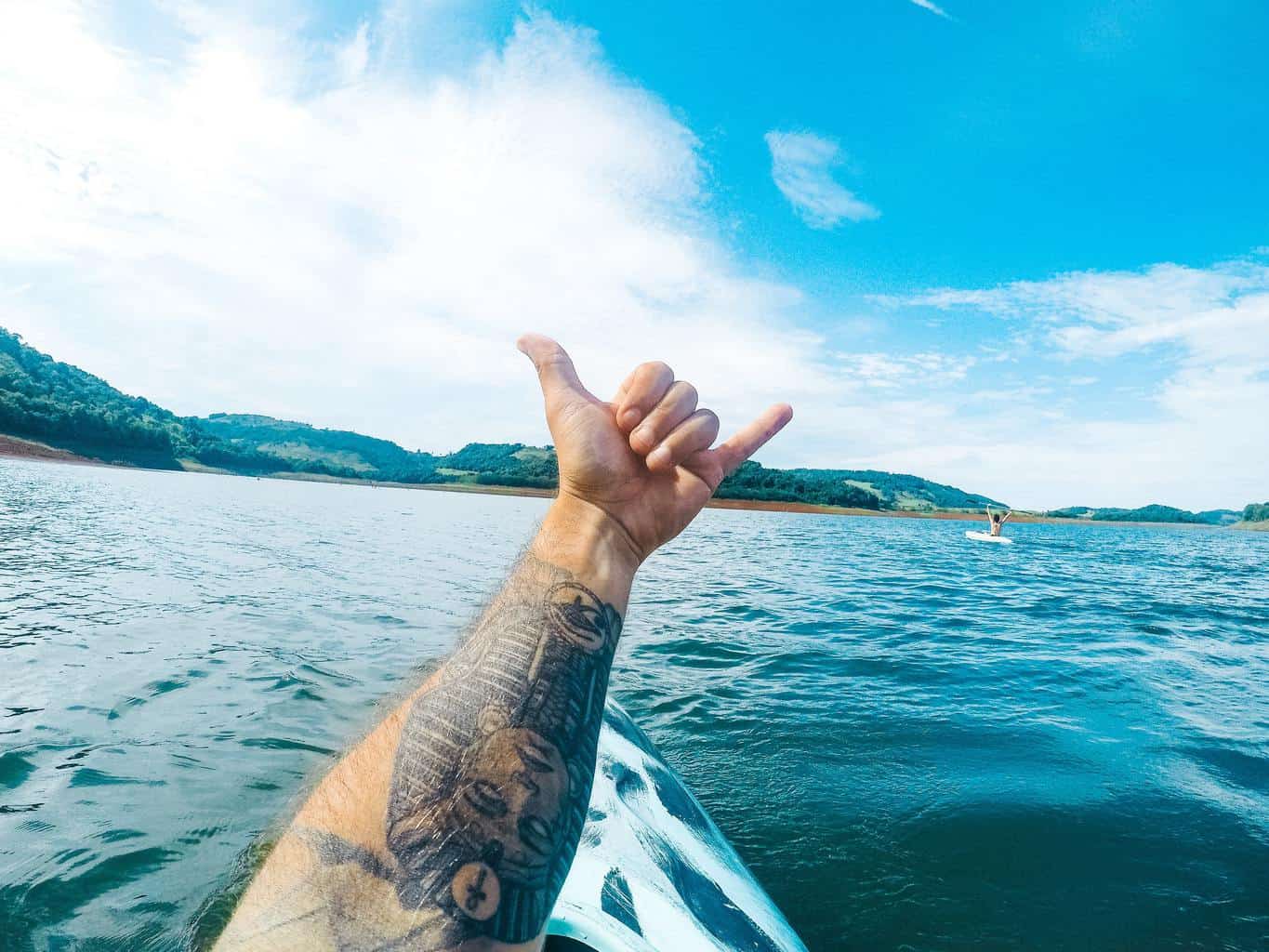
Can I Go Kayaking With a New Tattoo? (Facts You Should Know)
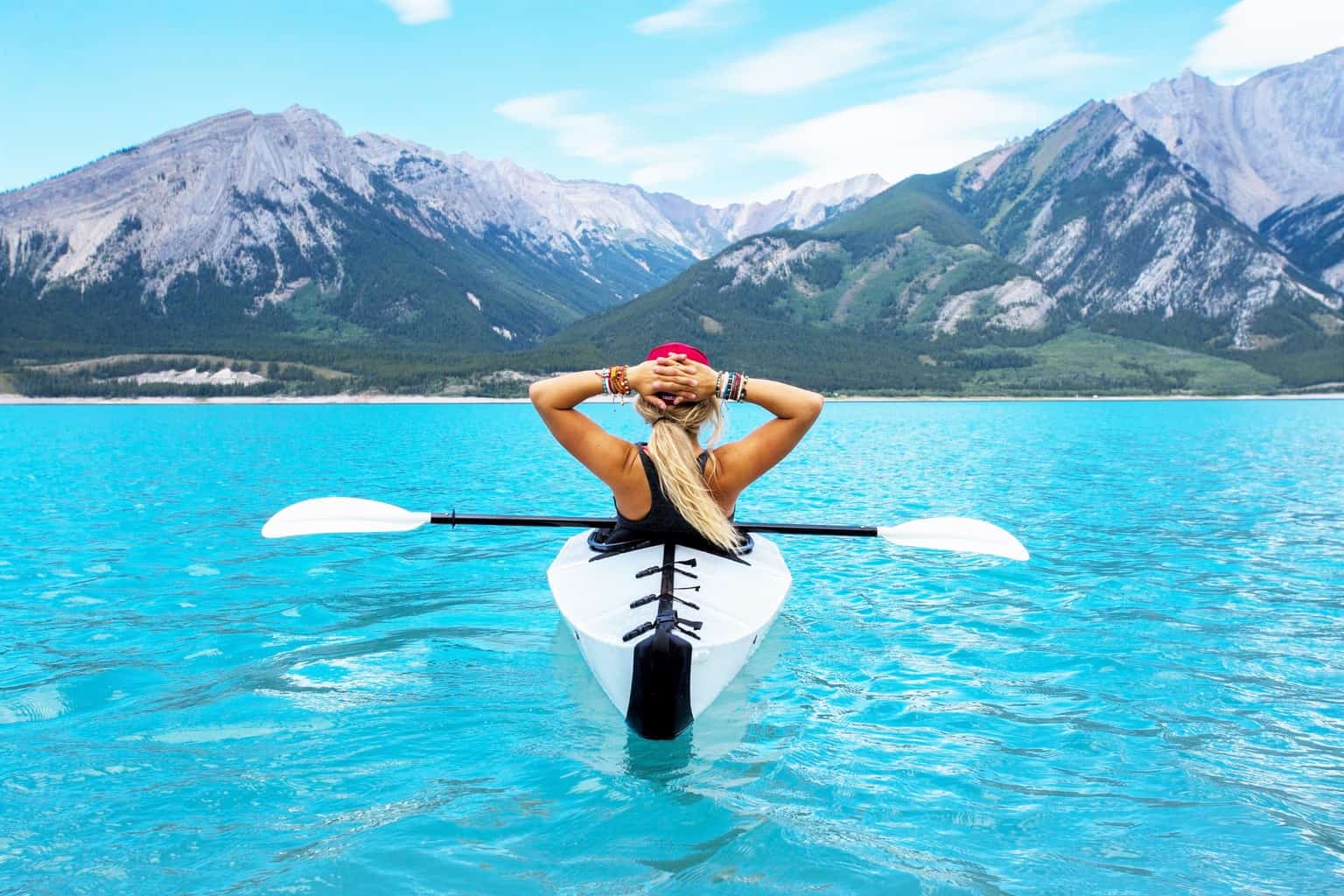
Can You Go Kayaking On Your Period? (+Practical Tips)
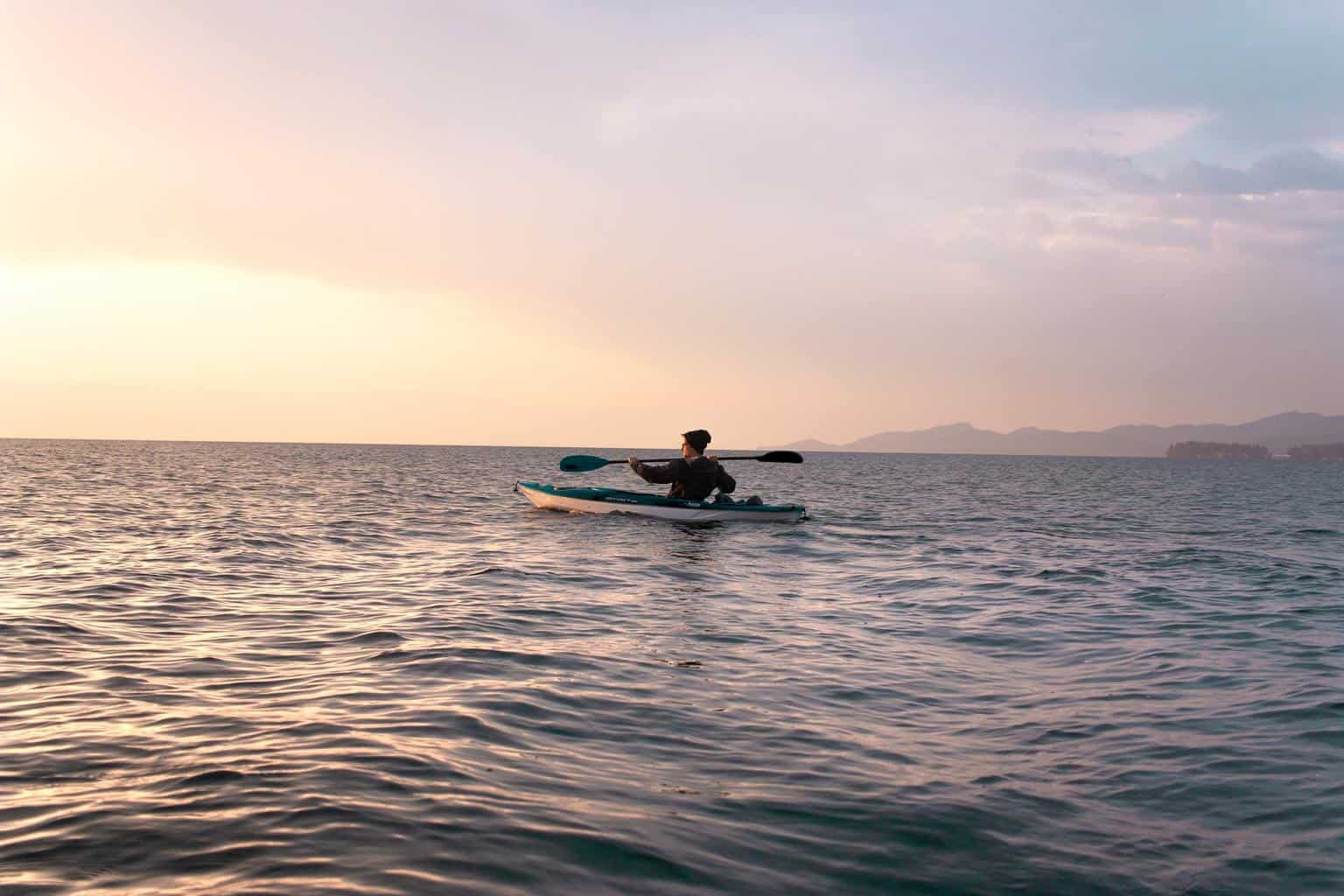
Can Kayaking Cause Hemorrhoids? (What Every Kayaker Should Know)
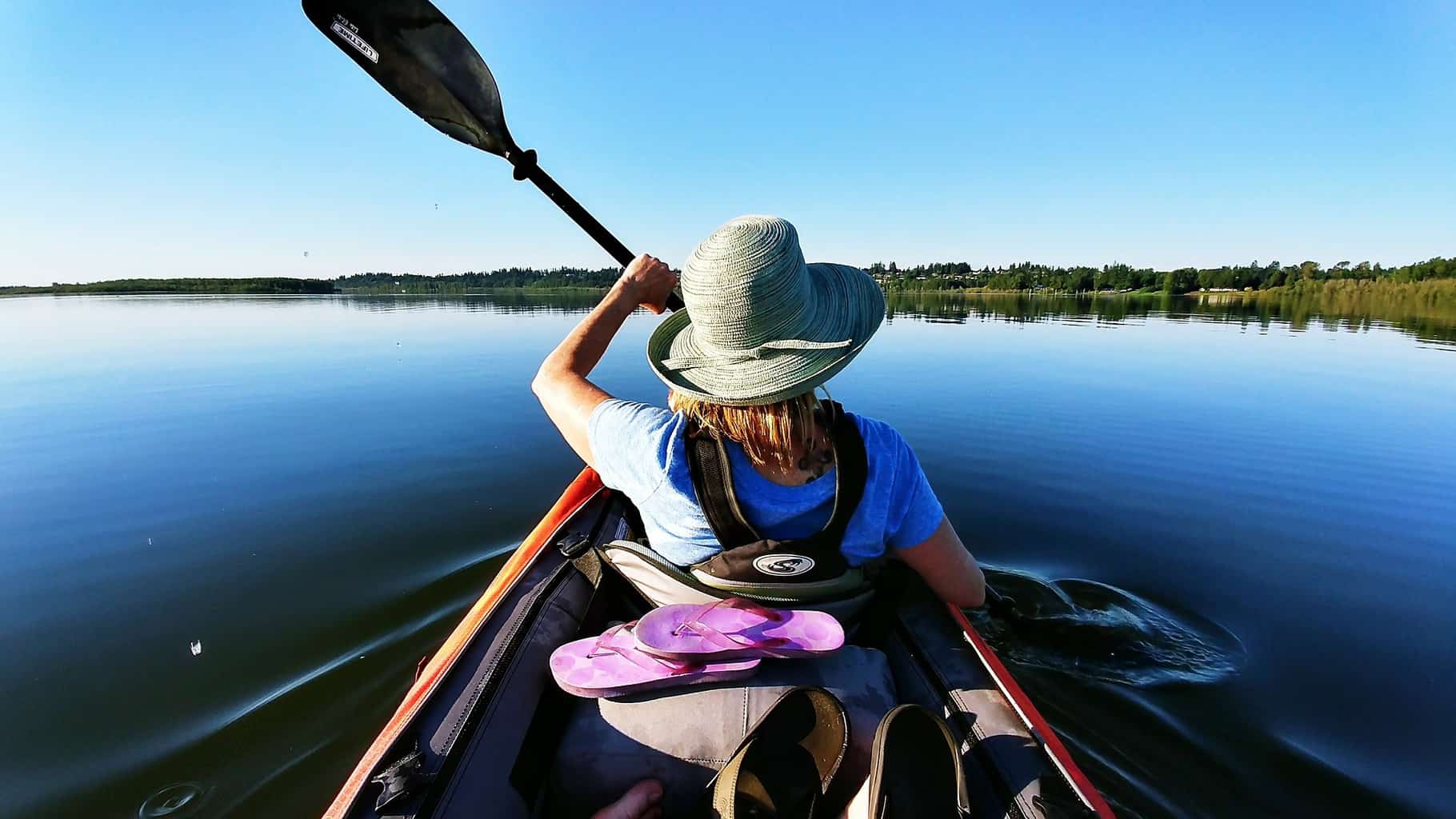
Can Kayaking Cause Tennis Elbow? (+8 Simple Tips to Avoid It)
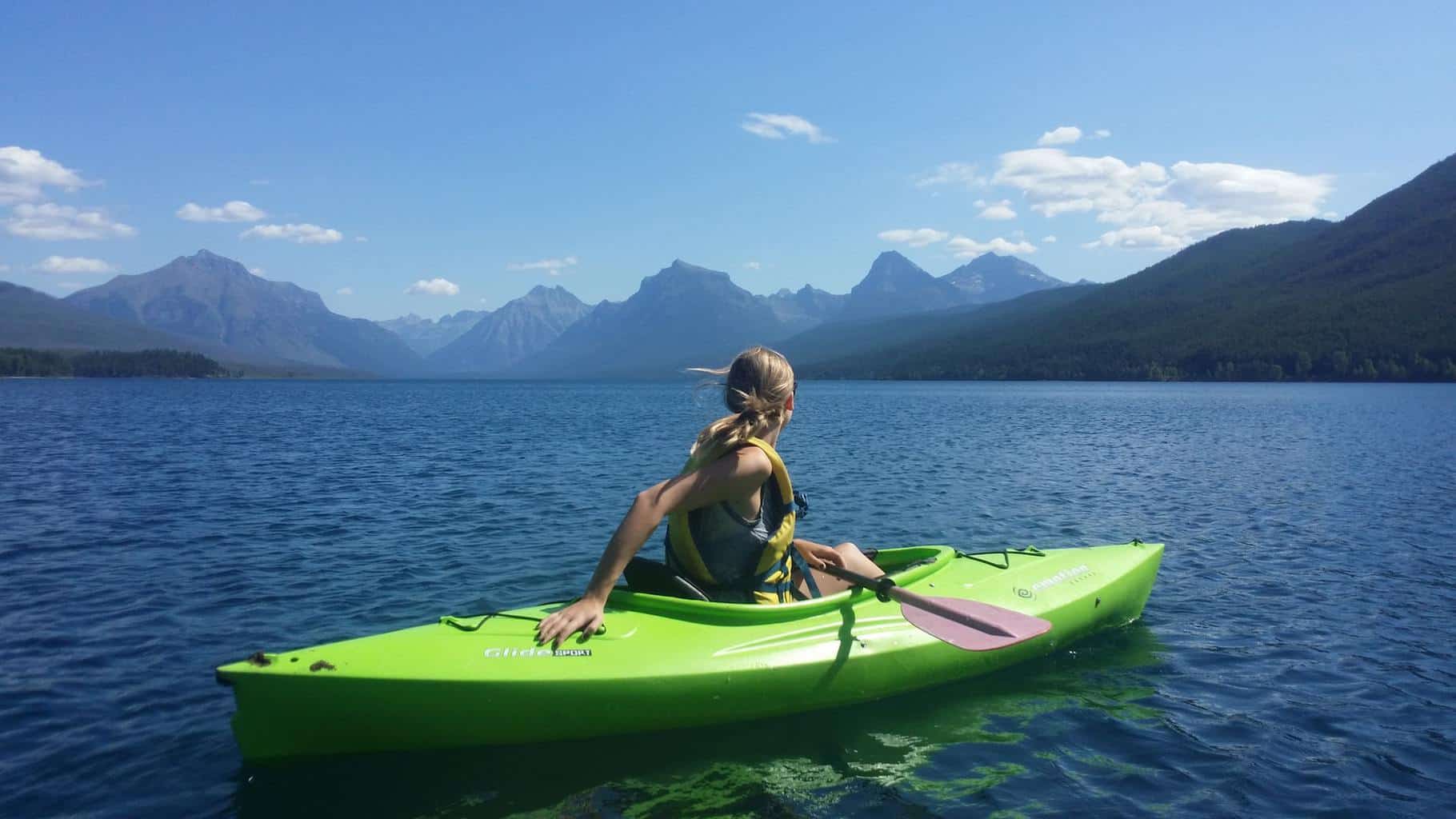
Can Kayaking Cause Sciatica? (+7 Tips to Avoid It)
Popular Articles:

Do Surfers Ride Switchfoot? 5 Benefits (& Why You Should Learn It)

Can You Drown Snorkeling? 11 Common Reasons (+Helpful Tips)

Can I Use Snorkeling Fins for Bodyboarding? Pros & Cons (+6 Tips)

What Colors to Avoid When Snorkeling? (& Which You Should Wear)

Do Surfers Shave Their Legs? 5 Common Reasons (+Pros & Cons)

How Do Scuba Divers Drink Water? 5 Possible Ways (+7 Tips)

How Long Can Scuba Divers Stay Underwater? (+9 Limiting Factors)

Do Surfers Wear Helmets? 8 Situations You Should Wear One (+4 Cons)

Do Surfers Poop in the Ocean? Myths & Facts (+5 Tips)

Is It Safe to Fly After Snorkeling? What You Should Know (+4 Tips)

Rowboat vs. Canoe: Which One Is Best for Fishing?
As an Amazon Associate, Modded gets commissions for purchases made through links in this post.
Fishing — one of humankind’s earliest pastimes. While it was once a primary food source , the ability to go grocery shopping has thankfully made fishing an activity of leisure rather than hunting. People are now free to enjoy time on the river without worrying about the need to come home with catches for the whole community. However, when you head out there’s still an essential choice to make — rowboat vs. canoe.
These two convenient vessels are a must for any solo or duo fishing trip. Their size makes them easy to transport or rent, with much lower costs than a massive motorized boat would have. Plus, since they’re nearly silent to move, there’s less of a chance you’ll scare the best fish away as you cruise through the water. While both boats have their merits, they may suit some needs better than others. Here’s the difference between the two and why you might choose one or the other.
The History and Typical Use of Rowboats
History’s earliest form of the rowboat came from Egypt somewhere around 7,000 years ago. Historians have found papyrus illustrating several gods transporting a man to the afterlife on a rowboat — or a barque — dating back to 1,000 B.C., along with the Khufu ship, which was either part of the Pharaoh’s fleet or for transporting him in death. Boat fanatics can make a special trip to Cairo to visit some of the first examples of water travel on Earth.
Ancient Egyptians used these boats for all kinds of transport. Though they later adapted to wooden sailboats, the rowboat once transported various items — food, building materials and even coffins. Naturally, these people needed a way to move goods up, down and across the Nile.
One very common rowboat nowadays is called the Whitehall. It came around as early as the 1500s , though many believe it gained its popularity sometime later. These sturdy vessels were used as workboats in England, then later came to the United States. Today, many of the boats are used for pleasure cruises, rowing contests, support during swimming competitions and exercise. They’re also often lighter for easier single-person launches and have a sliding seat for better rowing.
Unlike a canoe — a specific type of boat — several crafts could fit under the “rowboat.” You’ll likely be moving the vessel with one other person, so it’ll need to be relatively small. A good choice is a Class A boat , which comprises any vessel under 16 feet. People typically use boats like these for recreation — perhaps one of your buddies has a favorite craft he could recommend for fishing.
What Canoes Are All About
The canoe has a fascinating history. The Pesse canoe is the oldest watercraft ever found , likely over 10,000 years old. There’s actually no known inventor of the canoe since they are so old. It seems humans all over may have discovered the shape and run with it. Of course, the canoe does have associations with Native Americans and Canadians that are prudent to learn.
Like the ancient Egyptians, Native Americans used boats for many forms of transportation , especially in Canada. Migrating food meant they had to migrate as well, making the ability to traverse water essential. People accomplished this in one of two ways — crafting a dugout canoe or a framed one. As it sounds, a dugout canoe was made from a log people hollowed out to form a boat.
The second type took much more time. These ribbed canoes often utilized cedar, redwood and cypress trees to form the frame or the siding. The structure would then be encased in bark and strapped together with tree roots before the planks went on. These boats were most often used for hunting and transportation, but there is no known history to say people used them for pleasure cruises.
Of course, the canoe isn’t all ancient history. Plenty of Native people still use these for the same purposes their ancestors did, much like the rowboat. However, the canoe you’d pick up from the store won’t be a meticulously handcrafted vessel — it’ll likely be plastic. Modern commercial canoes aren’t exactly made with such care, but they’ll be there to cut through water easily in the same way.
Rowboat vs. Canoe — Which Is for You?
Canoes and rowboats both have great qualities — they have excellent stability, are portable and have the advantage of not being motorized. But if you’re more in the mindset of rowboat vs. canoe, here are a few things to consider.
There isn’t a specific kind of rowboat. While a canoe is actually a type of boat, a rowboat could be anything under 16 feet. You’ll need to narrow down your choices a bit more when looking for the perfect vessel for you. While canoe construction differed amongst Native tribes, if you ask for one at your local sporting goods store, the only questions you’ll likely need to answer are what material and size you want.
A standard rowboat will likely be wider than a canoe. While canoes were necessary to travel though rivers — giving them their narrow design — many rowboats could move through much wider spaces. If you intend to take a lot of stuff with you, you may want to go with something with a bit more surface area.
However, you can’t ignore the tactical advantage of the canoe. While the key difference between a rowboat vs. canoe is the shape and movement method — paddling vs. rowing — those variations give canoes a leg up. Its length will offer more room for you and a pal to fish in while also letting you cut through inland water with ease. There are even recent sea-worthy canoes that could give you the same advantage on open water.
That’s actually another significant differentiation — the intended use. Many rowboats will already be ready for the ocean, but you’ll have to find a specific canoe to hit those waves. Depending on where you’ll be setting out, you may need to be more picky.
Picking a Rowboat vs. Canoe
Both these ancient forms of water travel are excellent choices for your next fishing trip. When deciding between a rowboat vs. canoe, it all comes down to where you plan to make your catches. You might even learn a little history while you’re at it.
Stay up to date with the latest by subscribing to Modded Minute.
Stay up to date with the latest.
Your email address will only be used to send you our newsletter, and at any time you may unsubscribe. For more information, see our Privacy Policy .
Social Account
More from outdoors.

Surviving Moose Attacks: What You Need To Know Before Your Next Adventure

Proven Rock Climbing Techniques To Conquer Any Wall

Are Gorillas Endangered? A Case For Humans’ Closest Relatives

8 Prep Tips for Hiking the Highest Mountain in North America

Mountain Biking: A Comprehensive Guide

The Best Pet Snakes and Tips to Take Care of Them Safely

Drift Boat vs Rowboat. Design, Cost, Capacity & Use
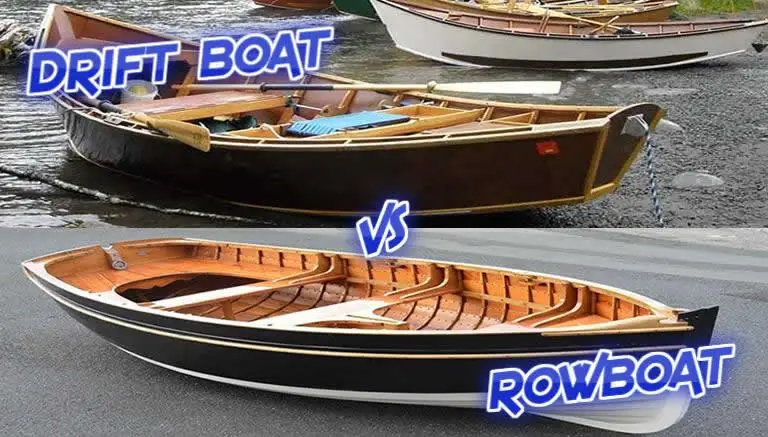
There are no more iconic fishing vessels on American waters than the traditional rowboat and the Oregon-born drift boat. Both are amazing fishing vessels, but in different ways. In this battle of the boats article we look at the drift boat vs the rowboat.
Drift boat basic characteristics
Rowboat basic characteristics, similarities of a drift boat and rowboat, differences between a drift boat and rowboat, drift boat fishing and river running (video), rowboat easily handling deep rough water (video), cost comparison between drift boats and rowboats, summary: rowboat vs drift boat, drift boat vs rowboat.
Drift boats are better for shallow and moving water, while rowboats are better for deep and still water.
Rowboats are v-hull fishing vessels that perform well in deep water.
They are unsuitable for shallow water use.
Drift boats are flat bottomed vessels that are excellent river runners.
They perform well in turbulent rivers with whitewater and rapids up to class IV. They are not the best choice for deep still water.
Although both the drift boat and the traditional rowboat are powered by oars they are very different vessels, with very different purposes.
Let’s take a look at the similarities and differences between these two iconic fishing vessels so you can see which one is a better fit for your individual needs.
A drift is an inland waterway vessel that is designed to be used in rivers.
Its flat bottom hull, with its distinctively curved shape , makes it perfect for river running in turbulent rivers.
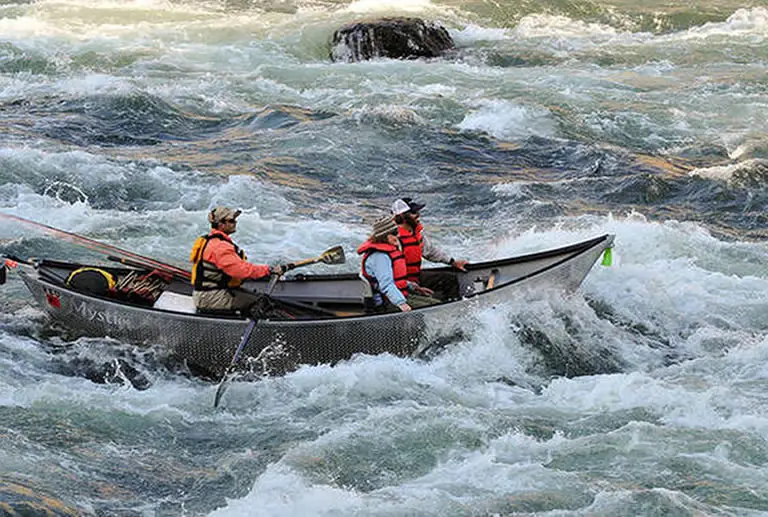
The drift boat evolved from the dory boat which was used in ocean bays for fishing, so it is a natural-born fishing vessel.
However, as the boat needed to be used in the turbulent rivers of Oregon, namely the Rogue River and McKenzie River, certain changes needed to be made to the basic hull design of the dory so the boat could handle whitewater and rapids.
Thus, the drift boat was born.
To learn more about the history and evolution of the drift boat read this article .
Although both a rowboat and a drift boat can be fitted with a trolling motor, a drift boat has very strict restrictions on how this can be done.
The size of motor and also the way the motor is mounted on the boat is of major concern.
It is essential you get the size and mounting correct when putting a motor on a drift boat as these flat bottomed inland vessels were never meant to be motorized. Adding mechanical propulsion to one must be done with care!
A rowboat is more of an open water vessel than a drift boat.
It is not designed for use on rivers.
The v-hull design of a rowboat makes it much more efficient for deep water use.
For the same reasons that this boat is more than capable of being used ocean water use, it is also capable of being used in deep lakes and ponds.
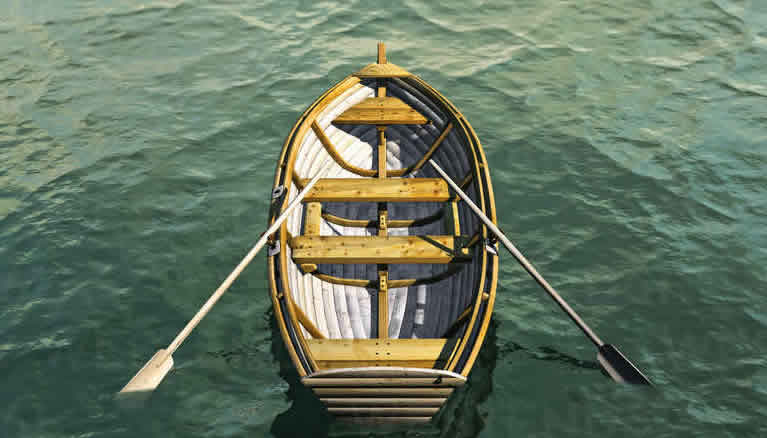
It is much easier to mount a motor on a rowboat as there are a lot less restrictions on its motorized use.
A rowboat handles well with a trolling motor mounted on it.
Both the drift boat and the rowboat are powered by manual propulsion.
Both are row boats that rely on oar power to get them moving.
Although the traditional rowboat has been used for various water-based activities, including as a lifeboat on larger vessels, it has always been a very successful fishing vessel.
Likewise, the drift boat is also a very popular fishing vessel but is used in a very different way from a rowboat and in very different environments, as I will explore in this article.
Although a rowboat and s drift boat look somewhat similar on first glance, they are very different boats with very different hull designs.
The main difference between a rowboat and a drift boat lies in the hull design.
This difference in hull shape makes these boats almost complete opposites.
To see how these boats differ I will cover each separately below before giving the advantages and disadvantages of each.
Advantages And Disadvantages Of Each Boat
Below are the advantages and disadvantages of each of these boat types.
As you will soon see, each boat performs better in specific marine environments while it remains totally unsuitable for other marine environments.
Drift boat pros & cons
The flat bottom, and shallow draft, hull of a drift boat makes it excellent for rivers where there are large areas of very shallow water.
Additionally, the boat is also capable of being used in some very turbulent river waters as its high sides and curved hull means it can deflect spray easily.
However, the boat’s shallow draft, flat bottom and high sides become a very distinct disadvantage in deep, open water.
A drift boat is not suitable for ocean use because it experiences stability issues in turbulent ocean waves.
Although it can easily handle up to class IV rapids it struggles in deep turbulent open waters.
It’s lack of secondary stability and flat bottom makes it difficult for the boat to remain stable in ocean waters.
Although a drift can be used on a lake , the same problems that make it unsuitable for ocean use make it uncomfortable to use in the deep open waters of a lake.
The high sides tend to catch the wind and it can be difficult to control the boat on still water, making fishing problematic.
This is not to say that a drift cannot be used for fishing.
A drift boat is a truly excellent fishing vessel but only when it is used in the correct way.
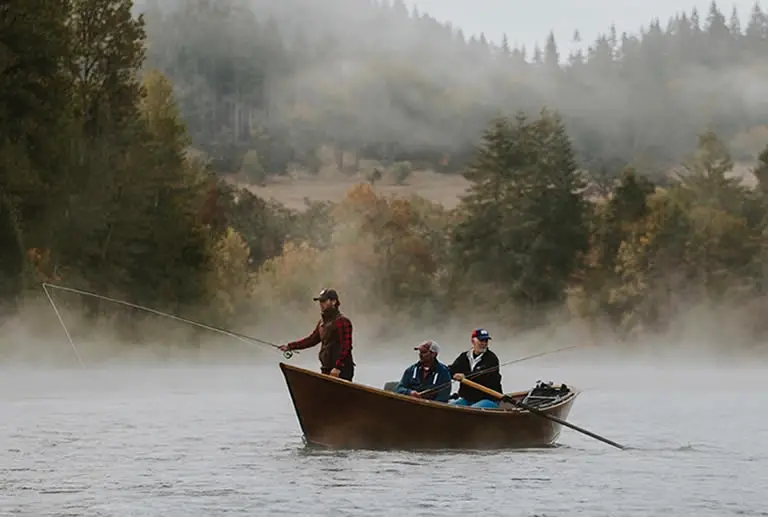
A drift boat is a “drifter” and performs at its best “on the move” even when fishing.
This is a very effective fishing method that nets a lot of catch and is known as drift boat fishing.
Drift boat fishing involves the boat moving continually upstream while the angler fishes downstream from a standing position at the bow of the boat.
Most drift boat fishing is done with a guide on a rental boat. This is because the activity requires an oarsman to control the boat while the angler casts off. Though almost all drift boat owners will also fish in this manner at some time.
Although you can fish off a stationary drift boat this will need a strong anchor hold and may even require double anchoring the boat . This is because the wind can catch the sides of a drift boat and jostle it around on the water making it unstable to stand on.
Although a great fishing vessel where a drift boat really excels is in turbulent rivers.
A drift boat was made to be a river runner and is one of the only traditional style boats that can keep up with a modern river running raft or kayak!
The drift boat has the ability to navigate class IV rapids and turbulent whitewater, and turn on a dime.
So it is not unusual to see drift boats, even wooden ones, being used to navigate rivers with canyon boulders and rapids that only rafts and whitewater kayaks are usually seen on.
However, it’s not all sunshine and roses.
Drift boats are difficult to row in still water and require physical effort to move upstream.
The flat bottom hull design does not lend itself well to moving through still water or moving against the current.
For this reason many people consider drift boats to be downstream vessels only.
Though this is not, strictly speaking, entirely true, rowing a drift in still water or upstream can be very tiring.
Rowboat pros and cons
Although powered by oars a rowboat is a very different vessel from a drift boat.
A rowboat has a v-hull that allows it to perform better in deep water.
It also gives the boat the capability of being used safely in ocean waters.
In deep waters a rowboat works excellently well for anglers who can cast off while remaining seated.
The v-hull design of a rowboat means it can handle choppy water very well but it is also a better choice for stationary fishing when compared to a drift boat.
Though most flat bottom boats offer better stability on still water, like a Jon boat for example, a drift boat differs.
Where wind will catch the sides of a drift boat and push the boat about on the water it will have little affect on the lower freeboard and v-hull of a rowboat.
Although the rowboat will rock more on still water than other types flat bottom vessels it is still a better choice than a drift boat.
A rowboat is much easier to row on still water than a drift boat.
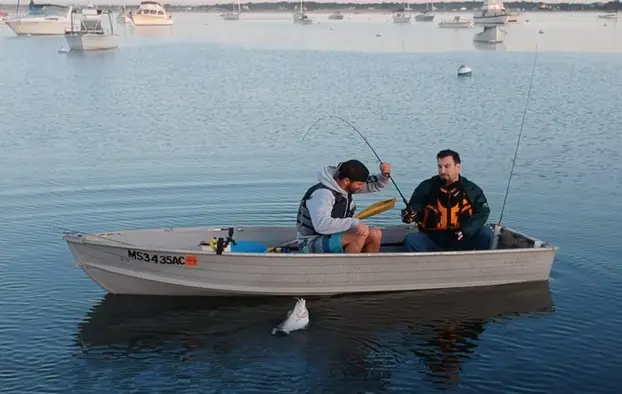
It is also easier to row upstream as the v-hull design of the boat means it cuts through the water better than the flat hull of a drift boat.
Of course there are disadvantages to using a rowboat as well.
A rowboat excels in deep water but it cannot be used in the type of shallow water a drift boat can be used in.
Hence, a rowboat is better for deep waters like ocean bays and lakes but is unsuitable for most rivers because its draft is too deep.
A drift boat’s flat bottom gives it the shallow draft that allows it access to very shallow water, even letting it slide over obstacles on the bottom.
The v-hull shape of a rowboat means it would run aground in the same water.
So when using a rowboat you must stick to fairly deep waters or at least avoid the shallows.
Both drift boats and rowboats can be very expensive, though drift boats costs considerably more.
Drift boats are very expensive costing from $8,000 up to about $24,000 for standard boats. When you start adding extras the cost goes up fast.
One way to reduce costs is to simply build the boat yourself. To see the cost of average cost of building a drift boat read this article .
If you want to know why you should build or buy a drift boat read this .
Traditional wooden rowboats are seriously pricey and can cost $20,000 or more, though you can get 12 – 14 foot aluminum rowboats for a few thousand dollars .
Aluminum drift boats are also popular.
Just be aware that of you purchase an aluminum rowboat you need to treat it with special chemicals if you intend to use it in saltwater.
Read our article about doing that on an aluminum Jon boat here .
Both boat types are considerably cheap to build.
With improvements in marine plywood and boat building supplies you can build either a drift boat or a rowboat for a fraction of the cost of a store-bought new one.
Just make sure you use the appropriate boat plans .
Rowboats are better for deep water and stationary fishing.
If you plan to use your boat in ocean bays and lakes then a rowboat is by far the best choice.
Just be sure to protect an aluminum rowboat from galvanic corrosion in saltwater.
The v-hull of the boat offers more stability in deeper waters while it, and the lower freeboard, gives the boater an easier time while stationary fishing.
A rowboat is also a lot easier to row in still water and upstream than a drift boat.
A drift boat requires real physical effort to row in still water and against the current.
If you plan to boat in rivers then the flat bottom, and shallow draft, hull of a drift boat is what you need.
A drift boat can handle almost any type of river water, even rivers with turbulent whitewater and class IV rapids.
Both boats work well for fishing, though in different marine environments and for different fishing styles.
Both boats can be used for recreational use, such as boat camping , although a drift boat usually wins out as a rowboat cannot be taken onto most rivers.
A rowboat is usually restricted to deep lakes and the ocean.
Both boats are expensive though you can build your own for a fraction of the cost with the correct boat building plans .
Mick McGrath
Recent Content
DIY Boat Restoration: Tips and Tricks for a Budget-Friendly Makeover
Restoring an old boat can be a rewarding and cost-effective way to breathe new life into a beloved vessel. While it may seem like a daunting task, with the right tips and tricks, you can embark on...
518 Illustrated Boat Plans
518 boat plans for less than the price of your lunch! MyBoatPlans Reviews MyBoatPlans is a comprehensive collection of 518 boat plans, 40 videos and about 500 pages of boat building guides. I've...
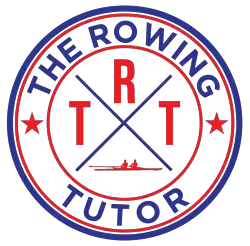
Rowing Boat and Canoe Difference: A Clear Explanation
Rowing boats and canoes are both small watercraft that are propelled by humans. They have been used for centuries for various purposes, including transportation, fishing, and recreation. Although they may look similar, there are several key differences between the two.

Fundamentally, rowing boats and canoes differ in their design and construction. Rowing boats are usually longer and narrower than canoes, with a pointed bow and stern. They are propelled by oars or sweeps , which are attached to the boat at the stern and rowed facing backwards.
Canoes, on the other hand, are typically shorter and wider than rowing boats , with a pointed bow and stern. They are propelled by a single-bladed paddle, which is held in both hands and used to alternate strokes on either side of the boat.
The techniques and propulsion used for rowing boats and canoes also differ. In rowing, the oars or sweeps are used to push the boat through the water, with the rower facing backwards. In canoeing, the paddle is used to pull the boat through the water, with the paddler facing forwards. Additionally, rowing boats are often used for racing, while canoes are often used for recreational paddling and exploring.
Table of Contents
Key Takeaways
- Rowing boats and canoes differ in their design and construction.
- Rowing boats are propelled by oars or sweeps while canoes are propelled by a single-bladed paddle.
- Rowing boats are often used for racing while canoes are often used for recreational paddling and exploring.
Fundamentals of Rowing Boats and Canoes
Design and Construction
Rowing boats and canoes are both small, narrow boats designed for use on calm waters. The main difference between the two is the method of propulsion. Rowing boats are propelled by oars, which are connected to the boat and used for propulsion. Canoes, on the other hand, are propelled using a paddle that is held by the person in the boat.
The design of rowing boats and canoes is also different. Rowing boats are typically longer and narrower than canoes, with a pointed bow and stern. Canoes, on the other hand, have a more rounded shape, with a wider beam and a flatter bottom. This design allows for more stability and maneuverability in the water.
Rowing boats and canoes can be constructed from a variety of materials, including fiberglass, plastic, aluminum, and Kevlar. Each material has its own advantages and disadvantages in terms of weight , durability, and cost.
Fiberglass is a popular choice for rowing boats and canoes because it is lightweight and durable. Plastic is also a good choice because it is inexpensive and easy to repair. Aluminum is a good choice for rowing boats because it is lightweight and strong. Kevlar is a more expensive option, but it is extremely strong and lightweight.
Material and Durability
The durability of rowing boats and canoes depends on the material from which they are constructed. Fiberglass and Kevlar are both strong and durable materials that can withstand a lot of wear and tear.
Plastic is also a durable material, but it is more prone to cracking and breaking than fiberglass or Kevlar. Aluminum is a strong material, but it can dent and scratch easily.
In terms of maintenance, rowing boats and canoes require regular cleaning and maintenance to keep them in good condition. Fiberglass and Kevlar boats should be washed with soap and water after each use to prevent damage to the finish. Plastic boats can be cleaned with a mild detergent and water. Aluminum boats should be washed with soap and water and then dried thoroughly to prevent corrosion.
Overall, rowing boats and canoes are both great options for exploring calm waters. The choice between the two depends on personal preference and the intended use of the boat. Whether you choose a rowing boat or a canoe, it is important to choose a boat that is well-constructed and made from durable materials.
Techniques and Propulsion
Paddling vs. Rowing
When it comes to techniques, paddling and rowing are two different methods of propulsion used in canoes and rowing boats respectively. Paddling involves the use of single-bladed paddles, with the paddler alternating strokes on either side of the canoe to propel it forward smoothly through the water. On the other hand, rowing boats utilize oars with two blades each, with the rower pulling on both oars simultaneously to move the boat forward.
In terms of direction, paddling is a more versatile method, allowing the paddler to change direction easily by simply changing the side of the canoe they paddle on. On the other hand, rowing boats require more skill to turn, with the rower needing to use a combination of oar strokes to change direction effectively.
Oars and Paddles
The main difference between paddles and oars is the way they are used for propulsion. Paddles are single-bladed and are held in the hand, with the paddler using a rotating motion to move the canoe forward.
Oars, on the other hand, are double-bladed and are attached to the boat, with the rower pulling on both oars simultaneously to move the boat forward.
Another key difference between paddles and oars is the position of the fulcrum. In paddles, the fulcrum is located at the top of the paddle, allowing the paddler to use a rotating motion to move the canoe forward. In oars, the fulcrum is located at the oarlock, allowing the rower to pull on both oars simultaneously to move the boat forward.
In terms of skill level, paddling is generally considered to be easier than rowing, with paddlers only needing to learn a few basic strokes to move the canoe effectively. Rowing, on the other hand, requires more skill and coordination, with rowers needing to learn a variety of different strokes to move the boat effectively.
Overall, while paddling and rowing are two different methods of propulsion, both are effective ways of moving canoes and rowing boats through the water. The choice between paddling and rowing ultimately comes down to personal preference and the specific needs of the paddler or rower.
Types and Purposes
When it comes to canoes and rowboats, there are various types and purposes for each vessel. Understanding the differences between them can help you choose the right one for your needs.
Recreational vs. Racing
Canoeing and rowing are both popular recreational activities, but they can also be competitive sports. Canoes and rowboats used for recreational purposes are generally wider and more stable than those used for racing. Racing canoes and rowboats are designed to be sleeker and faster, with less stability.
For those who are interested in racing, there are specific types of canoes and rowboats that are designed for competition. Racing canoes and rowboats are generally longer and narrower than recreational vessels, with a more pointed shape at both ends. They are also lighter and more fragile, making them unsuitable for recreational use.
Fishing and Camping
Canoeing and rowing are also popular activities for fishing and camping. Canoes and rowboats used for these purposes are generally wider and more stable than racing vessels. They are also designed to carry more weight, making them suitable for carrying fishing gear, camping equipment, and other supplies.
Fishing canoes and rowboats are designed with features that make them suitable for fishing. They may have built-in rod holders, storage compartments for tackle and gear, and comfortable seats.
Camping canoes and rowboats are designed with features that make them suitable for camping. They may have built-in storage compartments for camping gear, and they may be designed to be easily converted into a sleeping area.
Overall, canoes and rowboats are versatile vessels that can be used for a variety of recreational activities. Whether you’re interested in racing, fishing, camping, or simply enjoying a leisurely paddle, there is a canoe or rowboat that is right for you.
Performance and Handling
Speed and Maneuverability
When it comes to speed, rowboats tend to be faster than canoes due to their longer and narrower design, which allows them to glide through the water with less resistance. This is especially true for racing shells, which are specifically designed for speed and can reach impressive speeds when rowed by experienced athletes.
On the other hand, canoes are generally more maneuverable than rowboats, thanks to their wider beam and flatter bottom, which provides more stability and allows for easier turning and maneuvering in tight spaces.
Canoes are also more versatile than rowboats, as they can be used for a variety of activities, including fishing, camping, and leisurely paddling.
Stability and Comfort
When it comes to stability, canoes are generally more stable than rowboats, thanks to their wider beam and flatter bottom, which provides a more stable platform for paddlers. This makes canoes a great choice for beginners or those who are looking for a more relaxing and comfortable paddling experience.
Rowboats, on the other hand, can be less stable than canoes, especially racing shells, which are designed for speed and maneuverability rather than stability. However, rowboats can still be comfortable to row, especially if they are equipped with comfortable seats and footrests.
Overall, the choice between a rowboat and a canoe will depend on the individual’s preferences and needs. If speed and maneuverability are the top priorities, then a rowboat may be the better choice. However, if stability and comfort are more important, then a canoe may be the way to go.
Cultural and Recreational Significance

Rowing and canoeing are both popular water sports that have significant cultural and recreational significance. Both sports can be done for recreation or competition, and each has its unique benefits.
Recreational Significance
Rowing and canoeing are excellent recreational activities that can be enjoyed by individuals, families, and friends. They provide an opportunity to explore and sightsee in a unique way, allowing one to experience the beauty of nature from a different perspective.
Canoeing is especially popular for exploring calm lakes and rivers, while rowing is more commonly associated with competitive rowing sports such as crew races or sculling events.
Whitewater canoeing, on the other hand, is a more extreme form of canoeing that involves navigating through rapids and challenging whitewater conditions.
Cultural Significance
Rowing and canoeing have significant cultural significance in many parts of the world. In the UK, rowing is a popular sport that is deeply ingrained in the country’s cultural heritage.
The annual Oxford-Cambridge boat race is a prime example of this, where the two universities compete in a highly anticipated event watched by millions of people worldwide.
Similarly, canoeing has a rich cultural history in many indigenous communities around the world. Canoes were traditionally used for transportation, fishing, and hunting, and played a crucial role in the daily lives of many indigenous peoples. Today, canoeing is still an essential part of many indigenous cultures, and is often used for traditional ceremonies and celebrations.
Both rowing and canoeing have many benefits, both physical and mental. Rowing is an excellent full-body workout that can help improve cardiovascular health, increase muscle strength and endurance, and improve overall fitness levels. Canoeing, on the other hand, is a low-impact activity that can help reduce stress and anxiety, improve balance and coordination, and provide a sense of relaxation and tranquillity.
In conclusion, rowing and canoeing are two popular water sports that have significant cultural and recreational significance. Each sport has its unique benefits and can be enjoyed by individuals, families, and friends alike.
Knots & Thoughts

Navigating the Waters: A Guide to Choosing Between Row Boats and Canoes
When it comes to small watercraft, there are many options to choose from, including row boats and canoes. These two types of boats are popular for recreational activities such as fishing, exploring, or simply enjoying a day on the water. However, there are some key differences between the two that may influence your decision on which one to choose.
One of the main differences between row boats and canoes is the way they are propelled through the water. Row boats are propelled by oars, which are long poles with flat blades on the end that are used to push against the water. The direction of travel is determined by the way the oars are positioned and the angle at which they are used. Row boats are typically used on flat water, such as a calm lake or river, and are ideal for longer distances.
Canoes, on the other hand, are propelled by paddles, which are shorter and have a blade on only one end. Canoe paddles are held with both hands and are used to alternate sides to move the canoe forward. Canoes are also typically used on flat water, but they are more agile and faster than row boats, making them a good choice for exploring or racing.
When it comes to stability, row boats are generally more stable due to their wider, flatter hulls and the fact that they sit lower in the water. This makes them a good choice for activities such as fishing, as you have more room to move around without tipping over. It’s a good idea to always wear a personal flotation device (PFD) when boating, and this is especially important in a row boat where the risk of falling overboard is higher.
Canoes, on the other hand, have narrower, more pointed hulls and sit higher in the water, which makes them less stable. This can be a disadvantage if you plan to do activities such as fishing, as you have less room to move around without tipping over. However, the narrow hull and high seat position of a canoe also make it more agile and faster in the water, which can be an advantage for activities such as exploring or racing.
One of the main differences between row boats and canoes is their capacity for passengers and gear. Row boats tend to have more room and can often accommodate several people, as well as space for coolers, fishing gear, and other supplies. Canoes, on the other hand, tend to have less room and are generally limited to two or three people, depending on the size of the canoe. They also have less space for gear, although some models do have storage compartments in the middle or back of the boat.
In terms of maintenance, both row boats and canoes require some basic care to keep them in good condition. However, row boats generally require more maintenance due to their complex propulsion system and the fact that they are often made of wood, which requires more upkeep. Canoes, on the other hand, are typically made of more durable materials such as fiberglass or plastic, which require less maintenance.
There are also different types of row boats and canoes to choose from, depending on your needs and preferences. Drift boats, for example, are a type of row boat that is specifically designed for fishing in fast-moving water. These boats have a flat bottom and a sliding seat that allows the rower to adjust their position for better balance and control.
Another type of row boat is the sweep-oar boat, which is similar to a traditional rowing boat but has longer oars that are used to steer the boat from the back. These boats are often used for team rowing and are popular in competitions.
Canoes also come in different styles and sizes, including solo canoes, which are designed for a single person, and tandem canoes, which are designed for two people. Tandem canoes are a good choice if you plan to go on a long trip or if you want to bring a lot of gear with you. Some canoes also have a center seat that can be used for a child or for extra gear storage.
One of the most obvious differences between row boats and canoes is the size of the boat. Row boats are typically larger and heavier than canoes, which can make them more difficult to transport and store. Canoes, on the other hand, are generally smaller and lighter, making them easier to transport and store.
In terms of construction materials, both row boats and canoes can be made from a variety of materials such as wood, fiberglass, or plastic. Wood is a traditional and aesthetically pleasing material for boats, but it requires more maintenance and is more prone to rot and damage. Fiberglass is a durable and low-maintenance material that is often used for canoes, but it is also more expensive. Plastic is a budget-friendly and low-maintenance material that is often used for both row boats and canoes, but it is not as durable as fiberglass.
In addition to traditional row boats and canoes, there are also other types of small watercraft to consider, such as stand-up paddleboards (SUPs) and kayaks. Stand-up paddleboards are a type of board that you stand on and use a single-bladed paddle to propel yourself through the water. Kayaks are narrow boats that you sit in and use a double-bladed paddle to propel yourself through the water.
Stand-up paddleboards and kayaks offer many of the same benefits as row boats and canoes, but they have some key differences as well. Stand-up paddleboards are generally more stable than kayaks due to their wide, flat bottom, but they are also slower and less agile. Kayaks are narrower and faster than stand-up paddleboards, but they are also less stable and require more skill to maneuver.
There are also different styles of kayaks to choose from, including sit-on-top kayaks, which are more stable and easier to get in and out of, and traditional kayaks, which are faster and more agile but also more difficult to get in and out of. Inflatable kayaks are another option that are easy to transport and store, but they are not as durable as traditional kayaks.
Overall, there are many different types of small boats to choose from, each with their own unique benefits and drawbacks. Row boats and canoes are popular choices for recreational activities such as fishing, exploring, or simply enjoying a day on the water. The main differences between the two are the way they are propelled, their stability, capacity, and maintenance requirements.
One other key difference to consider when choosing between a row boat and a canoe is the type of paddle used. Row boats use oars, which are long poles with flat blades on the end that are used to push against the water. Oars are typically used on flat water, such as a calm lake or river, and are ideal for longer distances.
Canoes, on the other hand, use paddles, which are shorter and have a blade on only one end. Canoe paddles are held with both hands and are used to alternate sides to move the canoe forward. Paddles are generally used on flat water, but they are also suitable for use in mild whitewater.
When choosing a paddle for your row boat or canoe, it’s important to consider the size and style of the paddle, as well as the type of water you plan to use it in. Paddles come in different lengths and widths, and the best size for you will depend on your height, strength, and the type of boat you are using.
Paddles also come in different styles, including single-bladed paddles, which are generally used for canoeing, and double-bladed paddles, which are generally used for kayaking. Single-bladed paddles are held with both hands and are used to alternate sides to move the canoe forward. Double-bladed paddles are held with one hand and are used to pull the kayak through the water.
In addition to traditional paddles, there are also other types of paddles to consider, such as stand-up paddleboards (SUPs) and kayaks. Stand-up paddleboards are a type of board that you stand on and use a single-bladed paddle to propel yourself through the water. Kayaks are narrow boats that you sit in and use a double-bladed paddle to propel yourself through the water.
Overall, there are many different types of small boats and paddles to choose from, each with their own unique benefits and drawbacks. Row boats and canoes are popular choices for recreational activities such as fishing, exploring, or simply enjoying a day on the water. The main differences between the two are the way they are propelled, their stability, capacity, and maintenance requirements.
When deciding which type of boat is right for you, it’s important to consider your specific needs and preferences, as well as the type of activity you plan to use the boat for. Whether you are a seasoned boating enthusiast or a beginner, there are many great ways to enjoy the water, and the right boat can make all the difference.
You might also check out our post: How to Choose the Best Kayak Sail for Your Next Adventure
Share this:
Leave a reply cancel reply.

- Already have a WordPress.com account? Log in now.
- Subscribe Subscribed
- Copy shortlink
- Report this content
- View post in Reader
- Manage subscriptions
- Collapse this bar

IMAGES
COMMENTS
Row Boat vs Sailboat: Which is the Better Choice? December 7, 2023 by Dan Higgins. Row boats and sailboats are two of the most popular watercraft used for recreational and sporting activities. While both types of boats have their pros and cons, choosing between the two depends on various factors such as the intended usage, design and structure ...
They offer three sailboats that you can row, which include the Norseboat 12.5, 17.5 Classic, and the 21.5. Each boat offers unique features that can suit any sailor's tastes. They all are well built and are fast, but the size could make the biggest difference. The prices range from $13,000 to $35,000 depending on size and features.
The primary difference between a rowing boat and a rowboat is the type of oars used. Rowing boats use a single oar on one side of the boat, while rowboats use two oars, one on each side of the boat. The oars used in rowing boats are typically longer and narrower than those used in rowboats, allowing for a longer stroke.
What is a rowboat? Rowboats, as opposed to canoes and kayaks, are propelled by oars that are held in place at a pivot point attached to the boat, the oarlocks (also called rowlocks). These pivot point do not change their position as the boat is rowed. This pivot point is a fulcrum if the oar is a lever. Rowers typically face the stern of the boat.
A rowboat is a boat that has oars and rows instead of using an engine or motor. These boats are used for fishing, hunting, racing, water skiing, and other activities. A rowboat is made of wood and has an aluminum or wooden frame. The outside is covered with fiberglass, plastic, or canvas.
The term "gentleman's rowboat refers to a light-built boat designed for recreational rowing. Touring rowboats are now the norm. Smaller, lighter, and more maneuverable than a traditional rowing skiff. In the earlier days, the oarlocks were fastened to the gunwales; today, they are attached to the outriggers of the boat with sliding seat rigs.
Rowing vs Sailing. Differentiating Factors: Sailing vs. Rowing. Power Source: The fundamental distinction between sailing and rowing lies in their power sources. While sailing relies on the wind's force captured in the sails, rowing depends on the rowers' muscular effort. Consequently, sailing is more susceptible to weather conditions, as ...
In a rowboat you use a set of two oars, connected to the boat in oarlocks to row your boat. When you paddle a canoe you face toward your destination. When you row a boat you (usually) face the stern, or rear, of the boat with your back toward your destination. Finally, rowboats have a square stern, whereas canoes are symmetrical in their ...
A lighter paddle is better for a long trip. A flexible paddle works well in flat water while a stiff paddle is better for whitewater trips. A rowboat uses two oars that are attached to both sides of the boat. The oar locks keep the oars in place. A row boat's oars are larger than a canoe paddle.
Single sculls are the smallest type of rowing boats, designed for one person. They are usually around 27 feet long and weigh around 30 pounds. They are the most common type of racing boat and are used in the Olympic Games. Single sculls are also popular for recreational use, as they are easy to handle and transport.
The coxless quad usually requires one of the athletes to steer with their foot, while the coxed quad uses a coxswain to steer. The coxed quad is typically only used in rowing for beginners or juniors. Octuple scull: This type of boat is very rare, as only beginners typically use it.
Larger traditional rowing boats have multiple oarsmen, each using one oar held by both hands. Examples are whaleboats and gigs. Whaleboats are about 28 feet long and 6 feet beam and had three pairs of oarsmen using one oar each. The oars vary in length between 16 and 18 feet. Pilot gigs are about 32 feet long with 4-1/2 foot beam and have six ...
3) Racing Kayaks/Surf Skis. The double blade paddle offers excellent performance, and speed is only slightly slower than sculling (sliding seat rowing) when using high performance craft. When conditions get rougher, kayaks and surf skis will outperform a rowing shell. High performance kayaks and surf skis are almost identical in speed, while ...
Fixed-Seat Rowboat: Serenity in Simplicity Fixed-seat rowboats offer uncomplicated joy. They promise stability and leisure, beckoning us to relish the water's embrace at our pace. Whitehall Rowboat: Tradition Redefined Whitehall rowboats, reminiscent of timeless beauty, meld rowing and sailing seamlessly. With their double-ended grace, they ...
A rowboat may look almost similar to a canoe, but instead, the occupants use oars to propel through the water. A rowboat can be used by one or several people, each with a set of two oars attached through a pivot point on the vessel, which acts as a lever. When rowing a boat, the occupant faces the stern with the back towards the destination.
1. They Both Use Different Equipment. The most obvious difference between the two is clear from just looking at how boaters propel their watercraft. Oars are used for rowing, and these have a long handle with a flat blade on one end. Paddles are used for kayaking, and they can have one or two blades.
A rowboat is better suited to deep waters, like the ocean, and is a good fit for deep inland waterways that experience rough water and choppy waves. They cannot access shallow water areas. Decisions, decisions. Jon boat vs rowboat. Either a Jon boat or a rowing boat would be a good pick for recreational or utility boating.
Burton Water Sports manufactures two types of boats: pontoon boats and fishing boats. Pontoon boats are the most popular type of boat manufactured by Burton Water Sports. They are popular because they are stable, comfortable, and versatile. Pontoon boats can be used for recreation, fishing, or even as a water taxi.
They're also often lighter for easier single-person launches and have a sliding seat for better rowing. Unlike a canoe — a specific type of boat — several crafts could fit under the "rowboat.". You'll likely be moving the vessel with one other person, so it'll need to be relatively small. A good choice is a Class A boat, which ...
18 (a) A power driven vessel underway shall keep out of the way of: (i) a vessel not under command; (ii) a vessel restricted in her ability to manoeuvre; (iii) a vessel engaged in fishing; (iv) a sailing vessel. Rule 18 means that oar or paddle powered boats must keep out of the way of. all the types of vessel listed above.
Drift Boat vs Rowboat. Drift boats are better for shallow and moving water, while rowboats are better for deep and still water. Rowboats are v-hull fishing vessels that perform well in deep water. They are unsuitable for shallow water use. Drift boats are flat bottomed vessels that are excellent river runners.
Rowing boats and canoes are both small, narrow boats designed for use on calm waters. The main difference between the two is the method of propulsion. Rowing boats are propelled by oars, which are connected to the boat and used for propulsion. Canoes, on the other hand, are propelled using a paddle that is held by the person in the boat.
Another type of row boat is the sweep-oar boat, which is similar to a traditional rowing boat but has longer oars that are used to steer the boat from the back. These boats are often used for team rowing and are popular in competitions. Canoes also come in different styles and sizes, including solo canoes, which are designed for a single person ...